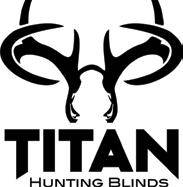








exas has had another dry year. We just can’t get caught up on rainfall. The dry weather is hard on deer, turkey, and other wildlife that live on the ground, but doves do quite well during drought, and teal season will open to conditions that are questionable for ducks. So, the dog days of summer will be dry and hot for both man and beast.
On July 4, we will celebrate our 249th year of independence from England, and things could be better than the weather. Our nation’s economy is floundering with a national debt of $36 trillion—that’s with 12 zeros—and the new administration is trying to get us back on an even keel with the rest of the world. Our two-party system despises each other. Times have been much better.
Texas Trophy Hunters’ 50th anniversary is in full swing, with the exciting Hunters Extravaganzas coming in August. Folks who love the outdoors and hunting look forward to the trade shows in Houston, Fort Worth and San Antonio that have everything for hunting, fishing, and camping. The venue aisles are full of the best in outdoor equipment, and the kids enjoy all the things that make kids happy. The Extravaganzas make the dog days of August more enjoyable for the whole family. Dove season is just around the corner, so it would be wise to start looking for a good buy in shotgun shells and other things you will need for dove hunting. You might even want to call the landowner where you hunt and invite the family out to dinner. Dove hunting spots are not easy to get, and you shouldn’t take your dove hunting for granted. And the coming Extravaganzas are the perfect place to gear up for the hunting seasons.
Texas has a lot of “Texotics,” and late summer is a good time to hunt for axis, nilgai, aoudads, and marauding wild hogs. Many hunters take advantage of the offseason hunts, and exotics and hogs are there for the taking. Guided hunts for nilgai are available in South Texas, axis are plentiful in many Hill Country counties, and aoudads offer good hunting in the Hill Country, West Texas, and the canyon areas of the Panhandle. Any hunts should be well planned for summer heat, with a wise choice of heavier caliber rifles for nilgai and aoudad.

July and August are good times to clean up the deer camp and get deer blinds ready for the coming deer season. Wood needs cutting, blinds need repairing and cleaning, brush needs cutting for shooting lanes, and it’s not too early to clean out the wasp nests. While you’re at your favorite hunting spot, you may want to check your rifle for proper sight-in.
The old adage that “dog days of summer just hold the year together” is true only if you have nothing to do to keep you busy during the hot days. Enjoy the holiday and think of all the good things you can do to make ready for the fall hunting seasons. Kids can find a swimming hole, and it’s not too late in the year to cut a watermelon with friends and neighbors.
Horace Gore
info@ttha.com
Founder Jerry Johnston
Publisher Texas Trophy Hunters Association
President and Chief Executive Officer Christina Pittman • christina@ttha.com
Editor Horace Gore • editor@ttha.com
Graphic Designers Faith Peña
Dust Devil Publishing/Todd & Tracey Woodard
Contributing Writers
Dustin Catrett, Tret Darr, John Goodspeed, Parker Hause, Judy Jurek, Bob Newland, Jack Orloff, Eric Stanosheck
Advertising Production
Debbie Keene 210-288-9491 deborah@ttha.com
Sales Representative Tristan Summy 210-685-1205 tristan@ttha.com
Marketing Manager Logan Hall 210-910-6344 logan@ttha.com
Assistant Manager of Events
Jennifer Beaman 210-640-9554 jenn@ttha.com Events Natasha Delgado 210-512-8045 natasha@ttha.com
Finance & Administration Manager Laura Garcia 210-512-4927 laura@ttha.com
To carry our magazine in your store, please call 210-288-9491 • deborah@ttha.com







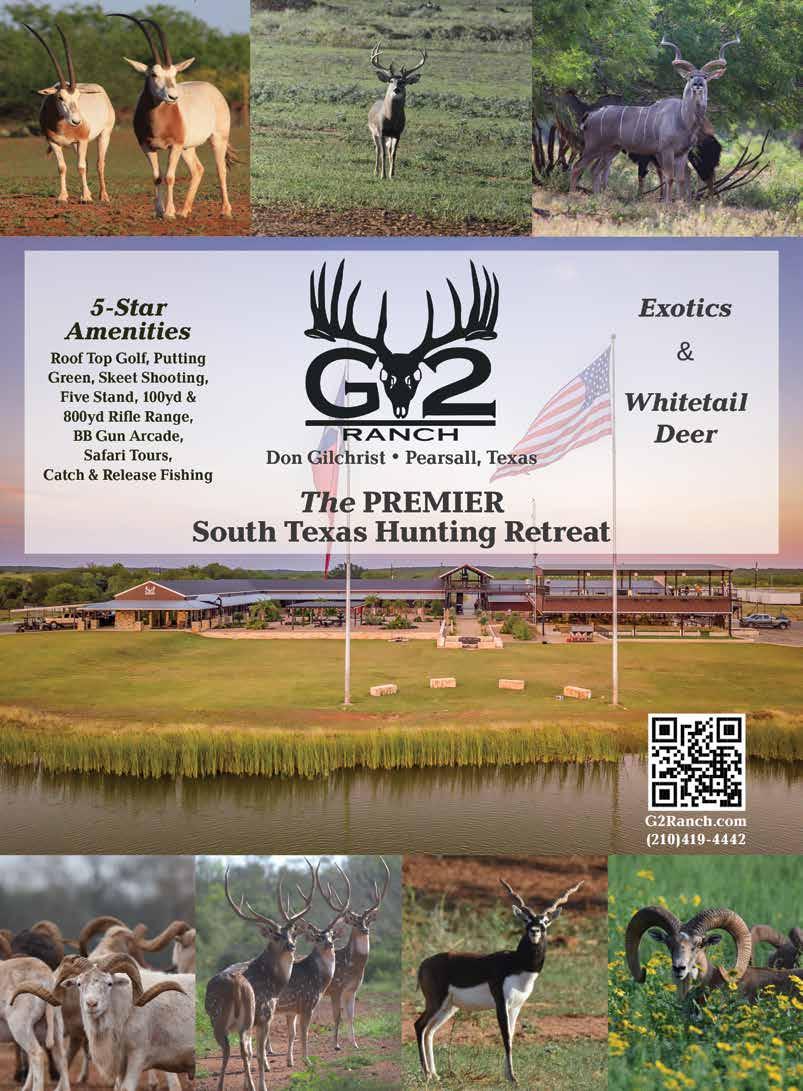





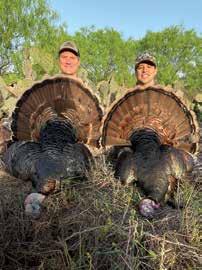




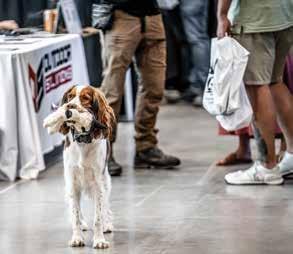
The 2025 Hunting & Fishing Extravaganza in Midland April 11-13 brought together outdoor enthusiasts from across the West Texas region for a fun weekend. Hosted at the Midland County Horseshoe Pavilion, this year’s event featured a variety of hunting outfitters, apparel, fishing gear and more, giving attendees the chance to connect with the lifestyle they love. Country music legend Mark Chesnutt’s performance gave fans a chance to enjoy his iconic hits. We’re thankful to everyone who came out, and we’re already looking ahead to 2026. We hope to see you then!
—Logan Hall
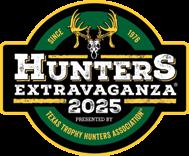

It’s here – the original Texas hunting show is back
Kick-off your 2025 hunting season(s) with us at the Hunters Extravaganzas in Houston, Fort Worth and San Antonio. Discover the latest and greatest in camo, blinds, feeders, ATV’s, optics and so much more. Enjoy a seminar from hunting/outdoor experts, or even book your dream hunt. Bring the family; bring your friends. There’s plenty of fun for the kids, too. You won’t want to miss it! More details starting on page 32.


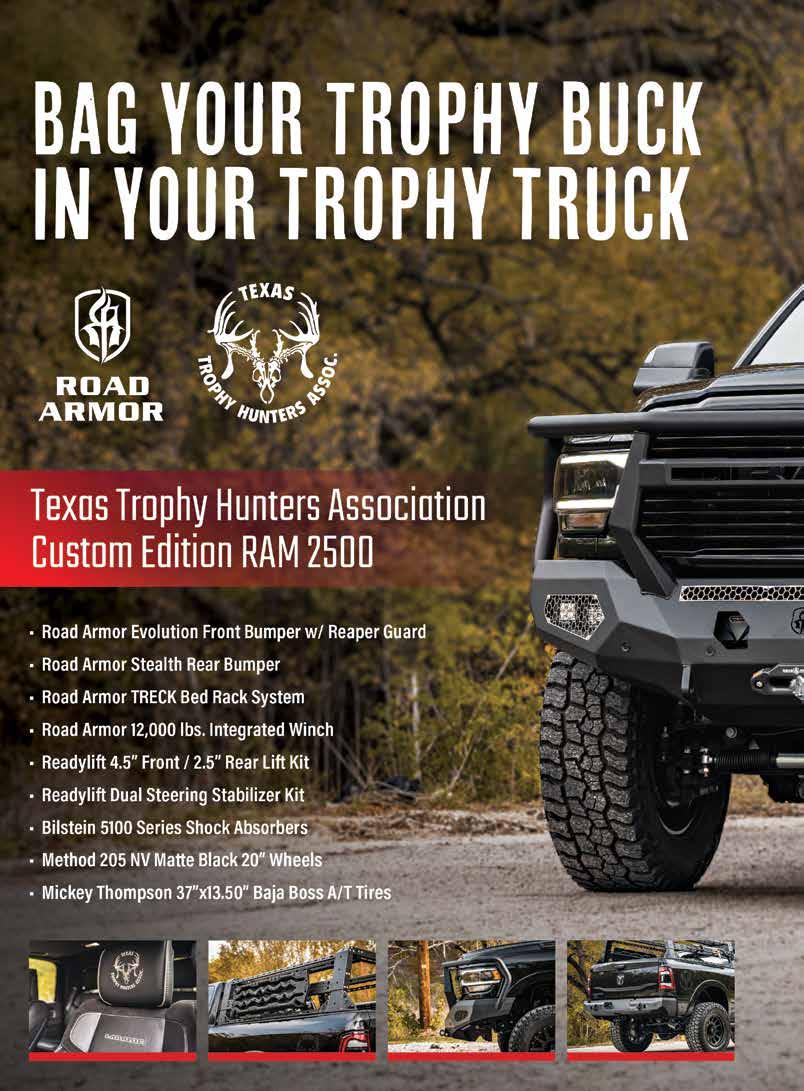
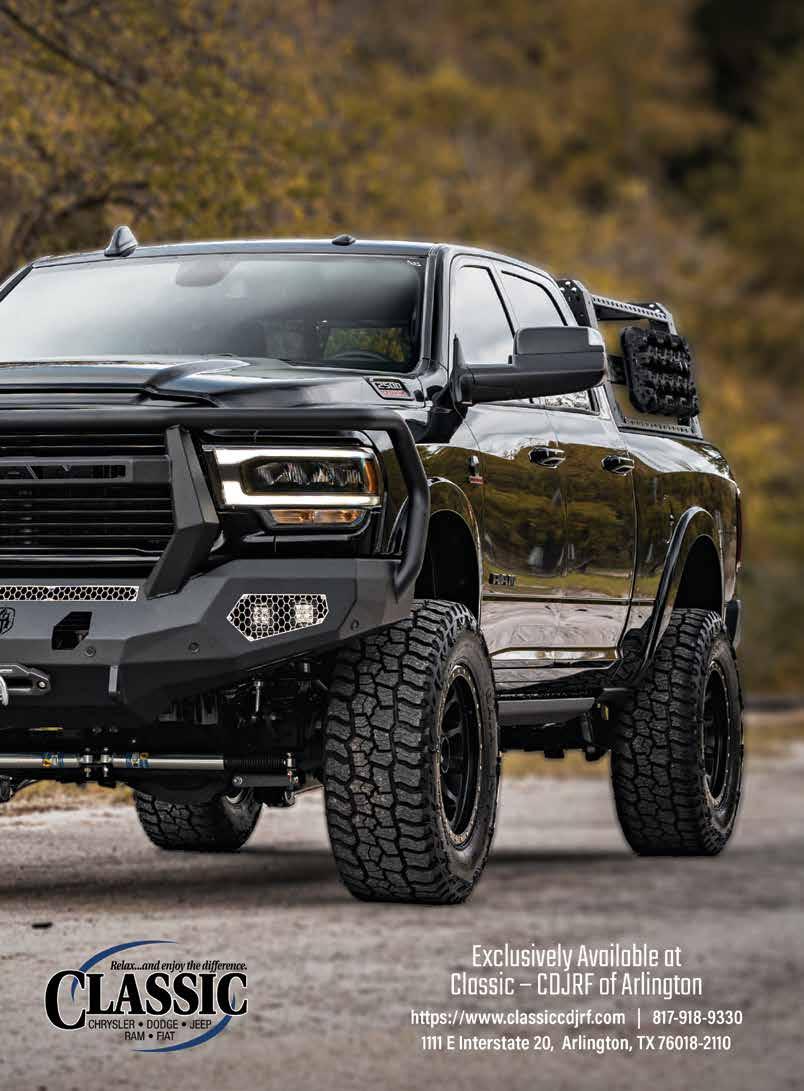




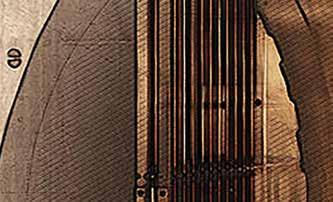

Despite their size, nilgai are quite elusive afield.

By Horace Gore
Agnes Ann “Aggie” Goodman shifted her position on the passenger side of the pickup so the fore end of her 7mm Mauser lay steady against the sandbag and rearview mirror. She had the 2-minute Lee dot in the 6-power Leupold scope centered on the nilgai’s shoulder.
This was Aggie’s first nilgai hunt, and she didn’t want to foul up her shot at a “blue bull.” She pushed the safety off and waited, as she thought about what Jack had told her: “Put the bullet square into the bull’s shoulder, and right through both lungs.”
The old bull stood near some scrubby live oak, which would give him quick escape. His dark body formed a silhouette against the oaks, offering Aggie a broadside shot. She thought this would
be her only shot—albeit a long one. Aggie had been practicing at a 250-yard target and had been scattering the bullets in a 6-inch group—good enough to kill a Kenedy County nilgai bull.
The bull looked at the truck, but had not bolted. Aggie had confidence, knowing Jack had sighted the handloaded 160-grain Nosler in for a long shot, 3 inches high at 100 yards, “dead-on” at 250 yards, and 6 inches low at 300 yards.
Jack Morgan, Aggie’s “soon-to-be,” had guessed the distance at about 250 yards, a safe distance for the lone nilgai bull. The ranch had limited hunting, and the nilgai were not exceptionally wild at a safe distance. Jack looked at the bull through his binoculars as he said, “Put
the dot high on the bull’s shoulder.”
Aggie had a steady rest on the sandbag as her finger felt the trigger. She took a deep breath and slowly squeezed it for the one, and probably only shot at the distant bull. The 7mm roared and Aggie lost sight of the antelope, as she bolted another round and put the safety on.
Jack had his binoculars on the nilgai as it wheeled in the loose sand and ran—with tail high in the air—veering toward the scrubby live oaks. Jack felt good about the shot, knowing a bull hit well through the lungs often throws up his tail and runs until his air plays out. The bull went through the live oaks and disappeared behind a grassy knoll. Jack took Aggie’s trembling hand, and they waited.


The idea of a nilgai hunt had started when Aggie’s grandfather had given her his custom 7mm Mauser as a college graduation present. The old man had carried the Mauser from the Rockies to Mexico over the years, taking all manner of big game. He knew Aggie wanted the Mauser, and now she had it.
The rifle was exquisite, with French walnut wood, fine checkering, aftermarket tang safety, and light 22-inch barrel. The 6-power Leupold scope had a 2-minute Lee dot on thin crosshairs. This meant the dot covered 2 inches at 100 yards, and 6 inches at 300 yards.
Aggie’s grandad loved the old Mauser and had talked about shooting 140-grain Hornady spire points at deer, pronghorns, and hogs, but preferred the 160-grain Nosler for aoudad and elk. She had heard him say with a grin, “My Mauser and 160-grain Noslers would kill an elephant if the sun was right! I’m sure it will do well on a bull nilgai.”
Now, Aggie hunted nilgai with her beloved Jack and Gramp’s old Mauser, with his handloads of 160-grain bullets at 2,650 fps. Jack was not new at nilgai, having taken a good bull on one hunt and a fat cow on another. He knew the ins and outs of nilgai hunting and had put Aggie on this big bull that ran hell bent for leather after she put a 7mm Nosler bullet through both lungs.
Aggie and Jack sat in the pickup wondering how far the bull would run before collapsing. Jack had guessed the horns at 8 to 9 inches—good for an old bull that could weigh 500 pounds, or more. But Aggie wasn’t interested in the horns, just the unique hunt with her new gifted 7mm Mauser.
The nilgai antelope they hunted in South Texas are native to India, and many animals were brought to American zoos in warmer climes after World War
I. The San Diego Zoo had an excess of nilgai in the mid-1920s, and the King Ranch bought some to stock the ranch for meat consumption—not trophy hunts. Nilgai meat is outstanding, but now the big antelope are prized as exotic trophies.
Jack started the pickup and began the drive up the incline. The truck almost stalled in the deep sand, but Jack finally got to harder ground. Aggie leaned as far as she could against the windshield, and sighed with relief when she saw the big, dark bull laying in the grassy flat 100 yards ahead.
Jack stopped the truck a few yards from the bull and surprised Aggie with a kiss as he remarked, “Good shot, Babe!” Both were excited as they got out to check where Aggie’s bullet had hit the bull, and to measure the horns. Jack called back to ranch headquarters for help in getting the big bull back to the skinning shed.
Aggie watched as Jack spread his hand on the short, black horns. “Close to 9 inches,” Jack surmised as Aggie ran her finger up one horn and felt the sharp point. “Are these real horns—not like pronghorns?” she asked. Jack assured her they were real as he felt the Nosler bullet under the hide, where it had lodged after going through both shoulders.
“The difference in your nilgai’s horns and a world-record is about an inch,” Jack joked as they sat in the truck waiting for the ranch cowboys to come and load the big antelope. Everyone would have a lot of work ahead. A mature bull takes a lot of effort to load, hang, gut, skin, and cut up for the freezer.
Before long, a flatbed truck came down the sendero and backed up to the nilgai. Two ranch hands got out and put four thick, wide boards together
from the ground to the truck bed, and then turned the bull’s rear towards the boards. The electric winch whined as the cable attached to the hind legs pulled the big animal up the boards and onto the truck bed. Aggie heard the cowboys talking, “Muy bien! El es un gran toro.” She knew enough Spanish to know they were admiring her nilgai.
“We couldn’t have gotten the bull out of the pasture without the boards and winch, could we?” Aggie asked as the cowboys drove away with her nilgai. “Not hardly,” Jack quipped. “Nilgai hunting ain’t for the weak and feint hearted.”
Aggie could hardly believe how long a bull nilgai is when you pull it up by the hind legs for gutting and skinning. “That bull is twice as long as I am tall,” she remarked as Jack and the cowboys got out the knives and saw. An hour later, two large chests with meat were iced down, and the cape and head were ready for the taxidermist.
“I like his blue hide and the whitetipped ears and cheek spots,” Aggie said as she rubbed her fingers through the coarse hair of the cape. “If he had been closer, I would have shot him in the white spot,” she bragged as she touched the large white area on the bull’s neck. Jack remarked as Aggie admired her trophy, “Not much for horns, but hell to shoot and put on the ground.”
Aggie had found the big tuft of hair below the white spot on the nilgai’s neck, and remarked to Jack, “He’s got a beard like a turkey!” Jack just smiled, as he rubbed some dirt on his Buck knife blade and wiped it clean on his pant leg. They had started the hunt early and the sun was below the edge of the skinning shed. Jack glanced over at Aggie—her red hair gleaming in the evening sun as she sat admiring her new rifle. It had been a good day.


On Feb. 27, a tragic helicopter crash claimed two lives near Uvalde. The accident occurred around 1:20 p.m. near Cline, located in Kinney County just west of Uvalde. The pilot, William Garrett Robertson of Uvalde, and passenger Earl Blakely Hunnicutt of Florida, were the only occupants in the helicopter involved in the fatal accident. The two men were flying in a Robinson R44 and conducting a routine flight. The exact cause of the accident is unknown at this time and is still under investigation.
Hunnicutt was 53 years old and visiting from Florida. It was reported that he was well-known locally and involved in charity work as well as programs supporting veterans and first responders.
Robertson, known by those close to
him as “Garrett” or “Gee,” was 31 years old and flew for Holt Helicopter of Uvalde. Robertson was passionate about flying and was an extraordinary pilot with a prestigious educational background and numerous certifications. Robertson had a Bachelor of Science degree in aeronautics with minors in helicopter operations safety and aviation flight safety from the Embry-Riddle Aeronautical University in Prescott, Arizona. He was a certified flight instructor and held a commercial certificate as well as a second-class medical.
When Robertson wasn’t busy with work, he lived life to the fullest. He enjoyed spending time with his family and liked to hunt deer, hogs, and ducks as time permitted. Many fond memories were made with his brother in the field.
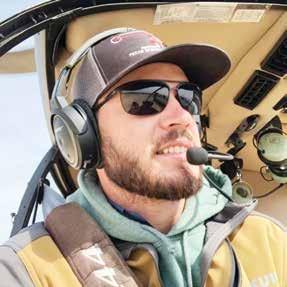
A pilot’s infatuation with flight may perhaps best be summarized by a quote from none other than Leonardo da Vinci. “Once you have tasted flight, you will forever walk the earth with your eyes turned skyward, for there you have been, and there you will always long to return.” Robertson’s enthusiasm was contagious. He never arrived at a scheduled job on time. He arrived early and with a smile. His work ethic and commitment to aviation were second to none, and he felt at home in the air.
Robertson’s love of aviation was eclipsed only by that for his wife, Maci Robertson, and their beautiful baby daughter, Emma Dawn Robertson. Robertson was a friend to all whose paths he
crossed. His selflessness and humility left a mark on many. Countless heartfelt tributes were shared at his celebration of life ceremony. The outpouring of love and support shown by those who knew him speaks volumes to his character. Robertson lived his dream and died doing what he loved. He will be greatly missed by all.
Donations may be made to the Garrett Robertson Memorial Fund at TXN Bank to help the young Robertson family during this difficult time. —Jason Shipman
Gov. Greg Abbott appointed Tim Timmerman and reappointed Bobby Patton to the Texas Parks and Wildlife Commission for terms to expire Feb. 1, 2031. The appointment went into effect May 21.
Timmerman of Austin is the owner of Timmerman Capital LLC and numerous real estate investment and development entities. He is the president of the Colorado River Land Trust, board member for Central Texas Community Foundation, Austin Area Research Organization, YMCA of Central Texas and Texas Business Leadership Council. He’s also a member of the Texas A&M University Chancellor’s Century Council and the Texas A&M Legacy Society. Additionally, he is the former vice chairman of St. David’s Round Rock Medical Center and a former board member of the Austin Chamber of Commerce. Timmerman received a Bachelor of Business Administration from Texas A&M University and a Master of Business Administration from The University of Texas at Austin.
Patton of Fort Worth is president of Texas Capitalization Resource Group, Inc. He is a member of the State Bar of Texas, the UT Development Board, UT Marine Science Institute, the UT Liberal Arts Advisory Council and a director of the Fort Worth Stock Show & Rodeo. Additionally, he is the former chairman of the PGA Tournament Committee for Charles Schwab. Patton received a Bachelor of Business Administration from UT Austin, a Juris Doctor from St. Mary’s Law School, and a Master of Laws from the Southern Methodist University Dedman School of Law.
These appointments are subject to senate confirmation. — courtesy TPWD
Texas Parks and Wildlife Department is expanding digital license and tag options to all recreational hunting, fishing and combo license and tag types. TPWD introduced digital licensing and tagging in 2022 for harvested deer, turkey and oversized red drum.
Options have since expanded to allow resident hunters and anglers to purchase a fully digital license for the super combo (Items 111, 117), youth hunting (Item 169) or lifetime combo (Item 990), Hunting (Item 991), or Fishing tags (Item 992). Customers can also purchase other products such as the exempt angler tag (Item 257), bonus red drum (Item 599) and spotted seatrout tags (Item 596).
The Texas Parks and Wildlife Commission approved expanded digital license and tag amendments during its March meeting. The new digital options will go into effect on Sept. 1 but will be available for purchase Aug. 15, when 2025-26 licenses go on sale. —courtesy TPW
For the first time in almost two decades, the Texas Parks and Wildlife Department has added a new Wildlife Management Area to its East Texas inventory. The property, comprising approximately 6,900 acres in Anderson County, will become the Trinity River
Wildlife Management Area. Trinity River WMA is the newest addition to the Middle Trinity River Ecosystem Project, which includes Gus Engeling, Richland Creek, Big Lake Bottom and Keechi Creek WMAs. Together, these properties protect more than 38,000 acres in East Texas. The newly acquired property also adds 11.3 miles of Trinity River frontage, giving TPWD more than 25 miles of riverbank conservation along this important corridor for migratory birds.
The management and restoration of the Trinity River and Richland Creek WMAs gives TPWD the opportunity for “wall-to-wall” bottomland conservation across the entire east-west width of the Trinity River basin on more than 21,000 contiguous acres. These efforts will aim to slow waters during flooding events, allowing for natural river sediment to settle across the floodplain rather than downstream in areas where concentrated deposits cause environmental problems.
“The establishment of the Trinity River WMA presents an opportunity for the conservation and management of an ecologically unique and important habitat,” said TPWD Executive Director David Yoskowitz. “Partnerships with organizations like the Texas Parks and Wildlife Foundation, the U.S. Fish and Wildlife Service and Knobloch Family Foundation make historic land purchases like this possible.”
The late Jackie Gragg, whose family owned the property, enjoyed seeing the blooming dogwood trees at the nearby Gus Engeling WMA and had a vision of her land being managed and protected in a similar fashion. The Gragg family worked closely with TPWD staff over the course of a year and a half to make this new WMA a reality.
During the 88th legislative session, $10 million in Migratory Game Bird Stamp Funds were appropriated to TPWD for the acquisition of new wildlife management areas. A portion of these funds, along with a grant awarded to the Texas Parks and Wildlife Foundation from the Knobloch Family Foundation, provided the primary match for a Federal Aid in Wildlife Restoration grant from the U.S. Fish and Wildlife Service.
“The 88th Legislature’s appropriation

of Migratory Game Bird Stamp Funds has allowed TPWD to conserve more lands and bring greater access to even more Texans,” said TPWD Wildlife Division Director Alan Cain.
TPWD will work cooperatively with many partners to fund and prioritize habitat restoration on the new WMA. Wetland restoration and creation will be a primary effort, along with work focused on rebuilding bottomland hardwood on the Trinity River. Prairie restoration efforts will occur on the upland acres on the northern end of the property. When appropriate, outdoor recreational opportunities, including hunting and fishing, will be available to the public. —courtesy TPWD
Safari Club International submitted a detailed report in January to the Trump transition team identifying the key priorities that will expand public land access for sportsmen and women, modernize wildlife management, and promote stronger and more effective state, federal, and international partnerships.
President-elect Donald Trump’s decisive victory marked a global win for sportsmen and women and now sets the stage for unprecedented opportunities to safeguard hunting traditions and advance sustainable-use conservation. SCI is wasting no time capitalizing on opportunities to work side-by-side with the incoming administration on behalf of hunters, anglers, and outdoor enthusiasts everywhere.
Among a list of critical priorities, SCI is urging the Trump administration to:
• Protect public access to hunting, fishing, and recreational shooting on federal lands while ensuring guided opportunities on remote public lands remain available.
• Modernize the Endangered Species Act by delisting recovered species like gray wolves and grizzly bears, allowing resources to focus on at-risk species.
• Defend hunters’ rights by maintaining access to traditional ammunition and fishing tackle.

• Strengthen statefederal collaboration in wildlife management by improving consultation processes and reducing unnecessary litigation.
• Support global conservation efforts by engaging with international partners, particularly in regions like Southern Africa, to enhance sustainable-use programs that benefit local communities and wildlife.
“SCI is ready to partner with the Trump administration to advance science-based conservation, protect hunters’ rights, and ensure America’s public lands and wildlife resources remain a thriving legacy for future generations,” said SCI CEO W. Laird Hamberlin.
“SCI’s priorities reflect a shared vision with the Trump administration: preserving America’s outdoor heritage while promoting effective conservation practices,” said SCI President John McLaurin. “With strong leadership in the White House, the future looks bright for sportsmen and women around the world.” —courtesy SCI
Doug Burgum as New Secretary of the Interior
Safari Club International (SCI) congratulates former Gov. Doug Burgum (R-North Dakota) on his confirmation as U.S. Secretary of the Interior. With a strong record of executive leadership and a deep appreciation for America’s hunting heritage, Secretary Burgum is the ideal champion for the rights of sportsmen and women across the country and a trustworthy steward of sound conservation policies rooted in science and sustainable use principles.
As the leading voice for hunters and anglers on Capitol Hill and the nation at large, SCI looks forward to working with Secretary Burgum and the Trump administration to ensure the Department of the Interior implements critical reforms that will enhance access to public lands, modernize wildlife conservation policies, and strengthen partnerships at the federal, state, and international levels. SCI’s key policy priorities include:
• Protecting public access to hunting, fishing, and recreational shooting
on federal lands while ensuring guided opportunities on public lands remain available.
• Modernizing the Endangered Species Act by delisting recovered species like gray wolves and grizzly bears, allowing federal resources to focus on genuinely at-risk species.
• Defending hunters’ rights by maintaining access to traditional ammunition and fishing tackle.
• Strengthening state-federal collaboration in wildlife management by improving intergovernmental consultation processes and reducing unnecessary litigation.
• Supporting global conservation efforts by engaging with international partners, particularly in regions like Southern Africa, to enhance sustainableuse programs that benefit local communities and wildlife.
“With Secretary Burgum at the helm of the Department of the Interior, we have a leader who understands the importance of protecting America’s hunting traditions while advancing science-based conservation,” said SCI CEO W. Laird Hamberlin. “SCI is eager to partner with President Trump and his administration to expand hunting access, reform outdated regulations, and defend the rights of sportsmen and women across the country.”
“Secretary Burgum’s confirmation is a win for every hunter and angler who values access to our public lands and responsible wildlife management,” said SCI President John McLaurin. “We look forward to working with the Department of the Interior to safeguard America’s outdoor heritage and ensure all citizens can go afield free from the kind of crippling regulations that were commonplace with the previous White House.”
—courtesy SCI
On Jan. 23, two important bills to bolster conservation and public lands were introduced by Members of the Congressional Sportsmen’s Caucus (CSC). Both these bills were priorities for the Congressional Sportsmen’s Foundation (CSF) in the 118th Congress and will remain
priorities in the 119th Congress.
Led by CSC Member Rep. Zinke and Rep. Beyer, the bipartisan Wildlife Movement Through Partnerships Act (H.R. 717), which CSF testified before the House Natural Resources Committee this past September in support of, would codify an important effort to conserve habitat for migratory wildlife across the country.
The Keep Public Lands in Public Hands Act (H.R. 718), another bipartisan bill led by Rep. Zinke and CSC Member Rep. Vasquez, would establish more congressional oversight over the disposal of public lands managed by the Bureau of Land Management (BLM) and the U.S. Forest Service (USFS).
The Wildlife Movement Through Partnerships Act, is a critical step forward towards conserving and restoring habitat connectivity for our nation’s wildlife. This legislation seeks to codify the highly successful Secretarial Order 3362 that sought to conserve big game migration corridors and winter range across 11 western states. However, this legislation broadens this scope across the entire country and all wildlife species that migrate or move as part of their annual cycle would be eligible for funding. This legislation respects the rights of private landowners while providing these important stakeholders with voluntary options to expand conservation across their lands as they see fit.
The Keep Public Lands in Public Hands Act requires congressional approval for the sale or transfer of publicly accessible lands that are greater than 300 acres and water accessible lands that are greater than five acres. Under current law, Congress does not need to provide oversight over the sale or transfer of parcels of FLPMA identified parcels regardless of size. This legislation establishes an important threshold to maintain public access for sportsmen and women while recognizing that smaller, less recreationally important lands are suitable for disposal. This legislation does not prevent or prohibit the transfer or sale of public lands, nor does it undermine important land transaction programs that help increase access such as the Federal Lands Transaction
Facilitation Act. Rather, this legislation establishes an important threshold to ensure that important recreational lands and water are scrutinized and approved by Congress before being sold or transferred. —courtesy Congressional Sportsmen’s Foundation
Congressman Introduces Endangered Species Act Amendments Act of 2025
Safari Club International commends House Natural Resources Committee
Chair Bruce Westerman, R-Ark., for introducing the Endangered Species Act (ESA) Amendments Act of 2025. This long-overdue legislation is a major step in bringing the ESA into the 21st century, ensuring it works to recover species and promote collaboration with landowners, conservationists, and the sporting community, instead of allowing for endless litigation cycles and bureaucratic overreach.
For decades, environmental and animal rights groups more interested in
control than conservation have hijacked the ESA. The ESA Amendments Act of 2025 restores the law’s original intent— helping species recover, not locking them in perpetual regulatory limbo. This bill injects much-needed common sense into federal wildlife policy by streamlining the delisting process for recovered species, rewarding effective international conservation efforts, and aligning U.S. import-export regulations with proven science-based practices.
ESA Reform of this kind is part of SCI’s 2025 Policy Priorities, which it relayed to the Trump administration earlier this year. SCI is committed to advocating for policies that protect hunting and conservation as essential tools for species recovery. SCI urges the House of Representatives and Senate to swiftly pass the ESA Amendments Act of 2025 to ensure that science, not an uninformed political agenda, guides future conservation efforts.
“Congressman Westerman’s legislation puts collaboration science and results

ahead of politics and obstruction,” said SCI CEO W. Laird Hamberlin. “Groups like the Center for Biological Diversity have spent years using the ESA as a weapon to block conservation success. They’re stuck in the past and unwilling to acknowledge when recovery efforts work. This bill corrects that and puts data a willingness to work with those on the ground, living with listed species, including in foreign countries at the forefront of conservation policy.”
“This legislation is a win for hunters, conservationists, and wildlife species alike,” said SCI President John McLaurin. “America’s sportsmen have funded the most successful conservation programs in the world, and it’s time the ESA recognized those achievements instead of pointlessly erecting meaningless roadblocks to sustainable-use hunting and wildlife conservation. Chairman Westerman’s bill brings the law back in line with real-world conservation success.” —courtesy SCI

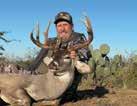
By Dr. James C. Kroll

While attending Texas A&M University, the author took part in a venison preference study, which concluded that axis venison was far superior to any other cervid.
Ibegan my deer hunting career in the early 1960s when I went on my first deer hunt at the invitation of my high school biology teacher, Mr. Victor Rippy. He was an enthusiastic man, filled with wonder and enthusiasm for the natural world. He was one of many to whom I would owe credit for where I am today. I dedicated my first book, “A Practical Guide to Producing and Harvesting White-tailed Deer,” to him and we remained friends until he died a few years ago. He had an altitude stroke while climbing a Colorado mountain, and never got over the damage.
My first deer hunt was great for lots of reasons, but mostly because I took my first buck. I had bought a surplus M-1 1903 Springfield rifle in .30-36 caliber that came coated in military grease. I think I paid about $10 for it. I was told by somebody—tongue-in-cheek—that Teddy Roosevelt once used this rifle, so I felt pretty good about having it.
In late December, we were hunting a day lease on what I remember to be the Elmo Wilson Ranch near Hunt, Texas. We stayed in a barn that had been equipped for hunters and I remember it being quite cold. The next morning, I sat against a tree when I saw a buck slipping across a sheep pasture. Without

hesitating I lifted up the Springfield, peered through the iron sights, and pulled the trigger.
The buck fell in his tracks. Then, I suddenly noticed that the pasture was full of sheep. I quickly looked for white bodies on the ground. And finding none, I breathed a sigh of relief.
That first hunt, with help from several fine gentlemen, launched a career most young men only dreamed of in those days. It also fostered a love for the Hill Country, especially the great area surrounding the Guadalupe River headwaters. Over the last 60-plus years, every time I have the chance, I take a trip to my beloved Hill Country and Kerrville.
My favorite activity each visit has been to drive the exactly 100 miles around the basin, composed of State Highway 39 west out of Kerrville, through Hunt, then to the junction with US Highway 83, turning north about 10 miles, and back to the east on Highway 41 past the Y.O. and Priour ranches to State Highway 27, and back south into Kerrville.
It was during these drives in the 1970s I started noticing more and more ranches being high fenced. At first, my goal was to count the number of whitetails I observed, but then new animals became more obvious. The area can legitimately claim
ownership to being one of the “deerest” places in the Lone Star state and can also take credit as being the birthplace of exotic game ranching. Men like my friends Charlie Schreiner III and Dale Priour were instrumental in bringing exotic species to the Hill Country.
A great number of exotics originated from the San Diego Zoo Park in California. These species quickly became known as “Texotics,” a term made popular by Thompson Temple of Kerrville. For well over 50 years, the Y.O. Ranch conducted an annual exotic sale that played a big part in getting exotics distributed statewide.
Among the many non-native animals I observed on my trips were strange, orange-colored deer covered with large white spots, and the bucks had high, six-tine antlers. It was the axis deer (Axis axis) or chital from the Indian subcontinent.
I noticed right away that axis appeared to be the most populous exotic species that had the odd habitat of running around in large herds in the middle of the day. To make things more interesting, there were males in the herd that were growing velvet antlers and others that had fully hardened antlers. These
Axis compete with whitetails for nourishment by eating forbs and brush. Unlike whitetails, axis eat grass and typically are more active during daylight hours.

were very interesting deer, to say the least.
By the time I entered graduate school at Texas A&M University, the “golden age” of exotics was in full swing in the Hill Country. While at TAMU, I took part in a venison preference study, from which we concluded that axis venison was far superior to any other cervid. My fellow graduate student Elizabeth Cary Mungall completed her doctoral research on Texas exotics and has published at least two books on the subject. She was glad to educate me on the strange spotted deer from India, Nepal, Bhutan, Bangladesh, and Sri Lanka.
The chital is a tropical species, ranging over 8-30°N latitude. They evolved in tropical forests and grasslands, where the vegetation could range from lush to sparse, depending on the rainy season. Their primary predator was another brightly colored species, the Bengal tiger.
When you consider the predatory efficiency of the tiger, you can understand why chital are colored the way they are, why they run around in large herds, and why they are mostly diurnal. In fact, I can think of no deer species more adapted to avoiding predation than the chital.

It’s not surprising why they were brought to Texas in the early 1930s, but this was not the first time they had been transplanted from Asia. In 1867, several chital were brought as a gift to Hawaii’s King Kamehameha V. Soon they were released on Molokai, and then Lanai in 1920. Each time they were moved to new habitats they thrived, and in 1932 axis were released on high-fenced ranches in the Hill Country. Later they would also be transplanted to the Texas Coast, Deep South, and Florida.
Today, it’s estimated at least 10,000 live in Texas alone. They are broadly pre-adapted to survival, and the only place I have not seen them survive is in eastern climes, where some factors, maybe predation, or rainfall and humidity, generally suppresses population growth.
So, axis deer could be called a real success story for a game animal—but not so fast. Early on, professional wildlife managers and particularly state agencies began worrying about the potential for serious competition between axis and native whitetails. Ironically, Texas Parks and Wildlife began a study on the Kerr Wildlife Management Area, immediately next door to where I killed my first whitetail buck, on the potential competition between axis and whitetails.
There was room for concern. Axis deer are different in many ways from whitetails, including being able to breed throughout
the year. However, the most worrisome characteristic that they could do what whitetails could not—eat grass. The white-tailed deer is not well-suited to grass-eating, not having the digestive system to do so. Conversely, the axis can eat grass, forbs, and brush in competition with whitetails, a source of real concern.
The Kerr WMA confined six deer of each species in high fenced areas and monitored what happened to each population. In three years, whitetail populations began to decline, while axis numbers dominated, then leveled off to axis only. For an area such as the Kerr WMA where numerous species of grasses dominate the understory, this study created some legitimate red flags about axis deer.
In spite of this competitive discovery, more ranchers began stocking axis as an alternative income source from hunting. After all, Texas whitetails are available for hunting only about three months of the year, while axis are available 12 months. That alone is an understandable economic strategy, but axis soon escaped into the wild.
Today, axis bodies are seen on Hill Country roads, and even South Texas. Axis and automobiles do not mix well. Efforts to reduce axis populations have been implemented everywhere axis have been stocked. Hawaii, with no predators, has managed to reduce their herds from 60,000 to 18,000, but fall far short of extermination.

The Gillespie County AgriLife Extension and Hill Country Alliance have launched the Axis Deer Control Project and encourage landowners and hunters to participate. The Alliance recently posted that local landowner, Ronnie Ottmers, expressed his concerns about the population growth of axis deer. “Over three nights, we counted 347 white-tailed deer and 546 axis deer along our transects. It’s ridiculous,” he said.
So, what is the solution if one is needed? Some landowners like axis while others detest them. I do know that axis numbers can be brought down, when you give a landowner a reason. During the days of exploding interest in growing huge whitetails, my annual trips around the Guadalupe Basin yielded almost no axis sightings.
Then, as interest in whitetail breeding has waned, axis numbers began to increase. There is no easy solution. Land prices in Texas, especially in the Hill Country, have become insane. In order for a rancher to keep his/her land in livestock agriculture, there will have to be profitable animal systems.
We tried many years ago to install a venison production industry centered on exotic species, but traditional commodity interest groups have worked against us with great success. Perhaps, if the Texas AgriLife Extension Service wants to really help, they should focus on venison. The pessimist side of me sees a Hill Country where an exotic species is dominant, and whitetails are scarce. Only time will tell.

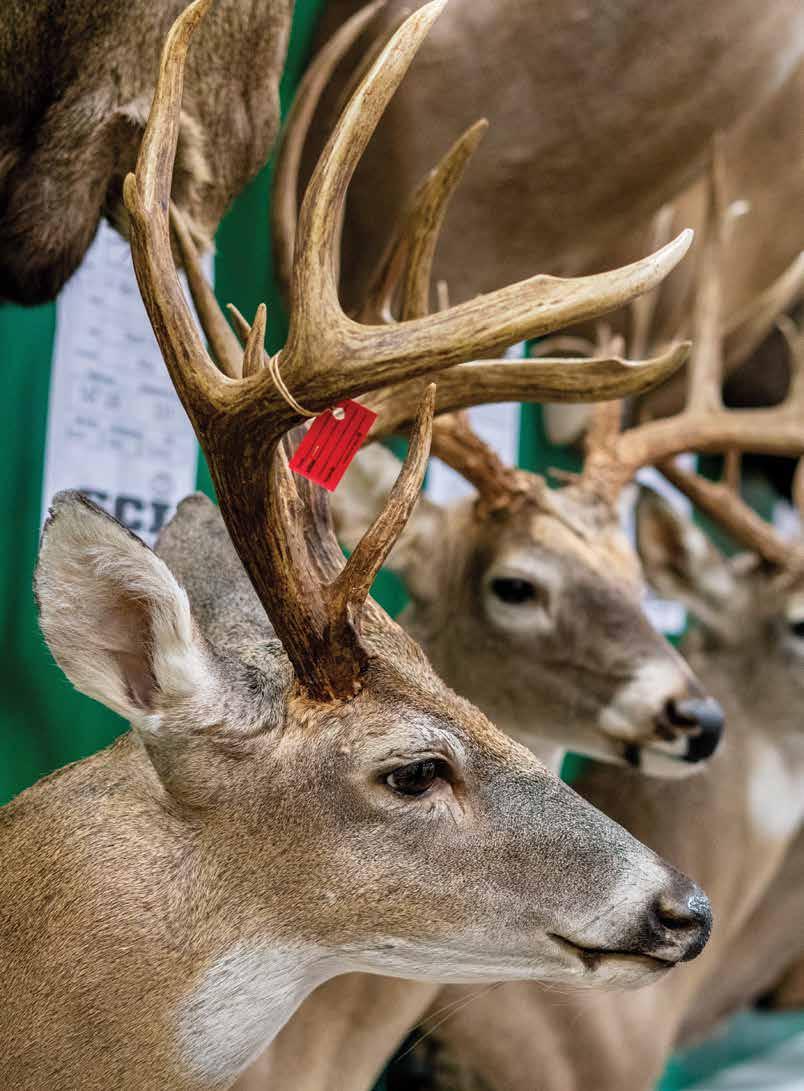
Everything is big in Texas, including “Big Buck” contests held across the state, which considers itself the “Deer Hunting Capital of America.”
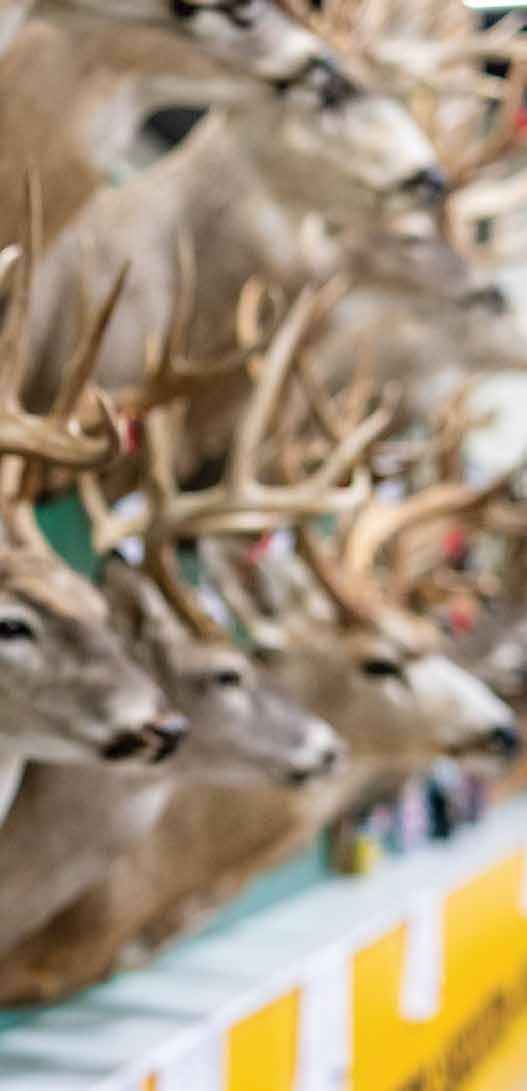
By Jake Legg
uck contests have long been a part of Texas deer hunting. The major competition is in South Texas, where bucks exceeding 160 B&C have been common at several contests since Leonel “Muy” Garza devised the first competition at his Texaco gas station in Freer. Garza originally called the affair a buck contest in 1965, but an outdoor writer from San Antonio told Garza that it was a “Muy Grande Buck Contest,” and the name stuck. The oldest buck contest in Texas has long been the Muy Grande at Freer.
Through the years, buck contests have come and gone—three being the Texas Gulf Coast contest in Kingsville, Los Cuernos de Tejas in Eagle Pass, and the Freer Deer Camp in Freer. There have been other short-lived contests, such as Texas Whitetail Classic, El Monstruo del Norte, and Comal County Deer Contest. Today, there are five longtime deer competitions that are annually enjoyed by hundreds of whitetail hunters.
Besides the Muy Grande in Freer. the Cola Blanca contest in Laredo is also a historic event, as is ANGADI Los Gigantes of Nuevo Laredo, Mexico. The Los Cazadores Deer Contest started in Cotulla in 1987, but moved to Pearsall many years ago and combined with a sporting goods store, gun room, and taxidermy studio. One of the original aspects of Los Cazadores was the $5,000 cash prize for the best buck, which has been deleted. The Hill Country has a big buck contest with Trophy Game Records of the World in Kerrville. This contest has its own rules and scoring system as noted below.
All contests with exception of Trophy Game Records use modified Boone and Crockett scoring systems—mostly B&C scoring without deductions for symmetry. A wide variety of categories and divisions are used in all contests, giving hunters of all ages several ways to win trophies and prizes. Each contest has its own rules for entering a buck, and most bucks are scored on the spot.
In most contests, deer are accepted from Texas, Mexico, and out-of-state. One or two contests have categories for javelina, wild hogs, coyotes, and bobcats. Contestant rules vary for sign-up and some contests have time limits for entering a buck.
The most unusual out of all the deer
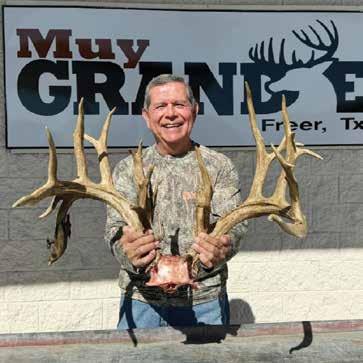
contests comes from the big buck contest of the Trophy Game Records of the World. This contest has its own unique scoring system using centimeters and antler measurements. In The Journal, they do not report scores, but name the top place winners in several categories.
Two prominent statewide deer contests are the Hunters Extravaganza Annual Deer Competition and the Texas Big Game Awards. Texas Trophy Hunters Association started its Annual Deer Competition in 1995 as a way of getting a large collection of bucks for public viewing. TTHA members bring their Texas, Mexico, and out-of-state whitetails and Texas mule deer to the three Extravaganzas each August in Houston, Fort Worth, and San Antonio to compete for prizes in a variety of categories.
TTHA’s deer contest began with a B&C net score for all whitetails and mule deer—both typical and nontypical. Prizes include certificates, jackets, and valuable hunting paraphernalia. Hunters of all ages, from far and wide, bring their deer trophies to the popular competition, which has long been a drawing card for extravaganza attendance.
In 2021, TTHA became a corporate subsidiary of Safari Club International, which has its own patented scoring system. In 2024, SCI powered the scoring of all deer, using Trophy Scan to measure antlers in the Hunters Extravaganza deer contest. At present, both B&C and SCI scores are used in a twin-system of scoring. SCI gives awards to both SCI and B&C winning contestants. The Texas Big Game Awards began in 1992 as a way
Big buck contests are important to Texas deer hunters as a way of defining a trophy buck, as well as hunting for a prize-winning trophy. They’re a major attraction in small towns.
of recognizing top quality game animals and habitat conservation in Texas. The awards program was initially founded and administered by Texas Parks and Wildlife, but was later transferred to Texas Wildlife Association for administration and awards. The program started with whitetails, mule deer, and pronghorn, but has since added javelina and other game animals to the awards program.
Contests such as Muy Grande, Cola Blanca, ANGADI, Los Cazadores, and Trophy Game Records have an awards banquet in the spring following deer season. Several contests put on quite a show with food, music, and celebrities from the hunting world. Many winners frame their certificates for the home or office, and others proudly wear jackets or vests from Texas Trophy Hunters, Muy Grande, Cola Blanca, ANGADI, and Trophy Game Records.
Big buck contests are important to Texas deer hunters as a way of defining a trophy buck, as well as hunting for a prize-winning trophy. Most contests have numerous categories for adult and youth, men and women, young and old. Some of the awards banquets are plush with a variety of recognition, awards, food, and entertainment. Big buck awards programs are a major attraction in small towns, bringing in hunters from a wide area.
Texas has 60 years of big buck contests—some extravagant and some small—that will continue as young hunters fill in after the old hunters have hung up their rifles. Whitetail hunting garners some 800,000 hunters who add a lot of money to the Texas economy and provide millions to wildlife conservation in a state that brags about being the “Deer Hunting Capital of America.” Texans don’t like to brag, but if the shoe fits, we will wear it.

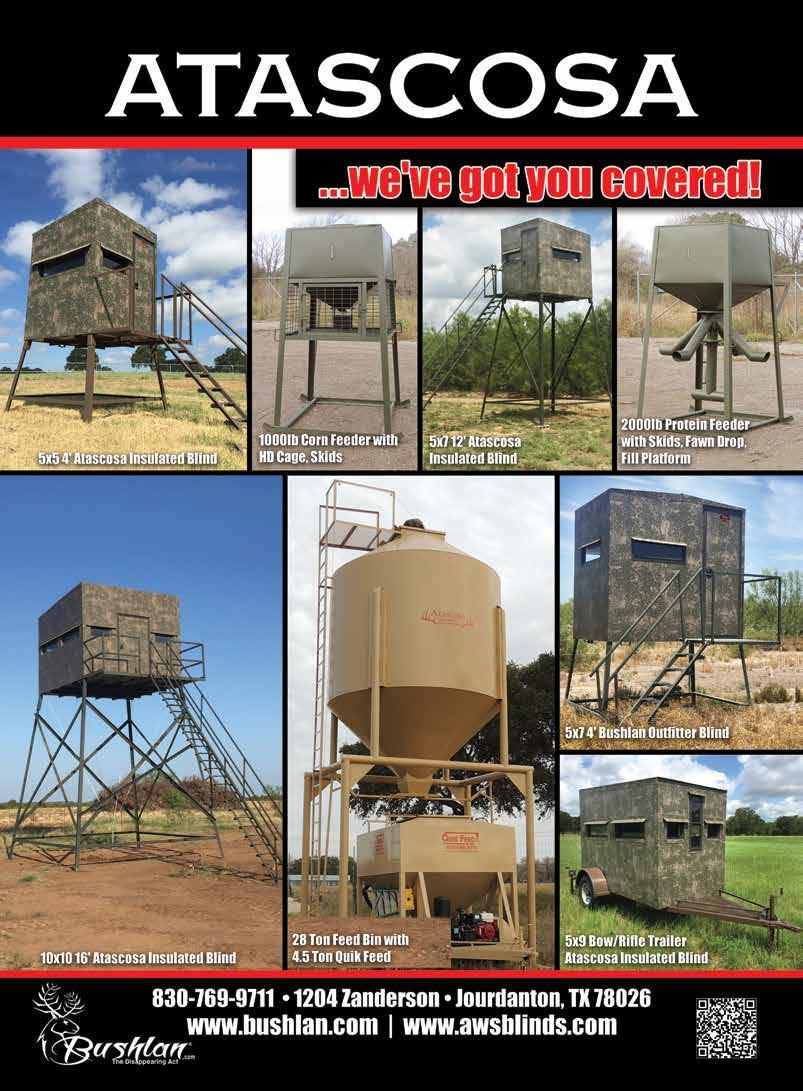

Nolan
cancer survivor, has gratitude for his doctors, family, and friends who helped him overcome his fight with cancer so he could get back to the things he enjoys most: baseball and hunting.
Life is a beautiful thing, but sometimes we get preoccupied and take things for granted. The time we have goes by fast, and along the way, things can change in an instant. On occasion, we’re reminded exactly how fragile things like our health can be.
For young Nolan Cernosek, this happened while running bases in a baseball game. The 15-year-old had just finished his freshman year at New Braunfels High School and playing select baseball. He focused on athletics, and at 6 feet 5 inches and 235 pounds, he was fit and as strong as an ox. But while rounding third base and heading for home plate, he lost his footing and his femur snapped.
For the young athlete, it seemed like a huge setback as he waited in the hospital with his parents, Nathan and Sarah Cernosek. However, things took a turn for the worse when the doctors informed them a tumor had actually caused the break. Shortly afterwards, doctors diagnosed Nolan with a rare form of bone cancer called osteosarcoma.
The prognosis was grim, but Nolan stayed strong and determined to win his battle with cancer. “I was not in this alone. I had tremendous support from my family and
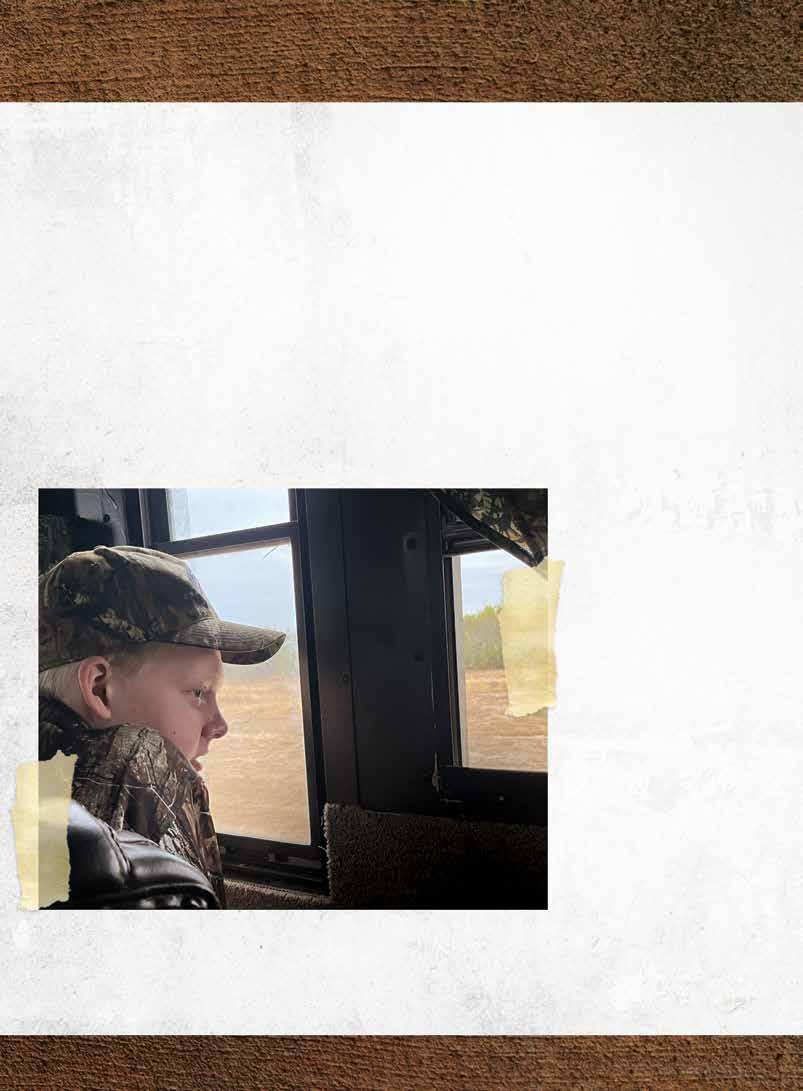
friends,” Nolan said. Everyone rallied behind him, and in a show of support, his friends at school adopted the slogan “Nolan Strong.” Treatments at the MD Anderson Cancer Center quickly began and consisted of chemotherapy 4 days a week. Surgeries followed, and ultimately most of his femur was replaced with a titanium rod.
For Nolan and his family, the entire process felt like it lasted for an eternity. After two years of enduring treatments and surgeries, prayers had been answered when he was declared cancer free. Preventative treatment is currently ongoing as Nolan tries to settle back into some form of normalcy.
This past year Nolan returned to sports, albeit in a limited capacity. His willpower and determination continue to drive him, and he never ceases to amaze those around him. He has started pitching again for the New Braunfels High School varsity baseball team. In addition to sports, he has a renewed interest in spending time outdoors and more specifically, hunting.
Nolan had enjoyed hunting in the past and took his first buck years ago with his dad and uncle, Matt Cernosek, at the Junco Ranch in Webb County. “Nolan has always liked to hunt, but it wasn’t necessarily a priority for him,” Matt said. “However, when we got him back down to the ranch this year, his interest was renewed.”
This past hunting season, around the middle of December when the bucks were on the move, Nolan and Nathan made plans to meet Uncle Matt at the Junco to deer hunt. It would be the first opportunity Nolan would have to hunt in South Texas since his cancer diagnosis. Nathan and Matt have shared a lifetime of hunting experiences together, but this hunt with Nolan would be their most memorable.
Upon arriving at the ranch, the trio wasted no time getting set for the afternoon hunt. “We were looking for a massive nine-point that frequented the area. I really wanted Nolan to get a chance at him,” Matt said. Late in the evening, a buck crossed the sendero at quite a distance, but with good optics they could tell it was the big nine-point they were after. Shortly thereafter, the buck reappeared closer and in range, but only his head and back were exposed in the thick cover. Not wanting to take a risky shot, they elected to wait and ended up returning to camp empty handed. Nolan got little sleep during the long night. “I couldn’t quit thinking about that buck,” he said. Morning finally came and Nolan, Nathan, and Matt went back to the same blind. Several deer fed about, as the buck they were after returned. “He appeared at some distance again, but this time he worked his way in and joined the other feeding deer,” Matt said.
Uncle Matt carefully pushed the suppressed .300 Winchester Magnum out the window of the blind as Nolan got ready for the shot. “I was really nervous and started breathing heavy,” Nolan said. Matt, realizing the situation, looked at Nolan and whispered, “You beat cancer! You fought to live life! You’ve got this!”
Nolan quickly put things into perspective, and he calmed
Nolan felt buck fever coming on, but his uncle told him, “You beat cancer! You fought to live life! You’ve got this!”

down. The distance was about 130 yards when the big-bodied nine-point turned broadside. Nolan got the crosshairs on the buck and made a good shot. The buck took the bullet and lunged forward to disappear into the brush. “We heard him crash back in there, but gave him a few minutes before going to take a look,” Nolan said.
The hunters felt a little concerned when they arrived where the deer had stood and found no blood or sign of a hit. However, they found where the buck had torn the dirt out when hit and followed the tracks into the brush to quickly find the expired buck. “Nolan made a perfect heart shot, and I watched as he and Nathan walked up to the buck,” Matt said. Everyone felt relieved and excited at the same time as they all examined the fallen trophy. “Nolan is an inspiration to all of us. He’s been through a lot. His mother and I cherish him and couldn’t be prouder of him,” Nathan said.
Nolan’s buck was estimated to be 61/2 years old and scored 154. As Nolan posed with the buck for pictures, his smile told the story. “I am so grateful and thankful for the experience. I can’t wait for next season!” Nolan said. Overcome with joy and emotion, the hunters relished the moment as they snapped photo after photo to capture the memory forever. Back at camp, they relived the hunt as they recounted the story, declaring they would be hunting buddies for life.


By Parker Hause

The Texas Brigades has been the highlight of my summer for the last several years. I have been to a handful of their summer camps, and they never disappoint. This year, I attended the Ranch Brigade at the Warren Ranch in Santa Anna, Texas. Unlike the other Texas Brigade camps where you learn about specifically wildlife conservation, at the Ranch Brigade we got to learn about the cattle industry.
Upon arrival at camp, we were all assigned to a herd. A herd is a group of cadets—first time camp attendees—and their leaders. Throughout the week of camp we competed, learned, and bonded together, all working towards winning Top Herd. Competition is a prominent aspect of the Texas Brigade camps. It promotes the idea that team building and leadership skills are the key to success.
The first thing we did at camp was learn about bovine anatomy through the necropsy of a heifer. The stomach of a cow is unique to that of deer or other ruminants because it almost strictly digests grass with the help of bugs in their stomach. Not only did we explore the anatomy and bodily processes of cattle, but we also analyzed the grasses they consume.
On the second day of camp, we ventured into the old roaming lands of the Indians to collect plants that cattle encounter daily. We dirtied our hands and shovels until we accumulated a collection of about 20 different plants. We then placed our cow forage into a plant press to be compiled into a book later in the week. The Natural Resources Conservation Service came out to camp that day to demonstrate their rangeland survey techniques as well. After instruction from them, we went into the field and did our own surveys to practice.
My personal favorite part of camp was when we worked cattle in the chute ourselves. This was hands-on learning to the extreme. We castrated, vaccinated, and branded the bulls ourselves, which significantly impacted our ability to do so in the future. We were shown a new way to castrate bulls than what many of us already knew. Instead of placing an elastic band around the scrotum or just chopping the testicles off, we methodically slit the bottom of the scrotum and slowly pulled them free. This practice resulted in less bleeding than other methods because it allowed the membrane around the testicle to clot easier.
Another memorable moment at camp was the ranch competitions. There were four: roping, sheep sorting, ranch chores, and post hole digging. Each herd had the opportunity to win a competition, and at the end, the points were distributed based on the performances. At the end of camp, my group, “Angus,” won Top Herd!
This camp motivated me to continue my journey as a conservation leader. Immediately, I volunteered in a Kids
Conservation Day where I led a group of 9- to 10-year-olds through a day of shooting rifles, driving ATVs, and learning about wildlife conservation. I was lucky enough to have been assigned to a group of cadets at Ranch Brigade that bonded well, and were all willing to extend our experience in the ranching industry. We organized a trip to the R.A. Brown Ranch where we learned about their bull development program and worked cattle as well. Along with this, we shared our Texas Brigade experiences with Woodson ISD, and were interviewed by the Graham and Breckenridge newspapers.
Since then, I have continued to further my influence on my community. I have done many presentations and activities to promote Texas Brigades and expand my knowledge on ranching and wildlife conservation. All of these events and projects contribute towards my Book of Accomplishments. A Book of Accomplishments is a compilation of completed activities, which is then submitted to Texas Brigades for evaluation in order to become an assistant leader and receive college scholarships.
I have been to the Bass Brigade as an assistant leader, and it’s another amazing opportunity for leadership development. Not only do you get to renew your knowledge from the prior camp, but you get to lead a group of cadets along the way. This allows assistant leaders to practice and learn new leadership skills, which apply to other aspects of life as well. The Texas Brigades has significantly influenced my personal character and has allowed me to become a confident ambassador of conservation in my own community.
When I first began to attend the Texas Brigades, I was simply a hunting-andfishing-loving every-day kid. However, after being a part of the program long enough, I have genuinely developed a


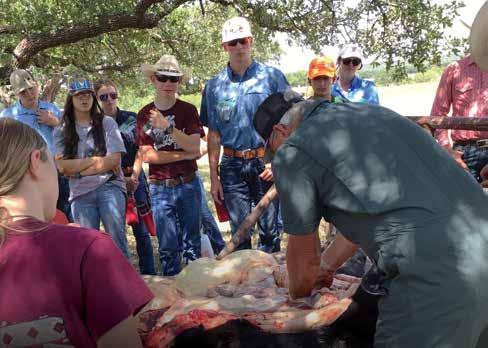
passion for conservation of the natural resources that our great state has to offer. The Texas Brigades’ mission is to create conservation leaders in every community. They have accomplished this goal by educating their cadets about wildlife conservation, developing their leadership skills, and sending them off into their communities to share what they learned at camp. The Texas Brigades program is doing the world of conservation a great deed by preparing us, the next generation.
Texas Brigades is a conservation-based leadership organization which organizes wildlife and natural resource-based leadership camps for participants ranging in age from 1317. Its mission is to educate and empower youths with leadership skills and knowledge in wildlife, fisheries, and land stewardship
to become conservation ambassadors for a sustained natural resource legacy. Texas Brigades hosts nine summer camps throughout June and July. The application period for camp runs Nov. 1 through March 15 of each year. Visit texasbrigades.org or call 210-556-1391 for more information.











By: Judy Jurek and Jake Legg


The Hunters Extravaganzas, the granddaddy
50th Anniversary of Texas Trophy Hunters Association, all shows are bigger and better than ever. You must go see for yourself just how Grrrreat the Extravaganzas are in Houston, Fort

Extravaganza in the past, it’s time to mark your calendar to make one of the shows this year (see sidebar). They’re the biggest and best hunting shows in the Southwest, with more fun and

To be exact, they’re known far and wide as trade shows with a fl air. It’s an adventure for the entire family because there’s truly something for everyone. They may be dubbed hunting shows, but they’re way more than just hunting. The many vendors and events are for hunters and
If you’ve never attended any of the three sidebar). They’re the biggest and best hunting frolic than you can shake a stick at. trade shows with a fl air. It’s an adventure for the many vendors and events are for hunters and non-hunting folks alike, as you will see. Bring the kids. Gator Country will once
Handlers will feature a pit full of rattlesnakes.
again display their reptilian rascals, putting on presentations for everyone to learn more about these prehistoric swamp creatures. A fi shing tank sponsored by the Texas Junior Anglers allows youngsters to test their casting and catching skills. The Heart of Texas Snake Handlers will feature a pit full of rattlesnakes. Learn more about Texas’ four poisonous snakes: rattlers, cottonmouths, copperheads, and coral

Countless vendors will have fi rearms, scopes, binoculars, rangefi nders, game cameras, hog lights, hunting blinds, and many other things too numerous to name. Many will be available to look at—or through—and otherwise give a hands-on chance to examine your next “toy” for

snakes. The snake show is a blast. to look at—or through—and otherwise give a hands-on chance to examine your next “toy” for hunting or the outdoors.
Ladies, you’re most welcome right along with the men. These days, camoufl age clothing is
always in vogue, not just for hunting, and the Extravaganzas will most certainly have plenty to choose from—just pick your pattern. From handbags and jewelry to home décor with or without animal hides. With so much to perceive, you may fi nd yourself in a diffi cult decisionmaking mode.
Besides food vendors, merchants will have samples of jerky, sausages, cheeses, dips, and other delicious items for taste testing, as well as candy and nuts of all kinds and assorted fl avors. You’ll also fi nd multiple items to help you clean, process, freeze, cook, and serve the wild game you bring home each season.

Need a fl ashlight or pocketknife, or the latest, most innovative item for scouting wildlife or hunting? What about a chance to win fi rearms, a dream hunt, or four-wheel drive buggy? If you’re looking for your own hunting or vacation property, realtors and fi nancial vendors will be available. It’s all here and more.
always in vogue, not just for hunting, and the to choose from—just pick your pattern. From handbags and jewelry to home décor with or samples of jerky, sausages, cheeses, dips, and candy and nuts of all kinds and assorted fl avors. You’ll also fi nd multiple items to help you clean, hunting? What about a chance to win fi rearms, a dream hunt, or four-wheel drive buggy? If you’re looking for your own hunting or vacation property, realtors and fi nancial vendors will be available. It’s all here and more.
Naturally, a huge part of the Hunters Extravaganzas are outfi tters and guide services. Whether you want to hunt in Texas, North America, or maybe Africa, South America, or New Zealand, you may fi nd exactly what you’re looking for. If you don’t see what you want, it’s not impolite to ask.
America, or maybe Africa, South America, or New Zealand, you may fi nd exactly what you’re looking for. If you don’t see what you want, it’s not impolite to ask.
Need a great taxidermist for mounting your next trophy? Again, you’ll be at the right place. Large, small, standing, lying down, fl ying, jumping, fi ghting—you name it, someone can preserve your memory in whatever way you envision. A good mount of your big buck or aoudad helps warm the atmosphere when your friends arrive. Speaking of bucks, don’t forget the big buck contest. It will feature many outstanding of all hunting shows, are back. In the than ever. You must go see for yourself just how Worth, and San Antonio!

Need a great taxidermist for mounting your next trophy? Again, you’ll be at the right place. Large, your memory in whatever way you envision. A good mount of your big buck or aoudad helps warm the atmosphere when your friends arrive.
Speaking of bucks, don’t forget the big buck contest. It will feature many outstanding


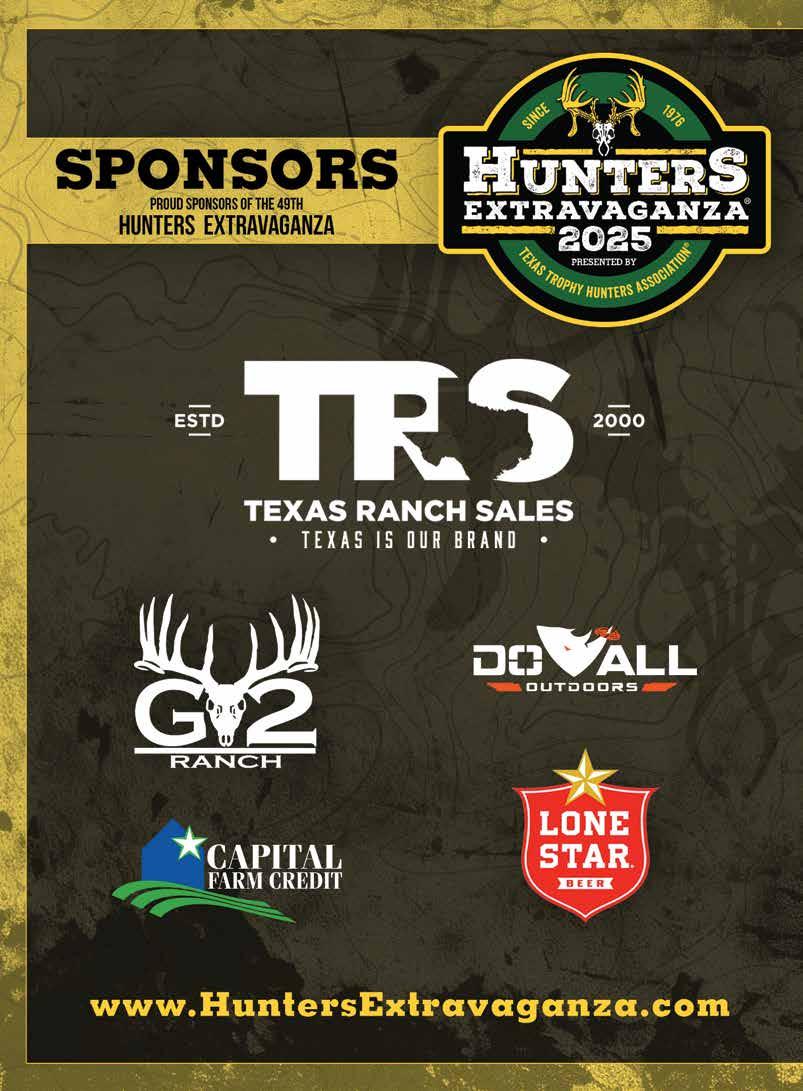




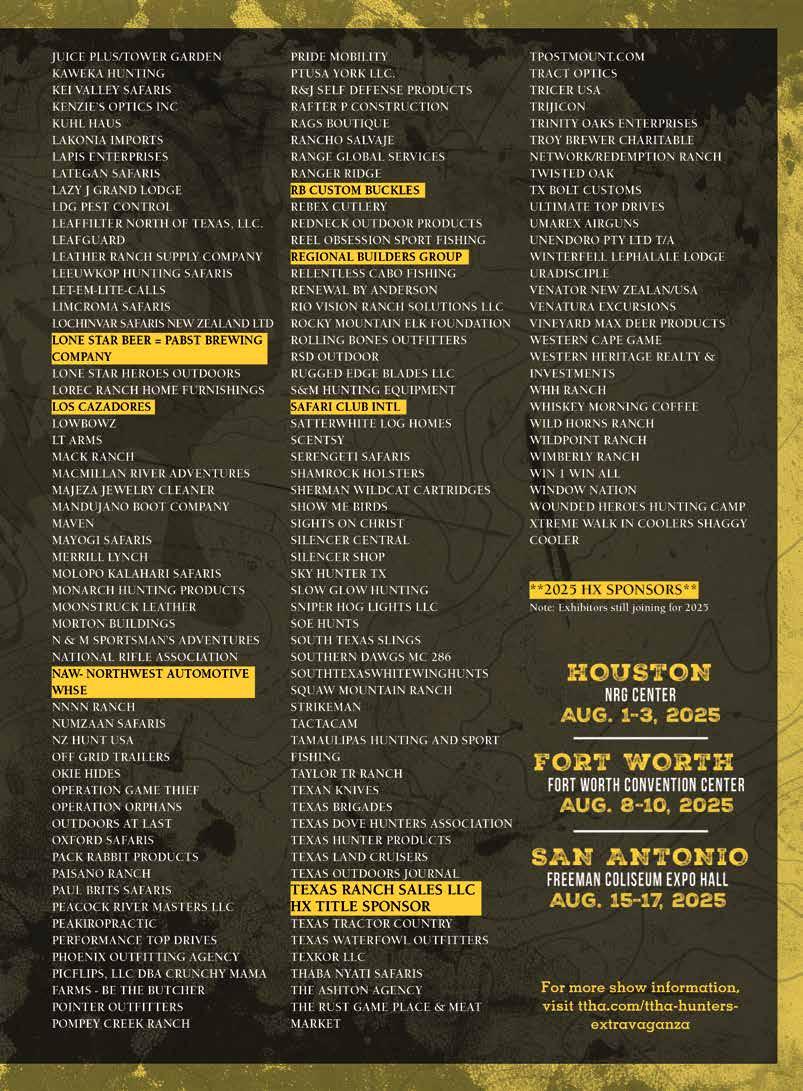

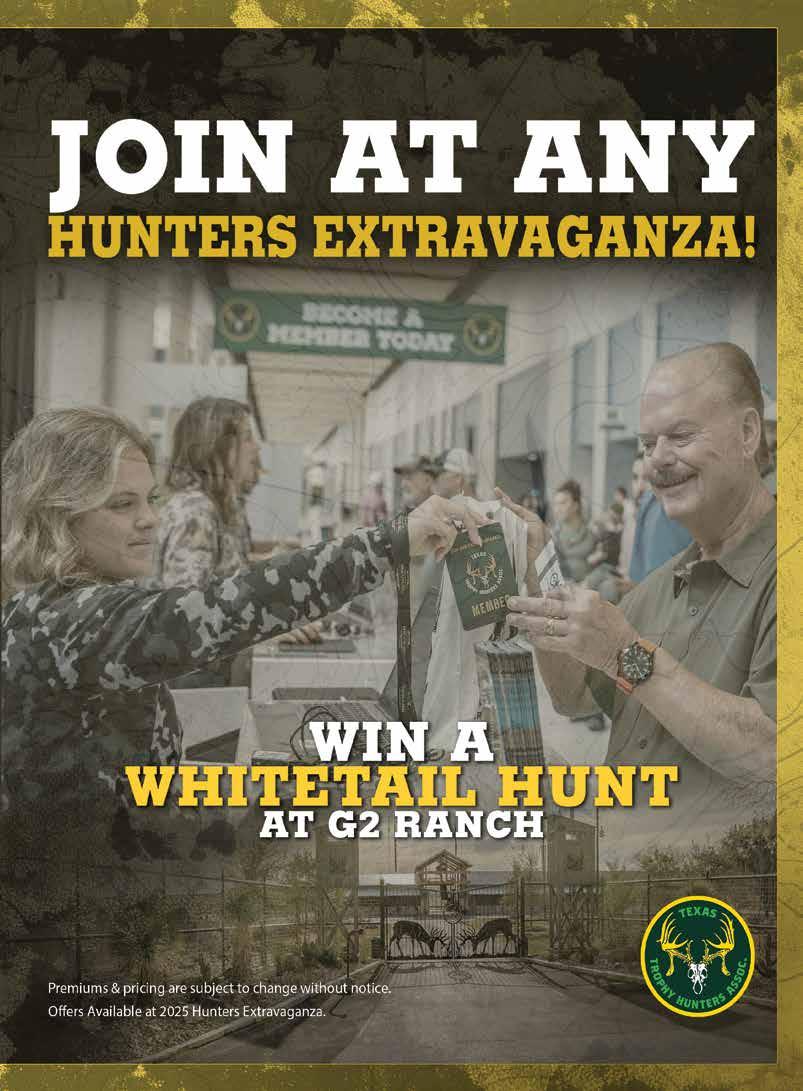
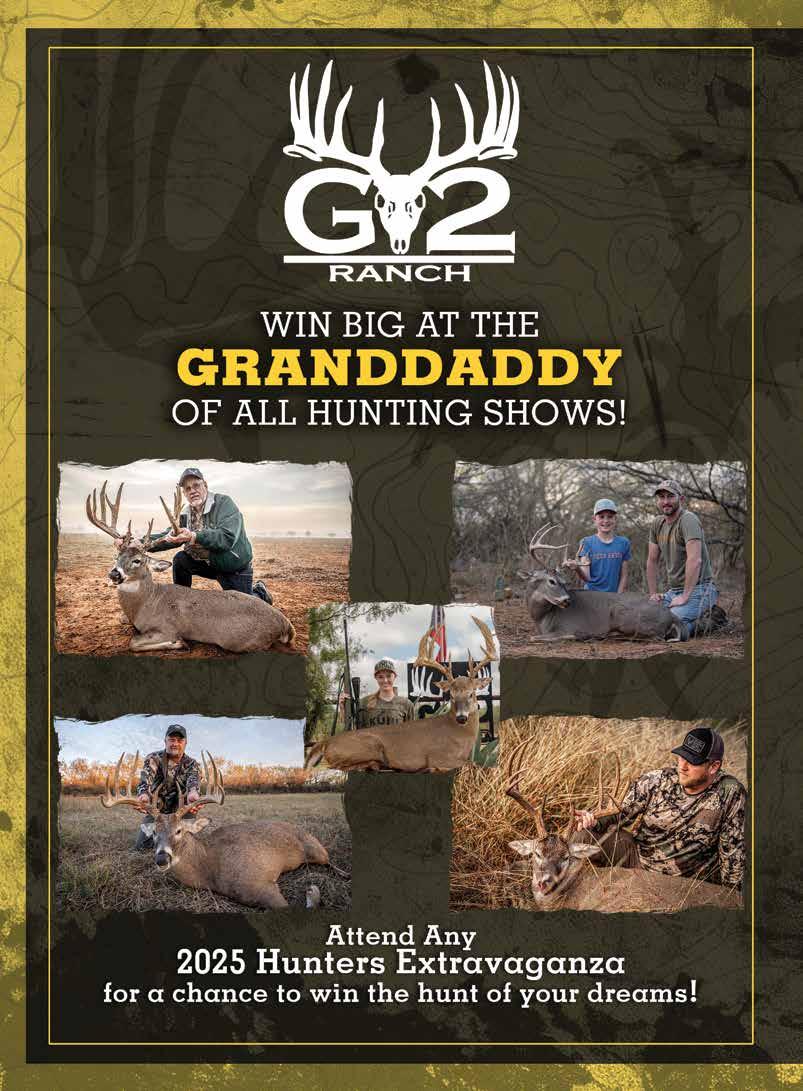


Tret with his grandfather and the deer Tret shot on his first muzzleloader hunt, using his grandfather’s muzzleloader.

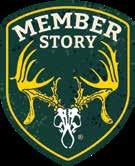
The towering pines of East Texas stood silent, their needles damp from the morning dew. I sat perched in the old wooden stand, gripping my grandfather’s muzzleloader with a mix of reverence and anticipation. The air was crisp, carrying with it the familiar scents of pine, earth, and the faint hint of black powder. This was the land my grandfather had hunted on for decades, and now, with his treasured firearm in my hands, I would step into a tradition that runs deep in our family.
This was my first muzzleloader hunt in East Texas. It was more than just about taking a deer—it was about connection. Connection to the land, to my grandfather’s legacy, and to a style of hunting that requires patience, skill, and respect for the animal. I’d planned to take a whitetail deer with my grandfather’s old muzzleloader, an older model Traditions 209, the very firearm he had passed down to me.
However, as is often the case with hunting, unexpected challenges arose. The old gun had issues with misfiring and proving unreliable at the moment I needed it most. My grandfather, ever the prepared and experienced hunter, handed me his trusted newer CVA Optima .50 caliber muzzleloader. “Take my gun just in case you see one,” he said, ensuring I wouldn’t face disappointment due to equipment failure. Though it wasn’t the same as using his original muzzleloader, the sentiment remained. This hunt would continue the traditions he and my father had instilled in me since I was a child.
The morning stretched on in stillness, interrupted only by the occasional rustle of squirrels in the underbrush. I took deep, slow breaths, keeping my focus sharp and my senses attuned to the forest around me. Then, just as the golden light of the rising sun began to filter through the trees, movement caught my eye. Two does stepped cautiously into the clearing, making their way to the feeder, their ears twitching as they scanned the area.
My heart pounded as I slowly raised the muzzleloader, steadying my breath as my father had taught me. I carefully studied the two, deciding on the larger one. This was the moment I had been waiting for.
Tret planned on using this Traditions 209 muzzleloader, a gift from his grandfather, but the gun wasn’t working properly on the day of the hunt. So he used his grandfather’s newer model muzzleloader.

With a deliberate pull of the trigger, the hammer snapped forward, igniting the powder in an instant flash. Smoke billowed around me, momentarily obscuring my vision. The distinct scent of burnt powder filled my nostrils as I leaned forward, heart still pounding. As the smoke cleared, I saw her drop just a few yards from where she stood.
The shot was true. This marked my first East Texas harvest, my first muzzleloader shot, and my first time hunting on my grandfather’s land—a trifecta of milestones that made the moment unforgettable. The forest seemed to pause with me, as if recognizing the weight of the occasion.
I have taken my fair share of deer throughout the years, but this one was special. It brought back the memories of my very first deer—the buck fever, the heart-pounding adrenaline, and the overwhelming joy and excitement when I saw the deer lying on the ground. This moment felt like a full-circle experience, connecting that initial thrill to a deeper, more profound ap -
preciation for the hunt. I took a few moments to collect myself, allowing the significance to sink in before climbing down from the stand.
As I heard my grandfather pull up in his Honda Pioneer, I climbed out of the stand and joined him on the way to the harvest site. There she was, lying peacefully on the pine needlecovered floor of the woods. I couldn’t help but notice the look of excitement and pride on my grandfather’s face—a look that mirrored my own feelings. He had been hunting the East Texas woods long before I was born, and now we were sharing this moment together.
We stood there for a moment, soaking in the weight of the experience—an unspoken understanding passing between us. Together, we admired the doe, acknowledging the significance of the hunt, the responsibility it carried, and the gratitude we felt for the harvest. Then, with care and respect, we lifted the carcass and placed it in the back of the Honda. As we drove back to the house, the hum of the engine was accompanied by easy conversation, laughter, and the warmth of a shared tradition. This was more than just a hunt. It was a memory etched in time, a bridge between generations, and a moment neither of us would ever forget.
Pulling up to the shop, we knew the real work was about to begin. My grandfather and I, side by side, armed with a couple of sharp knives and a steady rhythm of old country music playing in the background, set to task. Within an hour, the doe was carefully cleaned of her hide, her meat prepared and portioned with care. Sharing this process with him made it all the more meaningful.
He guided me through each step with the same patience and wisdom he had always shown, weaving stories from his own hunting days into the task at hand. The innards were disposed of respectfully, and the succulent cuts were packed for transport back home. The process was as much a ritual as the hunt

itself, a moment of reverence, gratitude, and connection—to the harvest and to my grandfather.
As we cleaned up, my grandfather wiped his hands on his worn leather gloves and looked over at me with a nod of approval. “You did good,” he simply said, but in those three words, I heard so much more. I heard pride, tradition, and the passing of knowledge from one generation to the next. That morning in the East Texas Piney Woods was more than just a first muzzleloader hunt. It was a rite of passage, a bond with my family’s past, and the beginning of a lifelong respect for the sport and the land that sustains it.
From all the teachings I was presented in hunting with my father till now has truly helped in making me into the outdoorsman I am today. Being able to further my knowledge, love, and passion for the sport that so much of us love and endure is a past time many of us get to enjoy as kids with our fathers and grandfather. During the ride back to the house, I knew this wouldn’t be the last time I walked these woods with my grandfather’s muzzleloader in hand. The sun had risen higher in the sky now, casting long shadows across the pines, but in my heart, I knew this moment would remain forever bright.
Sometimes we find ourselves forgetting the small things—the lessons, the moments, and the traditions our sport was built upon. From those long mornings in the blind with our fathers, where we likely spent more time playing with a Game Boy than actually hunting, to moments like this—where even after years of experience and countless harvests, there’s always something new to learn and memories to make. And for that, I am forever grateful to my father. He’s the one who introduced me to the world of hunting, who passed down his knowledge and passion, and who first ignited that spark in me. What began as a flicker has since grown into an uncontrollable bonfire, fueling my love for the outdoors and carrying forward the traditions that will forever bind us through generations.
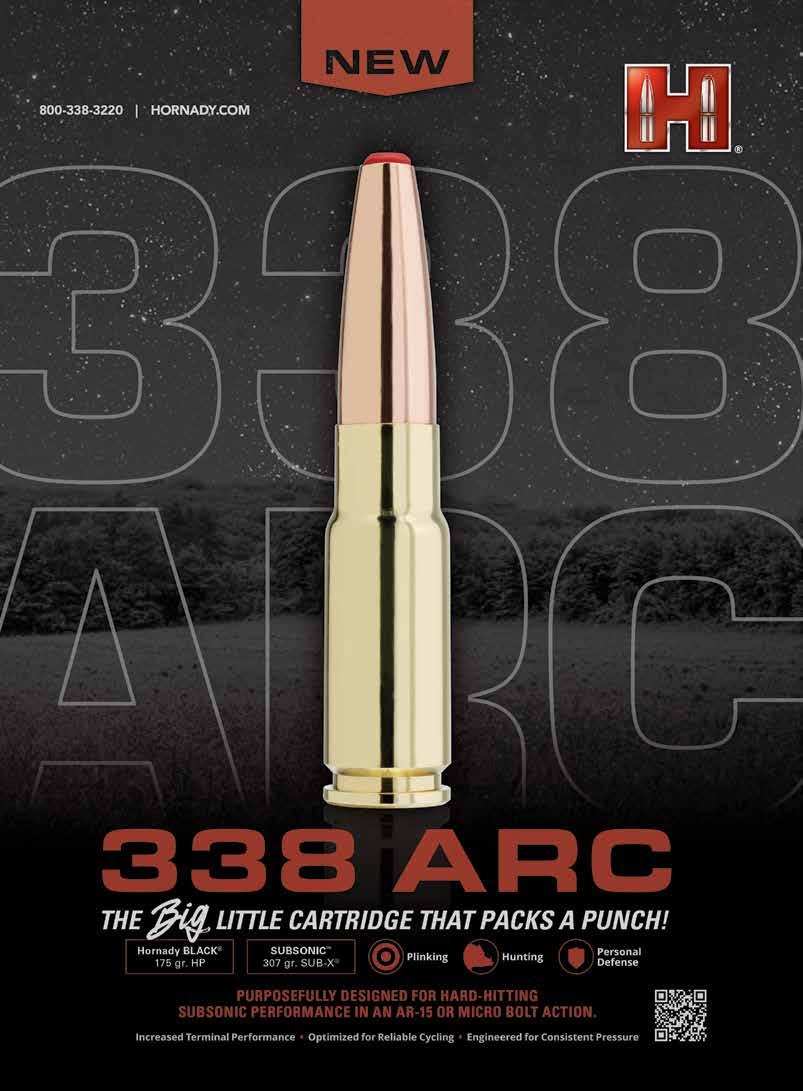
Each year during the month of August, deer hunters of all ages from Texas, Mexico, and out-of-state, bring their bucks to the Hunters Extravaganza Annual Deer Competition in Houston, Fort Worth and San Antonio. Young hunters proudly enter their trophy—sometimes their first buck—hoping to win a prize. TTHA is proud to recognize some of these young hunters and their trophy bucks.

By Horace Gore
The Newman family lives in the small community of Maydelle on State Highway 84 between Rusk and the Nueces River in Cherokee County. The Newmans are a hunting family that finds deer hunting along the Nueces a pleasurable outdoor sport for parents, kids, and kin. The oldest boy, Ty, is 14 and took his sixth buck during the 2023-24 deer season. His sister Tenley is 12, and took her first buck during the same season.
Ty and Tenley attend Rusk Junior High where Ty is in the eighth grade and Tenley is in the sixth grade. Ty likes baseball and football. Tenley likes soft-

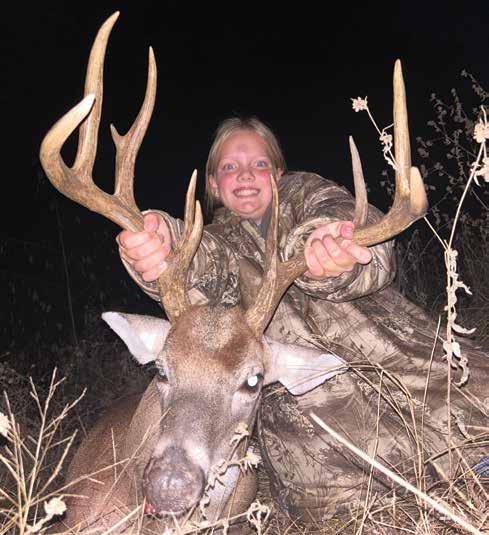
ball and plans to play volleyball next year. Of course, both like to hunt. Ty hunts doves, quail, ducks and deer. At 12, Tenley is interested only in deer.
Both hunters took their bucks to the 2024 Fort Worth Hunters Extravaganza and entered the Annual Deer Competition. This story is about Ty and Tenley, their deer hunts, and the results of the deer competition at Fort Worth. Meanwhile, their little brother Tripp, 9, is chomping the bit to get his first buck, and we hear from hunter talk that he may have taken a 10-point last season. Stand by!
Ty and Tenley both hunt with family adults on a large deer lease that lies on both sides of the Nueces River. Their hunts in this story occurred on the Cherokee County side, where Ty hunted with his grandfather, Rodney Newman, and Tenley hunted with her father, Jacob. The hunts were both from high blinds near corn feeders, but the hunts were quite different as we shall see.
Shortly after the deer season opened in 2023, Tenley let it be known that she wanted to deer hunt. She had a scoped .243 deer rifle and was ready for the challenge. Jacob agreed to take her for her first buck. The weather was good, and deer were coming to the feeder.
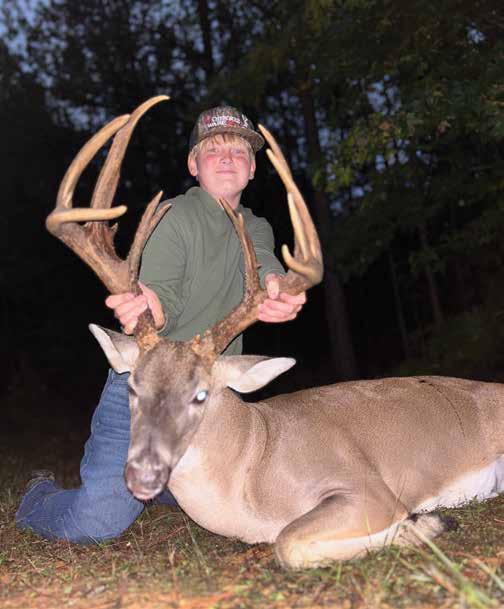
Ty had his grandfather’s .308 ready when this trophy stood broadside, and Ty quickly felled the buck with a bullet just in front of the shoulder.
On the morning hunt, a shooter buck showed up near the feeder and Tenley was nervous about taking her first shot at a buck. She missed. The deer whirled and disappeared into the woods. Both Jacob and Tenley were disappointed with the hunt, but Tenley was anxious to return for another chance at the buck.
An evening hunt had Jacob and Tenley back in the blind, hoping for a shot at the buck she had missed with her .243 earlier in the season. Jacob hoped Tenley would settle down and make a better shot if the buck reappeared. She had shot the gun several times and her aim appeared good with the light recoil of the little rifle.
Their hunt was short, as the buck Tenley had missed before came out of the
woods in early evening and meandered toward the feeder. When the buck was close enough for a good shot, Tenley raised her .243 and poked the barrel out the blind window. While getting adjusted for the shot, she breathed on the scope glass and it became fogged. “I can’t see through the scope,” she said to her dad. Without hesitation, Jacob switched her .243 for his .300 short Mag. Tenley found the buck in the scope and put a bullet through the buck, which wheeled and bounded into the brush.
“Did I get him?” Tenley asked as she looked up at her father with a small trickle of blood running down to her nose. “You sure did, and looks like the rifle recoil got you!” The scope mark on Tenley’s forehead took a little out of her good shot, but Jacob knew that her first buck wouldn’t be far into the timber. After a short wait, the father-daughter duo left the blind to follow the blood trail to
the dead buck. Tenley was excited with her first buck, which would later score 134 5⁄8 gross B&C.
Ty wasn’t after just any buck—he wanted to take one of the biggest bucks he has seen on the lease to the skinning rack. He and Grandfather Rodney were in a high blind just east of the Nueces where they had sat morning and evening for several hunts with no luck in getting a shot at the big buck. Jacob was not taking any chances by letting Ty shoot the buck with his .22-250. Although Ty had taken two bucks with the little rifle, Jacob wanted his son to use Rodney’s .308 if he got a shot.
Patience was rewarding on a cool evening when the big buck followed some does to the feeder. After all the
hunts and no deer, Ty was nervous, but this was not his first buck—just his biggest. He had his grandfather’s .308 ready when the buck stood broadside, and quickly took advantage of the shot. Both Ty and Rodney were surprised at how quick the buck fell as the 150-grain bullet cut hair just in front of the shoulder.
“I was aiming for the shoulder and hit the buck at the base of the neck,” Ty said, as he and Rodney came up to examine the dead deer. “None of my other bucks fell that fast.” They rolled the buck over to see if the bullet had emerged after the shot, and Ty immediately saw a gaping hole where the bullet has passed through. “He probably didn’t know what hit him,” Ty said as Rodney shook his hand and patted his grandson on the back.
Rodney looked at the antlers, which were typical with several odd points. “He’ll gross good, but he has several deductions. I would guess him to be about 170 or so gross.” Ty had already thought about the Fort Worth Extravaganza if he got the buck, and now it was decision time. Both he and Tenley wanted to take their bucks to the deer competition, so when the time came in August, Jacob loaded up the family for Fort Worth.
Tenley’s buck had several deductions and did not score “net” very well. Her gross of 134 5⁄8 ended up 1132⁄8 net, so no big prize. Her brother’s buck followed the same pattern of deductions and scored 168 6⁄8 gross, but fell to 1361⁄8 net. However, the folks liked the looks of Ty’s buck, and he won the People’s Choice Award.
Both bucks made a good addition to the array of antlers for attendees to view. You can bet the Newsom hunters will be in the deer woods of Cherokee and Anderson counties this fall (2025) looking for good bucks: Jacob, Rodney, Ty, Tenley, and Tripp.
TTHA congratulates Ty and Tenley for their good bucks and wish all the Newmans good luck in the deer woods of Cherokee and Anderson counties. TTHA is always proud to hear stories of young hunters like Ty and Tenley and their quest for America’s favorite cervid—the whitetailed deer.

Ty’s buck scored 1686⁄8 gross and 1361⁄8 net and won the People’s Choice Award at the Fort

Tenley was excited about her first buck, which would later score 1132⁄8 net B&C.

By The Old Hunter
“I’d like to shoot a .30-06, but I can’t take the recoil!”
How many times has recoil been a factor in what rifle a deer hunter shoots? “I need the extra punch of a 12-gauge, but the recoil just kills me!” The chant often heard from many wing shooters who are recoil sensitive. It is a fact that recoil or “kick” is a problem with many hunters in the U.S., and the problem has been dealt with in many ways: weight, barrel length, stock length, recoil pads, trigger, and muzzle brakes.
One way to deal with recoil in a rifle caliber is to shoot the caliber that you shoot best—both for accuracy and recoil. For example, any rifle caliber and bullet that carries 1,000 pounds of energy at striking distance will kill any deer-sized animal.
The need for a .30-06 with 18 foot-pounds (fp) of recoil over a 7mm-08 with 13 fp is in the mind of the shooter and is not necessary to kill a deer or hog at normal hunting distances. The same is true for the .270 at 17 fp of recoil over a .25-06 with 13 fp of recoil. The popular .243 with 100-grain bullet has 9 fp of recoil—half that of a .30-06. “Kick” often determines a hit or miss when the shooter is expecting to get zapped, so don’t shoot a caliber that makes you flinch, and miss your target.
Texas deer hunting has changed during the last 50 years. When hunters hunted from tree limbs alongside a wheat or oats field or sat on a bucket watching a long sendero, they sometimes felt a larger caliber was needed for an occasional long shot. Today’s deer hunter sits in a comfortable blind equipped with a good gun rest, looking at a feeder that is usu-

ally less than 70 yards away.
A deer coming to the feeder is normally shot at close range and a long list of rifle calibers with less than 15 fp of recoil will suffice, if the shooter can hit a grapefruit at feeder distance. These calibers include the .22-250, .243, .25-06, 6.5 Creedmoor, 7mm-08, and 7mm Mauser, to name a few. So, shoot the biggest caliber that you shoot best, and you won’t go wrong.
Shotgun recoil is another matter. It may surprise you to see the difference in recoil when a rifle or shotgun fits you. Stocks too long or too short have a lot to do with recoil. A good recoil pad and the type of ammo you shoot also play a big part in shotgun recoil. Dove hunters should shoot light loads, while waterfowl hunters need heavier loads.
You should shoot the shotgun gauge that you like and shoot best. Make sure the gun fits you and choose shotgun shells that you shoot best. If you can’t shoot heavy loads, then shoot light loads. Pick the combination of gauge and ammo that you shoot best, and you will do better on quail, doves, or ducks, or skeet.
Tip: Check your dominant eye. If you’re right-handed, close your left eye and point your finger at an object. Keep your finger on the object and close your right eye. Your finger should be to the right of the object when you look through your left eye.
Another tip: Keep both eyes open when shooting a shotgun if your dominant eye matches your dominant hand.



Kyle Cutbirth, a longtime friend and hunting buddy from Brownwood, called a few days ago to tell me about a most unusual young lady in Brownwood who has become a renowned bowhunter. “She’s a new ‘Miss Robin Hood’ who has recently taken up the bow and two good bucks during the last two deer seasons,” Kyle remarked. “She’s a fantastic bowhunter. You need to call her.”
“What’s her name?”
“Lexa Jones.”
Lexa is one of the many lady bowhunters who are emerging in the wilds of Texas. However, her story is unusual because she didn’t pick up a bow until she was 25 years old. With coaxing from friends, Lexa bought a compound bow and found that she loved shooting the “string and feather” so much, she decided to try deer hunting.
Lexa was born in Brownwood, but her parents moved to Kansas, and now she’s back in Brownwood and has taken up bowhunting for Texas whitetails. Brown County was stocked in two areas with King Ranch whitetails in 1950 by the old Texas Game and Fish Department, and deer hunting has become a top sport in the farming-ranching county. Each year, hunters enjoy deer, turkey, dove, and varmint hunting in a diverse habitat of live oak-Spanish oak that is mixed with farming—ideal for a mixed bag of hunting. It’s easy to see why Lexa took to the brush for whitetails with her newfound sport of bow hunting.
Brown County has a strict buck limit—only one buck with an antler spread over 13 inches. Lexa wanted to deer hunt with her bow and continued practicing on a backyard target. In the meantime, she was creating a “hot spot” for deer on a family-owned 10 acres just west of town. Kyle, a family friend, had given her a battery-operated deer feeder that scattered corn, and Lexa bought some fancy flavored feed that she poured on the ground. The deer were coming, and Lexa’s plan for a bowhunt buck was working.
Lexa has a longtime eye problem that prevents her using conventional sights on her compound bow, but the bow shop helped her adjust to a red dot sight that works well. Practicing with the bow and red dot sight paid off in the deer blind when the season opened in October 2023.
By the opening of archery season, Lexa had several bucks and does coming to the corn feeder. After a few daybreaks in her popup ground blind, Lexa took her first deer with the bow—an eight-point buck. She arrowed the buck straight through both lungs for a quick takedown. “We ate everything but the hide and antlers of that first buck,” she said, “and I was anxious to try for another deer when archery season opened in 2024,” Lexa said.
Lexa continued to practice with her 58-pound compound bow as she waited for the 2024 archery season. She had a good number of deer coming to the battery-timed corn feeder, and she had her eye on a big 10-point when the season opened. Lexa decided it would be the 10-point or nothing. “I wanted that big 10 and just waited him out,” she told me.
“I was in the blind on the first morning of bow season, hoping for a shot at the big 10,” Lexa said. “Deer hunting was still new to me, and the first buck had come pretty easy.” Lexa waited with her bow and arrow for a good shot at the big 10 that she had named her “Ten-acre Ten.” She wondered if the 10-point would fall as quickly as her first eight-point.
Lexa hunted practically every morning of the season for two weeks before getting a good shot at the wide 10. She had passed up smaller bucks several times before the big buck presented a good broadside shot from her popup blind. The monstrous buck stood only a short distance away as Lexa readied for the shot. The arrow flew well, but Lexa knew it had hit too far back for any quick knock-down on the buck. She watched as the wounded deer stumbled and ran to lay down behind some thin oak brush.
Lexa could see the buck lying on the ground just out of bow range as she phoned her father, Jason, to tell him about the wounded deer. He quickly came the short distance to Lexa’s blind, and they quietly decided he would try to move the buck toward Lexa for another shot. As Jason moved through the brush, the buck got up and walked towards the blind.
Lexa quickly arrowed the buck the second time, and it ran a short distance and fell. Lexa had successfully taken her second buck in as many seasons—a wide 10-point—with her string
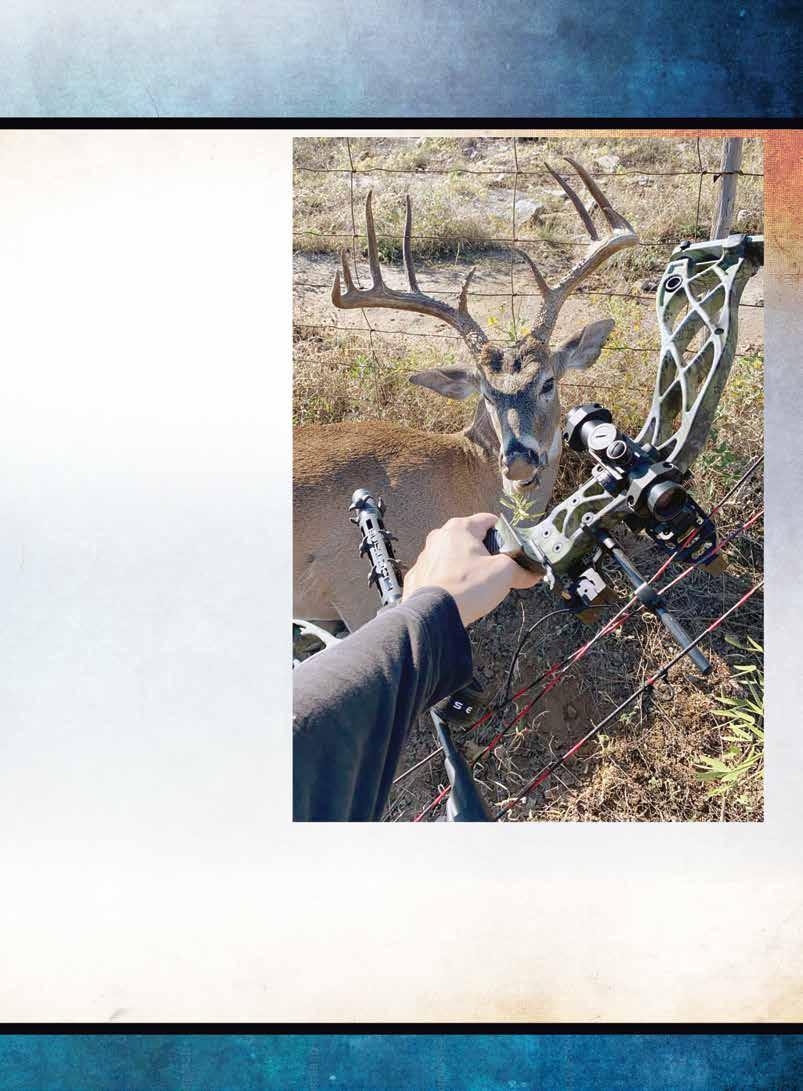
and feather. Lexa and Jason were giving high fives on Cloud 9. To say that Lexa has become a zealous deer hunter is an understatement. Her second buck in as many seasons has put Lexa in a fraternity of lady bowhunters who are proud of their sport and anxious for the next deer season. Practice never ends. Lexa shows a sense of achievement in her skill with a compound bow and the bucks she has arrowed in her short tenure as the “New Bow Huntress” of Brown County.
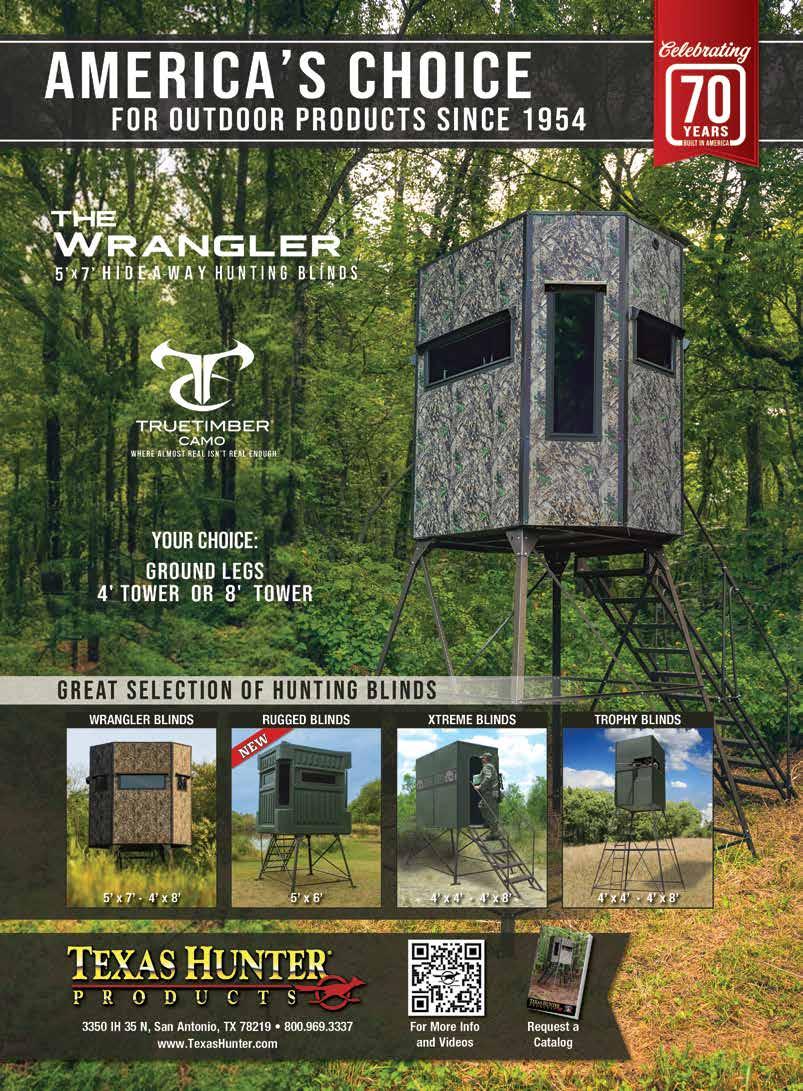

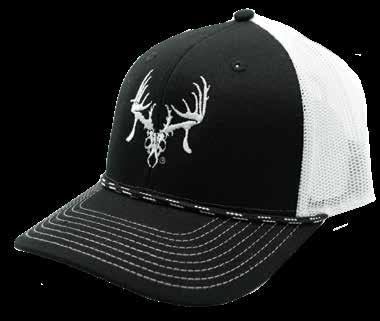
tthagear.com


Make sure to swing by the TTHA Merchandise Booth at any of the 2025 Hunters Extravaganzas. Grab all the latest gear from youth sizes for the little hunter to apparel for the seasoned hunter. We’ve got something for everyone. Plus, TTHA Members receive exclusive discounts on all official merchandise. Not a member yet? Join today and take advantage of the benefits of being a member. Visit tthagear.com.
The Texas Hunter Power Shelf keeps devices charged throughout the longest sits and can easily be mounted to almost any hunting blind. An integrated switchable green LED light shines down onto the floor, making gathering your gear or entering and exiting your hunting spot in low light scenarios much easier. The included solar panel mounts to the outside of your blind, and keeps the included battery continuously charged. Dual USB ports charge multiple devices with an included multi-format cable. A rubber mat on the top keeps devices from sliding around, and provides sound dampening. The powder-coated steel construction lasts for years. Visit texashunterproducts.com.
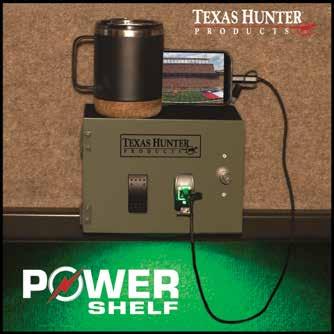
The TITANPro Combo Blind is a premium 6'x6' hunting blind designed for bow and rifle hunters seeking top-tier comfort, visibility, and performance. Spacious enough for up to three people, it features tinted windows, noise-reducing hinges, insect-screened vents, and a solid wood subfloor for stable shooting. Built from UV-stabilized polyethylene with a rotomolded design, it offers durability, weather resistance, and convenience with added storage and high-density foam flooring. Made in the USA. Visit titanblinds.com.



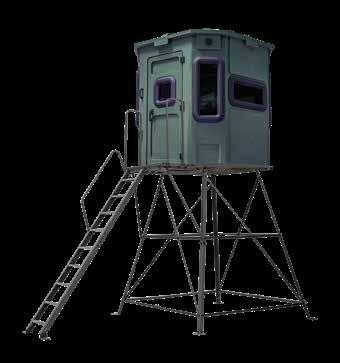
Cajun Kooling provides a line-up of superior air coolers for patios, shops, barns, events and more. Simply fill with water, plug in and enjoy 10–25-degree cooler air. Key features include high quality and weatherproof materials, strong and quiet motor, dust screens, pump protection, UV light technology, easy drainage, ice opening, and more. Enjoy your outdoor spaces again with Cajun Kooling. Visit cajunkooling.com.
Handmade in the USA from full grain bull hides, this innovative device eliminates the need for bulky cases. Simply hang your bow on the back of your seat for secure and spacesaving storage. Keep your bow protected and out of the way while freeing up valuable cargo space. Upgrade your bow transportation experience today with the Bow Rack. Visit STSslings.com.

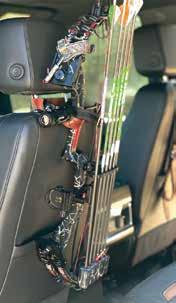

Elevate your culinary creations with Cattleman’s Brand Seasoning for beef, chicken, vegetables, seafood, and more. Family owned and operated, they offer the finest flavors to make every dish an unforgettable experience. Discover the perfect blend of taste and tradition today. Visit cattlemansbrandseasoning.com.
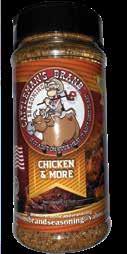

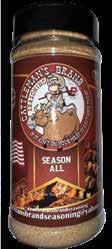

At The Ready custom pistol mounts are designed for one thing: quick, reliable access. Built with precision to match your firearm’s slide dimensions, they offer solid retention and rapid deployment when it counts. Crafted in Wylie, Texas, with highquality ABS plastic and powerful neodymi-
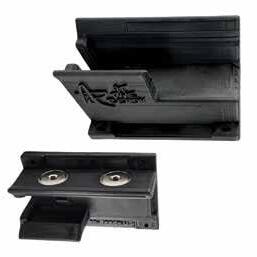
um magnets, these mounts are made to last. Plus, they come with a lifetime warranty and in a range of colors, customizable at no extra cost. It’s a veteran-owned company committed to quality and service. If your model isn’t listed, contact them to initiate the design process. Visit At-The-Ready.us for more
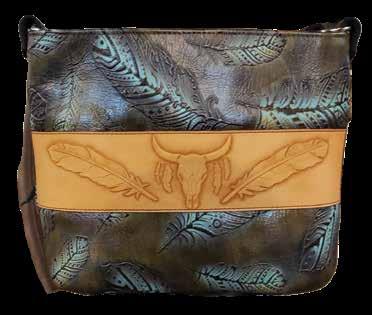
moonstruckleather.com
Conceal with style. Fine embossed cowhide leather, unique exotic hides, quality hardware, and all handcrafted in the USA. That’s what makes Moonstruck concealed carry purses stand out from the crowd. From a beautiful embossed black crocodile to captivating exotic axis deer, they have luxurious conceal-and-carry options for the woman who demands style with protection. Visit moonstruckleather.com.


Add the ability to conserve feed to any AWS protein feeder with the timed option. You can choose to free feed as well so you have options for different times of the year. AWS continues to innovate and develop new products that appeal to the budget minded and to those with discerning tastes. Visit awsblinds.com.
awsblinds.com

Large, shaggy, prehistoric mammals with heavy, dipping, curved horns that live near the Arctic Circle aren’t the typical quarry for muzzleloader hunters. However, a hunt for the unique muskox will test your skills in stalking, as well as shooting on the wide-open tundra of the Northwest Territories.
The muskox (Obibos moschatus) was one of a few species of Pleistocene megafauna in North America to survive when most other large mammals became extinct 10,000 or so years ago. They are truly a unique prehistoric mammal that has evolved to survive extremely harsh climates and weather near the Arctic Circle.
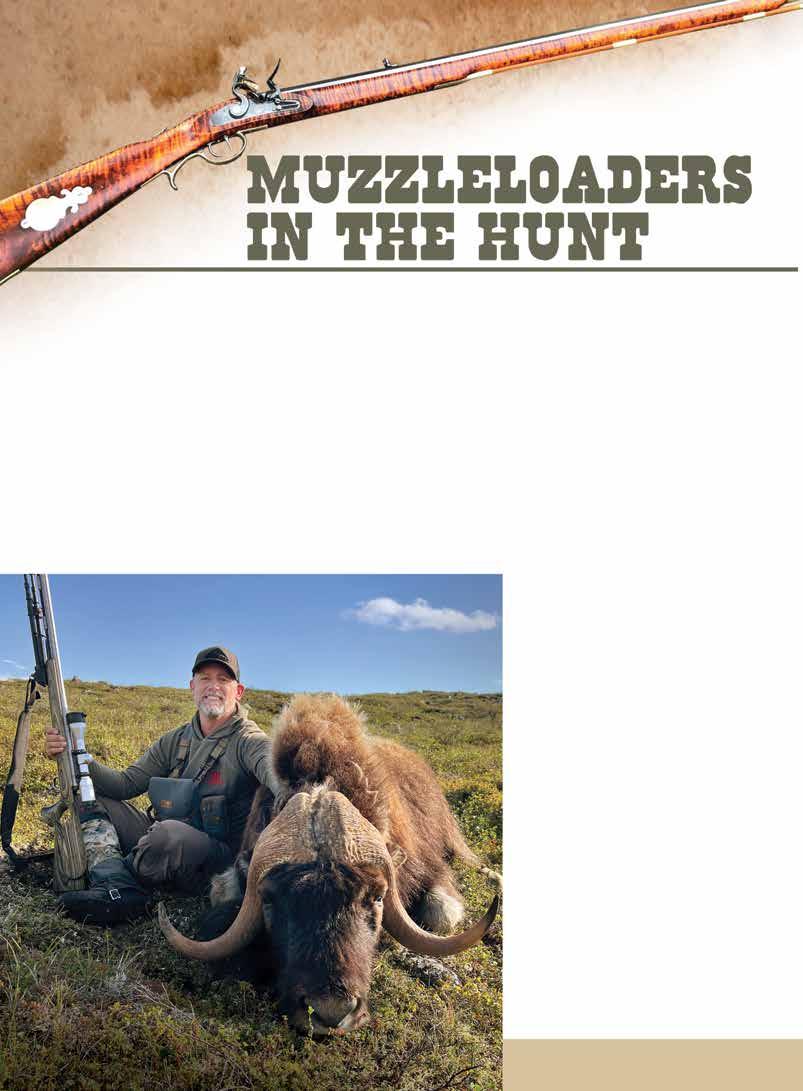
Hunting muskox near the Arctic Circle will provide muzzleloader hunters quite a challenge.
A hunt for muskox can be done either in the spring—March— or in the fall—August through October—depending on where you hunt. The extreme temperatures in March, -40°F or colder, deter most hunters during spring. However, muskox hair is much longer and very dense that time of year, making a quite incredible trophy.
My first choice was a spring hunt, and I prepared my gun and gear for the extreme cold. Unfortunately, the hunt got postponed until fall, due to incredibly dangerous storms and limited transportation options.
The key things I learned about preparing a muzzleloader for weather extremes is to completely strip the gun of any oil, lube, or grease because it will freeze and potentially cause misfire failures. Additionally, it’s wise to use bullet-to-bore, full-sized lead or copper projectiles with no sabot, due to inconsistencies of material shrinkage in extreme temps. I’ll cover more of the extreme cold muzzleloading equipment precautions once I complete my proposed polar bear hunt.
With the hunt cancelled for March, we rescheduled for August at Alymer Lake Lodge in the Northwest Territories, Canada, near the Arctic Circle, which is only accessible by float plane. After arriving and settling in, we discussed the weather, temperatures, and hunting plans. I shot my muzzleloader to check the zero and then stripped it down and cleaned it completely that night.
Daily rains and incredibly high humidity meant this would be a hunt where I would not load my gun until the final stalk, and ready to shoot. I would keep my muzzleloader rifle in a water-resistant scabbard until I needed it because of the 100% chance of rain.
Kevin McNeil, my outfitter and guide, and
I discussed muskox anatomy and shot placement. This is particularly important for a muzzleloader hunter as muskox bones are large and dense and have been known to deflect large caliber bullets. So, shot placement is paramount. The heart and lungs are partially shielded by shoulder blades and thick ribs so you must be steady and pick your shot.
To add to shot difficulty, muskox have long shaggy hair that make their body appear as if they go all the way to the ground, when in fact they generally have standard ground clearance. My bullet selection was a 250-grain sabot T/C Shockwave seated on 150 grains of Triple Seven pellets, since accuracy and trajectory was more important than projectile size.
Daily transportation was by boat, cruising the miles and miles of shoreline on Alymer Lake. Every hour or so we would pull the boat over and glass from a high point to search for any muskox. We normally saw muskox daily, with our sightings varying from singles to small herds of 10-20 animals. Just being in the barren lands of the Northwest Territories is worth the trip, but knowing if you look hard enough, and cover enough ground, you have the chance to encounter a monster bull muskox that may have never seen
a human before.
We were on a small island in the lake taking a typical lunch break on Aug. 16, sitting on a rock eating and glassing far and wide. The steady drizzle made it more challenging, but I was positive I saw 15-20 brown spots moving at over a mile. My guide confirmed it as a herd of muskox and there were multiple body sizes, so we hoped a trophy bull was in the group.
We loaded up and motored as close as we could to their location, where we tied up the boats and the four of us began our mile-long stalk. My friend Kevin Orton and his guide Dale Finch went along, in case there were multiple bulls, and they offered to help pack out if there was only one trophy.
We were 400 yards from the herd and glassed two or three big bulls, but it would be difficult to close the distance to muzzleloader range. The next 45 minutes we low-crawled through springs, bogs, and crevices in the tundra and found ourselves out of options at 237 yards from the largest bull we could see.
I loaded up with powder and bullet while laying on my back, which is quite a difficult task, but I couldn’t risk being exposed, or it would be all for naught. The drizzle and rain had stopped, and we had
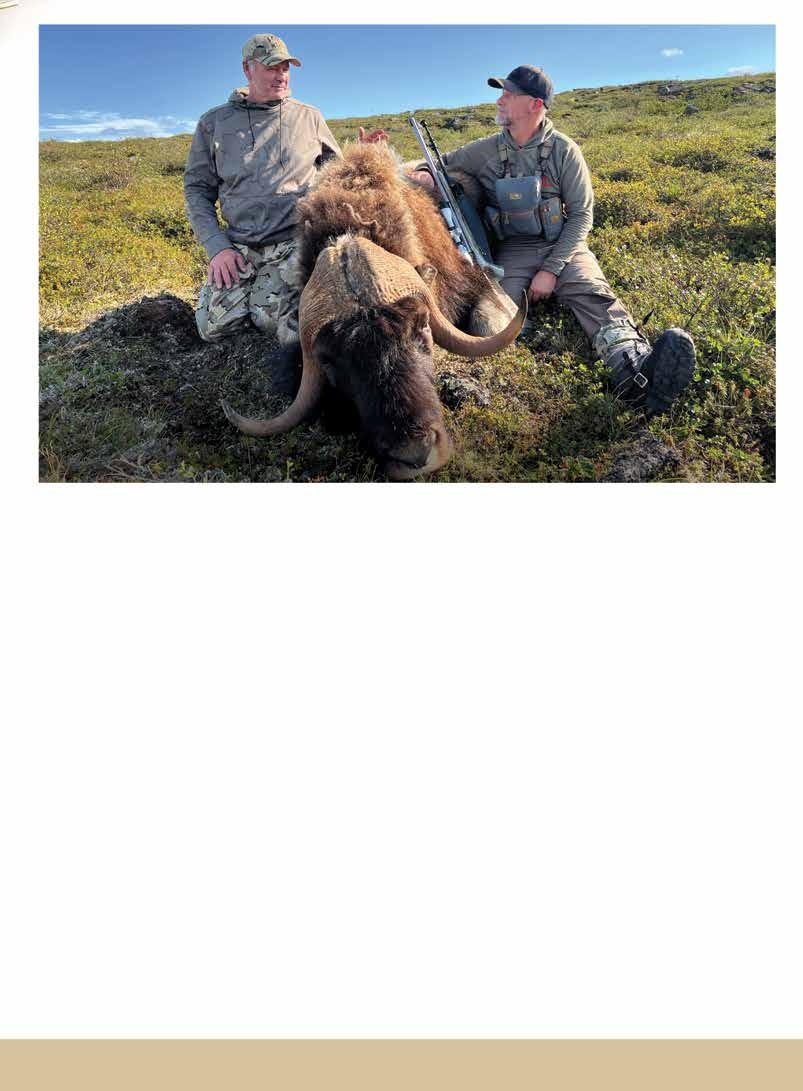
our very first glimpse of blue sky, which also brought out swarms of mosquitos and assorted bugs.
I laid the muzzleloader atop my backpack and found what I thought was the herd bull. I also realized we’d been spotted. I quickly found the bull’s shoulder with the crosshairs as he turned broadside to run. I squeezed trigger and a mountain of smoke covered the immediate horizon.
My 250-grain sabot bullet had found the bull’s heart and stopped his run. He stood wobbly for a moment before stumbling and falling, which confused the herd long enough for Kevin to shoot an even bigger bull that had been bedded off to the side.
We had two Boone-and-Crockett-sized bull muskox down within a minute on a rare bluebird day near the Arctic Circle. The work began because there is no easy way to deal with two bull muskoxen on the tundra of the Canadian Northwest Territories.
Some may doubt the effectiveness of a muzzleloader on larger game animals like muskox, but I assure you a .50-caliber hole in the right place will stop any animal in North America. So, shoot straight and search for your next adventure while taking your muzzleloader on the hunt.
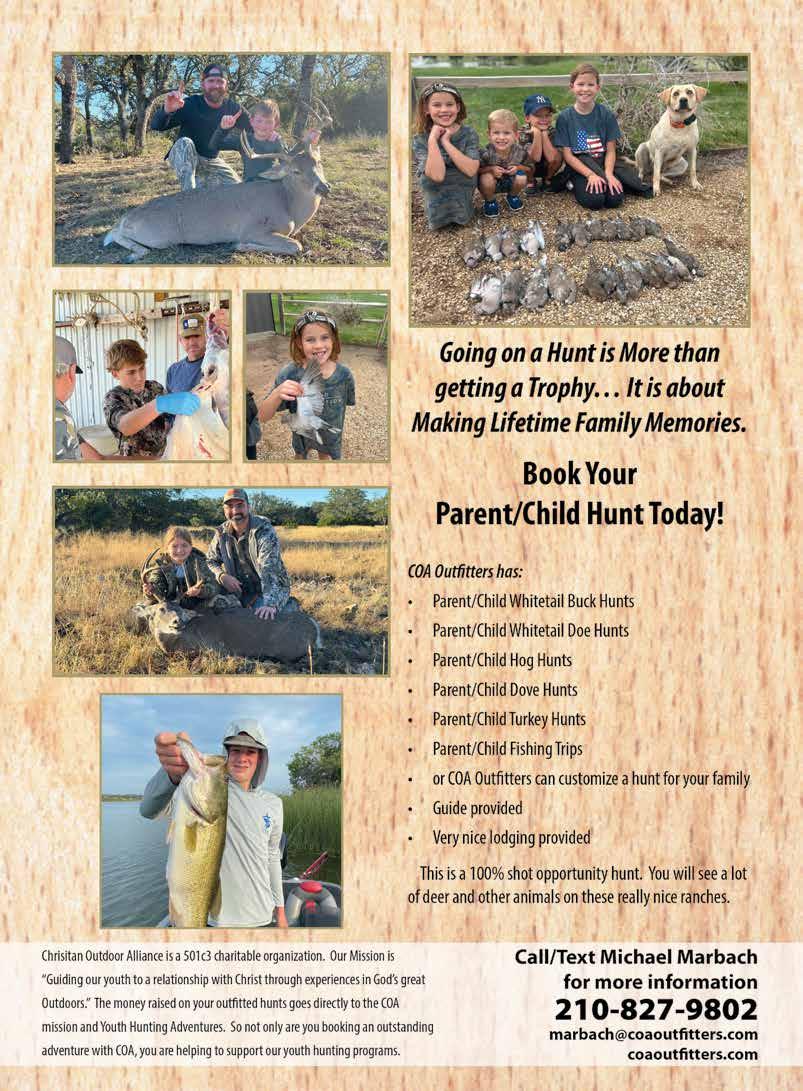

One of the things I learned early in life was how to process the game animals we took on our hunting adventures. Back in those days, most of what we shot were whitetail deer, hogs, turkeys, and fish. I was very blessed to have a father that really liked all the game animals and taught me to use the meat we would process together.
My father built what we called a “smoke house” at our home. At the end of each weekend, if we were successful, we would start prepping the game for a Monday evening processing party. Lots of our friends and family would gather at the smoke house each Monday to either process their game or come by for a visit. Most of the time we discussed what all we saw from the past weekend’s hunts. It was a lot of fun and also a great learning experience from a lot of very experienced outdoorsman.
The kids who attend our summer camps really enjoy the wild game dinner we serve on the last evening of camp. Of course, the kids take some great animals each week and a small portion of their animal gets added

to the final dinner on Friday nights. Because we do this, we have added a processing aspect to the camp so the kids can learn about processing their own game. We do lots of burgers, pan sausage, link sausage, jerky, and steaks from the animals we take. As we go through the week, the kids get served all the game meats for just about each and every meal. We have burgers, tacos, pizza toppings, spaghetti, chicken fried steaks, smoked whole hogs, breakfast sausage, and more.
To make sure we do it right, the process starts in the field when we’re successful taking an animal. Next, we want to get it gutted and skinned in a timely manner to protect that precious resource of valuable meat. We are very fortunate to have a really nice walk-in cooler, which enables us to get the meat chilled very quickly. We can also age the meat for several days before we process, which helps the muscle fiber break down and gives that meat a really good flavor.
According to Petersen’s Hunting: “Aging game meat, including deer and other venison, does two

things. It breaks down connective tissues via naturally occurring enzymes, resulting in a product that is more tender. It dehydrates the moisture within the muscles, leading to an overall weight loss of up to 30 percent, concentrating that meaty flavor we all love.”
The other thing we like to teach is how we blend the meats. For instance, after we shoot a deer we blend the meat with some of the hogs we’ve taken, and make link sausage and pan sausage. Another good thing I learned was to incorporate some beef tallow or brisket into my venison burger. It gives it a lot of great flavor and adds just the right amount of fat to a very lean piece of meat.
The pressure cooker has become a great piece of equipment for a venison front shoulder. The meat will come right off the bone after a slow cook. Then add your seasonings and veggies and you have a world class stew.
We love the summer camps and all the great recipes we create and re-create. The food is exceptional and it’s fun to see your game go from field to table.
Michael Marbach is the CEO of the Christian Outdoor Alliance, mycoa. org; 210-827-9802. COA’s mission is to guide youth and outdoorsmen to a relationship with Jesus Christ through experience in God’s great outdoors.
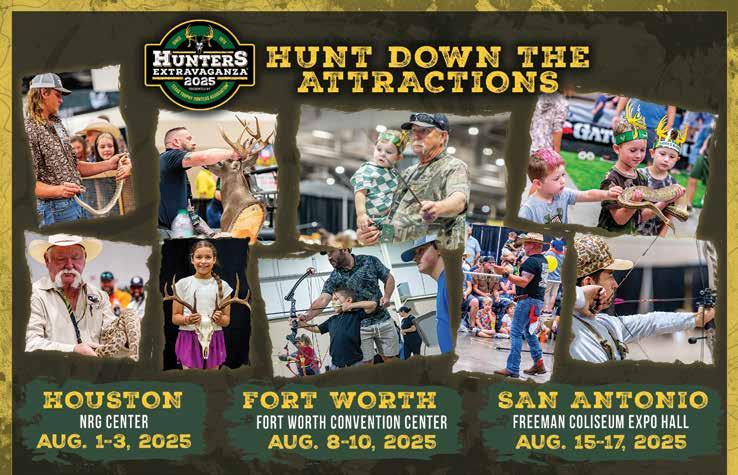


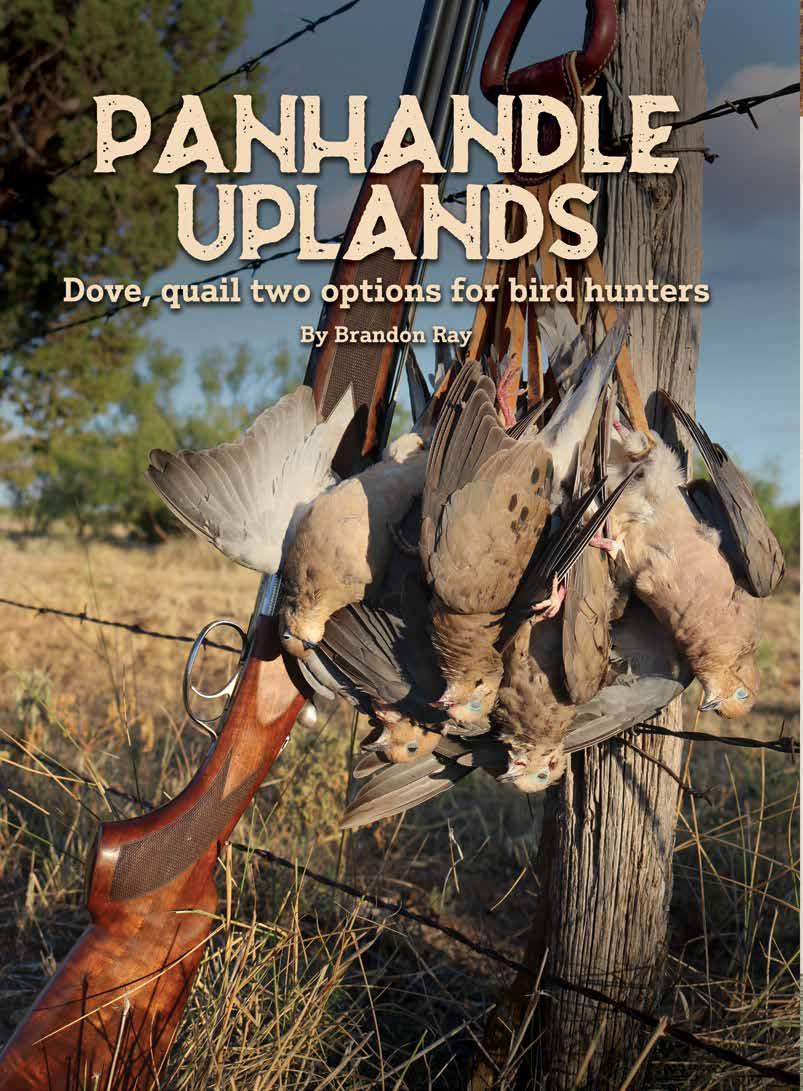
It was a deer hunt last winter that reminded me of the abundant bird life near my Panhandle home. On the drive to my deer blind, I passed a half-frozen playa lake covered with ducks. I would estimate 200 mallards and pintails were on the water. Down a bumpy dirt road, a rooster pheasant cackled when he burst from a pile of tumbleweeds.
The wheat field just off the county road was dotted with 30 or more tall, lanky sandhill cranes. Finally, sitting in the blind, a dozen mourning dove and 14 bobwhite quail scratched for cracked corn while I waited on a buck. At sunset, a large “V” of Canadian geese dipped low over the tops of the trees, the honking sound deafening in the quiet, cold January air.
Those are just a few of the bird hunting options at the top of Texas. If I had to choose only two, I would pick dove and quail. I start the tradition every September. Later in the season, I hunt quail. Everything starts on what should be a Texas holiday: the opening day of dove season, Sept. 1.
Are you even a Texan if you don’t dove hunt? You don’t have to hunt anything the rest of the year to still appreciate opening day. It’s a social event as much as it is a hunt. Women show off new hats and designer outfits while men show off new trucks
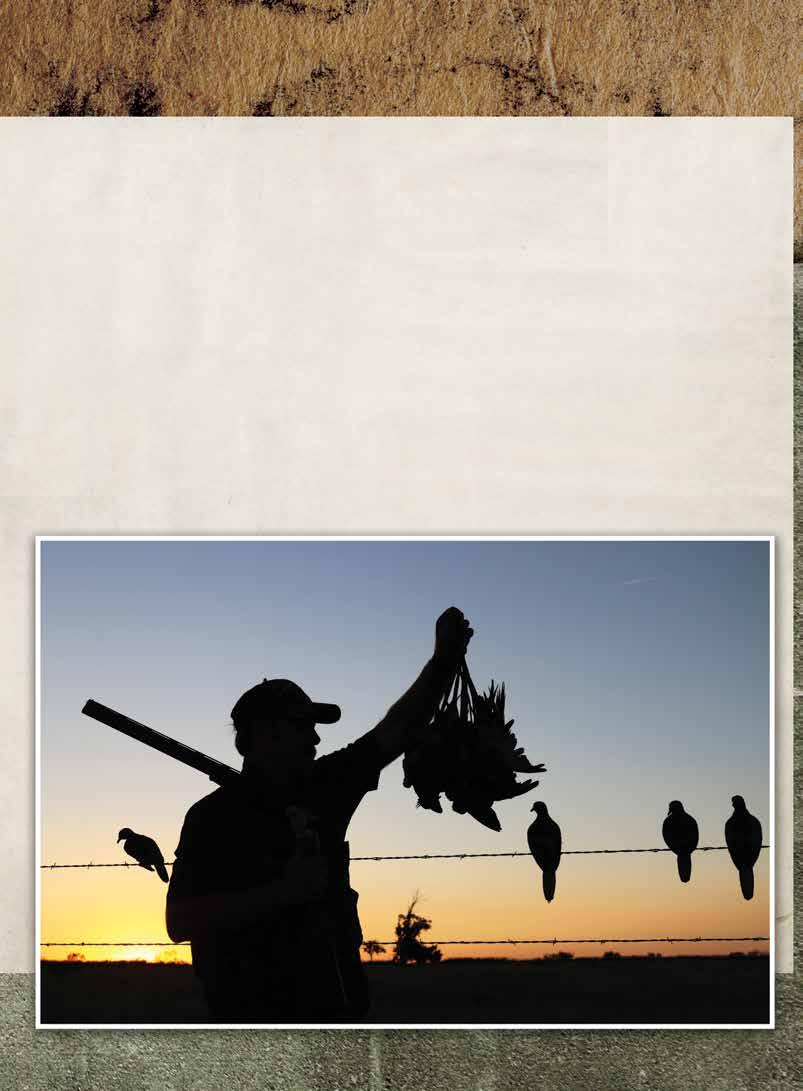
and new hunting dogs.
All types of people love dove hunting. From hairdressers to doctors, grandmas, plumbers and teenagers, I’ve shared the field with many different folks. Besides fast shooting over waterholes or sunflower fields, other details are just as fun.
Good conversations on the tailgate give friends a chance to catch up, and at sunset, a hot grill will be loaded with venison sausage, bacon-wrapped dove breasts and prime Angus strip steaks. Fresh salad, fried potatoes and hot rolls crowd large plates. For dessert, vanilla ice cream, homemade brownies with pecans and sliced watermelon. Why not feast to celebrate the start of hunting season?
Gear for this game is simple. Dress in camouflage, olive green or khaki clothes, wear a cap or wide-brimmed hat to fight the sun, and sit in the shade. Staying well-hidden means closer shots. Closer shots mean fewer wounded birds and more birds for the grill.
I prefer a Beretta over-under 20-gauge shotgun loaded with 2¾-inch shells with 7½ shot. Some folks prefer a 12-gauge. A camo vest or bird bag around your waist carries extra shells and dead birds. Chippewa knee-high snake boots ward off prickly cactus and fanged serpents. Other gear like ear plugs, sunglasses, sunblock, lip balm, a comfy chair, small cooler with
ice, water and sports drinks proves you’re well-prepared.
Last September, I spent three separate afternoons near a Panhandle windmill. On my third hunt of the season, my 16-yearold daughter, Emma, joined me after school. Our destination was an old favorite: Dove Windmill. That remote windmill and runoff pond has been a family honey hole for decades.
The name is well-deserved. One huge poplar tree, taller than the windmill, stands out of place on the flat prairie, like a lighthouse on a beach. Doves flock there late in the day to quench their thirst just as sure as the sun sets in the west.
The spinning wings of one Mojo dove decoy staked in the ground 20 yards in front of us was our bait. Five more clipon, plastic dove decoys sat on the barbed wire fence beside us. Emma and I sat ready, guns across our laps, hidden in the shade of a gnarly cedar tree. The sun was hot, the shade and a soft breeze were welcomed.
The birds came slow at first, one or two at a time divebombing the decoy. Emma folded the first three like a pro. I remember when she was younger, I paid her $1 for every bird she would retrieve for me. Now, I was picking up her birds, for free!
The later it got, the more birds swirled around the water. Our brows were hot and sweaty, the air temperature 94 degrees and our gun barrels were just as hot. Emma and I both shot until a

pile of empty shotgun shells laid around our chairs. A colorful sunset meant it was quitting time.
We were just a couple birds shy of our limits. I snapped a few pictures of Emma proudly holding a stringer with her birds. Seeing her smile, enjoying the same things I did when I was her age, made me happy.
Near the Texas-New Mexico state line, I’ve seen more blue quail, also called scaled quail, than anywhere else on Earth. Last fall, while cruising bumpy ranch roads in search of a big pronghorn buck in late September, we counted 18 different coveys in a three-hour afternoon hunt. Coveys ranged in size from 10 to 30 birds.
The terrain was mostly rolling prairie, some rocky bluffs and canyons and vegetation like cholla cactus, yuccas, mesquites and cedars. Pronghorn and mule deer do well in that section of the northwestern Panhandle. When rains are timely and abundant in the spring, like they were in the spring of 2024, quail populations can explode.
The same region is also home to bobwhite quail, but on the ranch I hunted, I would estimate 90% of the quail we encountered were blues. Blue quail are slightly larger in the hand than a bobwhite. Their “scaled” breast feathers, where they get their
name, and dust or bluish back and wing feathers blend well in the desert. A distinct cotton-like plume sits on the heads of both males and females.
While bobwhites are often polite and hold in thick cover for a pointing dog, blues have no such manners. They were made to run! The open landscape where they live mean fast feet are better for evading predators than holding tight in cover. Hunting blue quail often means long walks, long shots and every bird in the bag is hard-to-get.
I prefer the same over-under 20-gauge I use for dove hunting when in pursuit of blue quail. Because the birds are bigger and the shots sometimes longer, I prefer No. 6 shot. Comfortable, lace-up leather boots, leather gloves, a vest with pockets for shells and dead birds, and a blaze orange hat or jacket round out the gear list. Being physically fit is also advised.
A Panhandle quail hunt, whether it takes place in late October or early February, might be sunny and 70 degrees, or freezing cold with snow and ice blowing sideways. Pack clothing accordingly for both conditions, as the weather can change quickly north of Amarillo. My most recent walk through the blues country took place on a fine October day when the weather was friendly.
My friend, R.A. Brown, knew of a few likely spots to start our search. One was near a large cattle feeder where smart quail often congregated. Spilled, crumbled cow cake meant a free snack. Nearing the location, the ground appeared to be moving.
A large covey of 40 or more quail were running through the scattered mesquites and yuccas. We slammed truck doors, stuffed shells in shotguns and took up the chase. My old friend, Benton Rutledge and his eager son, Benton Rutledge III, had two birds down before I could get my camera ready. More chasing ensued, but only one more quail was bagged before we all loaded up and headed to fresh country. With thousands of acres to hunt, exploring new country is just as fun as killing birds.
The next spot, a low valley out in the middle of the prairie, produced a 20-bird covey. R.A. dropped a plump bird that held tight near a cholla. The Rutledge boys fired at the sky as more birds flushed, then they chased them up and over a rocky hill. In a stand of dried sunflower stalks, six birds flushed at long range.

Two of them dropped, hitting the dusty ground with a thud. This sort of run and gun continued until late morning. Finally, we all surrendered for lunch. Only 11 dead birds lined the tailgate between four shooters.
The daily limit is 15 birds per hunter, so we were well short of four limits, despite encountering lots of quail. After a long nap, the run and gun continued that afternoon until our legs felt like noodles. Fried quail on a plate were hard-earned that night, but delicious.
The diversity of wildlife is one of the reasons I’ve chosen the Panhandle as my home. From deer to pronghorns and turkeys to dove, there’s a little bit of everything for the hunter. Dove and quail are two of my favorites.



Al Brothers’ name is synonymous with white-tailed deer management, and he is among the short list of wildlife biologists given credit with pioneering deer management in Texas. He’s a native of Gonzales County, Texas where he was born Aug. 22, 1935, at his grandfather’s house two blocks south of the Gonzales County Courthouse. His father worked for a major oil company, and both parents were sometimes involved in overseas oil production jobs while Al, and his twin brother David, lived with relatives and were quite mischievous. On one cold winter day, Al and David built a fire in their uncle’s barn and burned it to the ground.
Al Brevard Brothers, Jr. grew up in Gonzales County and spent his formative years hunting the river bottoms for squirrels on the family home place east of Gonzales where Peach Creek flows into the Guadalupe River. He killed his first buck while squirrel hunting, a five-point yearling, in 1947 at the age of 12. “I was just as excited about killing that little buck with my .22 as any of the many bucks I’ve killed since,” Al says with a smile! He has been a lifelong deer hunter and supporter of game and fish laws since that first buck in the fall of ’47.
Upon graduating from high school, Al had no plans for a
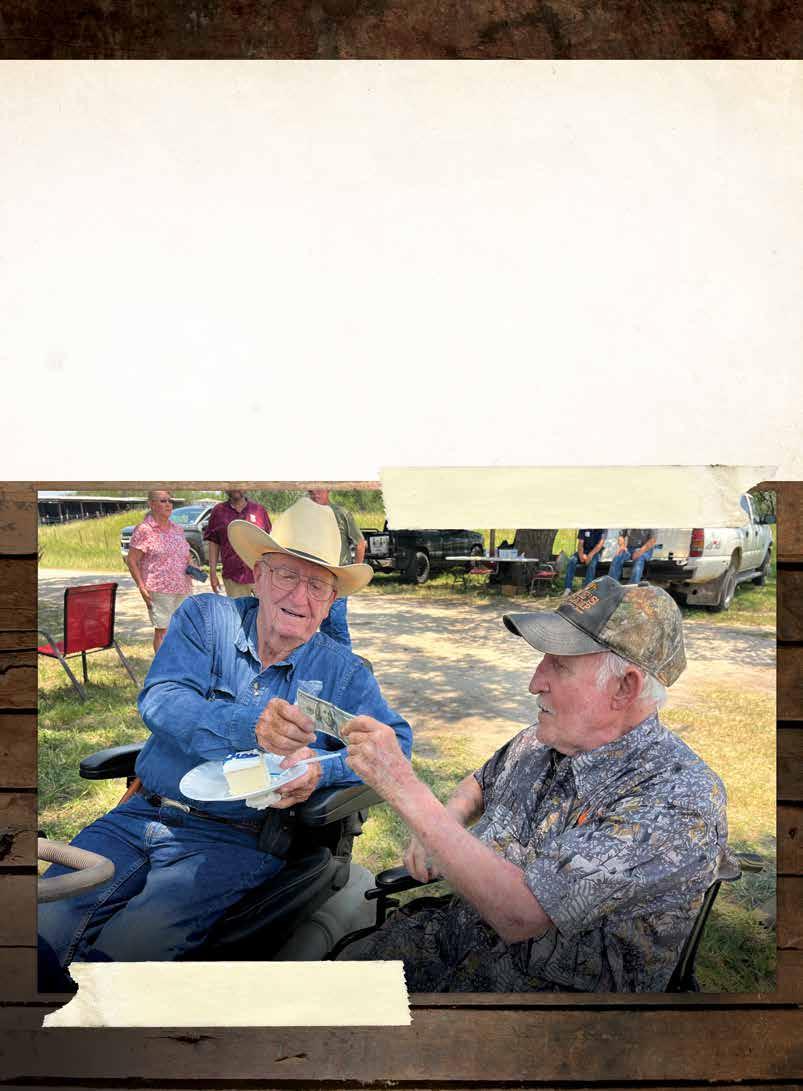
vocation. He did odd jobs and ranch work while David received a scholarship to Texas A&M University and worked part-time in the registrar’s office. Al would visit David on weekends, and on one occasion while waiting in the office for his brother to get off work, Al picked up a book on A&M’s coursework. “As I flipped through it, I saw there was a major for wildlife management, and that is what I wanted to do!” he said. “There weren’t many wildlife students back then, and A&M was really the only school at the time that offered a wildlife degree.” Al set his sights on Dr. Bill Davis and the Wildlife Department at Texas A&M.
But Al’s high school curriculum did not qualify him for college entrance. He had chosen some easy classes at Gonzales High, such as home economics, with the girls, basket weaving, and such. Some of the requirements to enter A&M were math, history, and English, which Al had skipped in high school. But Al was determined to follow his twin brother to college and went back to Gonzales High and took all the required courses to qualify him for Texas A&M.
Al graduated from there in 1960, and upon graduation, he served in the Army at Fort Sill, Oklahoma, as wildlife officer
for two years to fulfill his obligation to the Texas A&M Corps of Cadets. After the Army, he went to work in 1963 for the Texas Game & Fish Commission. Al worked over two years as a field wildlife biologist in Webb and Dimmit counties. During his tenure the G&F Commission would transition into the Texas Parks & Wildlife Department in September 1963.
In 1964, as a field biologist with TPWD, Al flew what was probably the first white-tailed deer helicopter survey in South Texas on a ranch near Laredo. Brothers left TPWD in 1966 to manage the H.B Zachry ranches located in Webb, Zapata, and Jim Hogg counties in South Texas, and a large ranch in Utah. He welcomed the opportunity to move to the private sector and manage cattle and wildlife on the Zachry properties in a rural lifestyle and raise his family in a ranching environment.
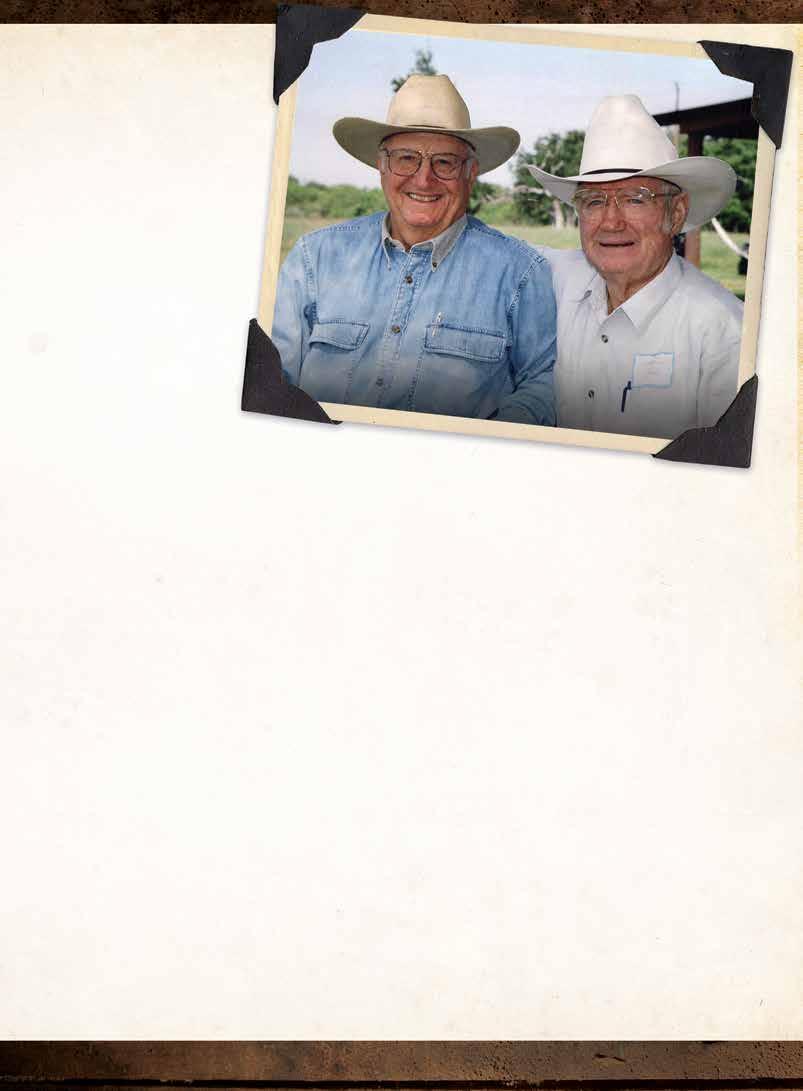
Brothers with Wayne Spahn. Brothers shared his whitetail expertise with readers of “Texas Hunters Hotline,” which became “The Journal of the Texas Trophy Hunters.”
Through Al’s supervision, the Zachry ranches participated in several deer and quail research projects with Texas A&I, and later, Caesar Kleberg Wildlife Research Institute at Texas A&M-Kingsville. At the time, these projects were cutting edge on wildlife research and basically new to wildlife management. Some of the deer research had important management implications that would help modernize deer management.
Al realized, however, a problem with getting the newfound deer information to the public. “The research we were conducting wasn’t being distributed to the people in a manner they could understand,” he explained. Recognizing this need, he coauthored with Murphy Ray, Jr., a book in 1975 titled “Producing Quality Whitetails,” which had a second edition in paperback. The book changed deer management philosophy and would later be the reference to sweeping changes in quality deer management in Texas.
In the years prior to 1975, Jerry Johnston attempted to start a hunting association called Texas Trophy Hunters, and a magazine called “Texas Hunters Hotline.” “I thought Jerry had a
good idea and agreed to write for the new publication,” Al said. He used occasional features, and his regular column, called “Ask Al,” to disseminate information relative to deer hunting and management. Al is presently TTHA Platinum Life Member No. 9.
In the fall of 1976, Al survived a helicopter accident that would confine him to a walker and wheelchair. The deer surveying crash slowed Al down, but didn’t stop him. He continued managing the Zachry ranches, writing, and hunting whitetail deer. Al completed a long career with the Zachry family and authored several popular and technical wildlife articles. In addition, he coauthored with Ray a revised 1998 edition of “Producing Quality Whitetails.” He also coauthored with Dave Richards in 2003 a book entitled “Observing and Evaluating Whitetails,” which is in its second edition.
Al retired to his family ranch near Berclair in Goliad County. In his many years as ranch manager, wildlife biologist, and hunter, he has thrown a wide loop in the hunting world from Texas to the Yukon Territory. So, when asked which hunt stands out in his memory as the fondest, he smiles, and answers, “All of them! I’ve never been on a hunt that I didn’t like and enjoy!”
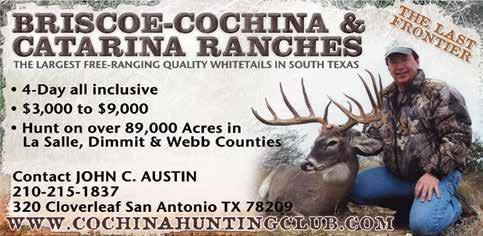
Al will turn 90 in August 2025 and looks back at a career with whitetails that began a revolution in Texas that is now nationwide. To be considered a pioneer of deer management is an accolade he humbly dismisses, but insists that he just enjoys all things related to wildlife and hunting. Al is warmly referred to as the “Father of Deer Management,” and rightly so.
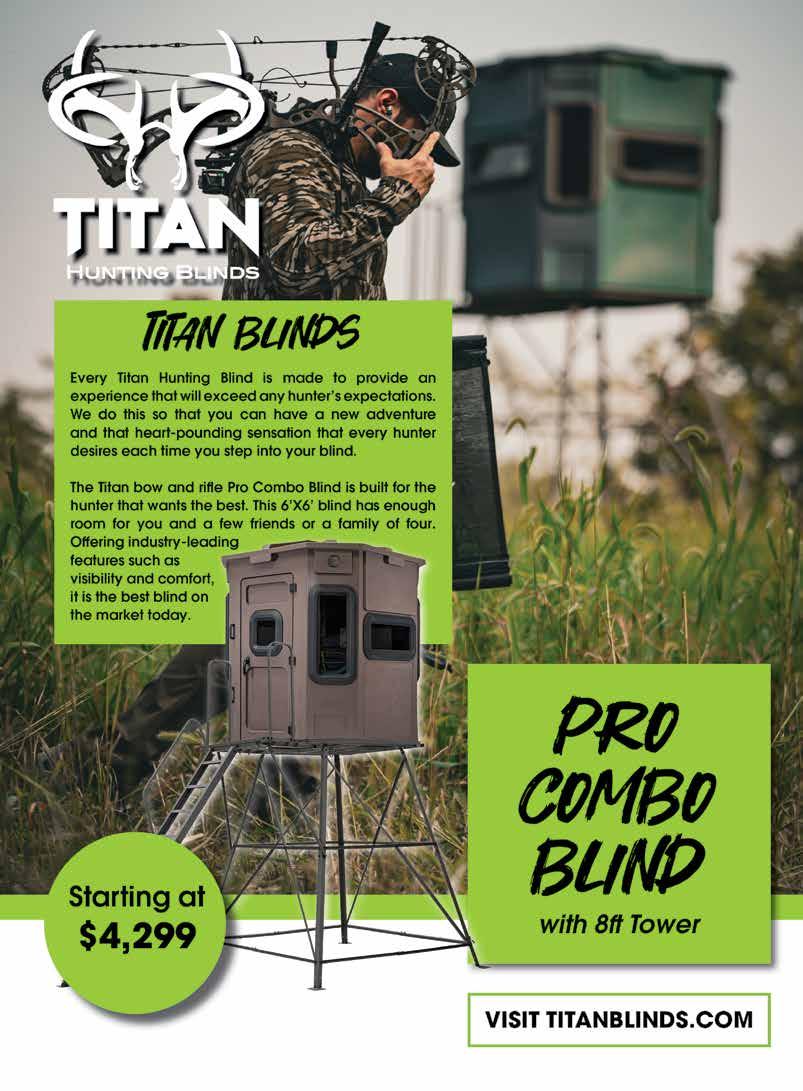


The author found his aoudad hunt to be most challenging.
“Up on that hill,” said my guide Kris, slamming the brakes on the Jeep. After riding for several hours with a few brief encounters, I was relieved to see a large herd of tan aoudad running up the hillside. With his eyes pressed into his binoculars, he advised me to quickly slide my gun barrel out the front opening of the buggy’s windshield. Within a hazy wave of the scope’s reticle, a bramble of sweeping horns slowly came into focus as I twisted the dial for a closer look.
Heavy-based horns and tight curves, some wider, some longer than others, made choosing a trophy from this group of 30 or more aoudad a challenge. They were casually browsing at a much lower elevation until they spotted our Jeep dusting along the ranch road, causing them to bolt for higher ground. Watching in amazement as they ascended the steep cliff face as if it were a staircase, it became clear that if they decided to top the hill, they would more than likely be gone.
However, after several minutes, they eventually began to settle down along a thicket of brush topped with a single yucca plant protruding from its center near the top of the hill. Perhaps the higher elevation gave them comfort as one by one they began to lie down leaving only the tops of their horns and a few patches of brown fur and chaps in the opening within the brush. Picking the largest trophy to shoot became the next

The author took his guide’s advice about being patient. Doing so meant he’d be rewarded.
challenge, as a large mature aoudad can appear strikingly like one another to the untrained eye. Luckily my guide for this hunt was Kris Helms, manager of the Ox Ranch, who had an exceptional eye for spotting trophy aoudad.
“The older rams everyone likes are generally broomed off at the tips of their horns as they age which can lose a little length, but you still get that old mature look,” he explained. “Whereas there are some studs in there that may be a few years younger that are longer in length. It just depends on what you like. On average aoudad generally take about eight years to reach maturity before they hit that magical 30-inch mark everyone wants. The best one for length though is the one standing to the left of that yucca plant where you can just see the top of its horns.”
After a few minutes of glassing the herd, several of the larger rams began to stand. One being the long, heavy-horned ram to the left of the yucca Kris had spotted. “From what I’ve seen the more dominant rams are either the leaders of the group who stay out in front when they are moving, or they will be the last one in the back,” Kris said. With the turret set to two, the 200-plus-yard shot would be vertically uphill.
“He’s starting to move to the left a little more, not sure if you can see him through your scope yet,” Kris whispered, as all the aoudad were beginning to stand to follow the lead of the ram we were after. “Patience, grasshoppa,” Kris quipped, detect-
ing my breathing was beginning to pick up as the full sight of these massive rams was increasing my heart rate. Now with only two smaller aoudad blocking my view of the big ram, I clicked off the safety and continued holding the crosshairs on where his shoulder should appear should the rams move and provide an opening.
After a few more seconds, our ram stepped forward past the other two and turned broadside, offering me a momentary shot. “Take him if you’re good,” Kris said, trading out his binoculars for a video camera. Slowly I squeezed the trigger while exhaling. The suppressed 7mm PRC whispered a split second before the wallop of the ram’s shoulder left a puff of dust leaving no doubt it was a good hit. “You smoked him!” Kris said as the herd exploded from the brush and took off over the top of the hill.
After a short hike uphill, we began to search for the aoudad although no blood could be found anywhere. Several minutes

later Kris discovered the ram expired within a patch of prickly pear. “These things tend to suck bullets up,” he remarked, noting how this wasn’t the first time an aoudad ram had run with no trace of blood. Peculiarly the aoudad had no exit wound and if you didn’t know any better it appeared as if it hadn’t been shot at all with only a tiny entrance hole detectable by an 1⁄8 -inch burr under its shoulder.
“That’s a rock donkey for sure,” Kris said, gripping the base of its horns that were almost touching with only a small indication that hair used to grow in between them. The gorgeous ram was huge and rugged, just as I had imagined it would be like putting my hands on the ram for the first time. Its heavy horns would eventually tape out at 13 inches in circumference at the base and just under 32 inches in length once we arrived back at the skinning facility. The mountainous terrain of the ranch delivered exactly what I had always wanted to hunt in the hills of Texas: an old trophy aoudad ram.


By Gary Roberson
Whether it’s coyotes or ‘cats, predators can still be lured in to a stand with good calling and patience.
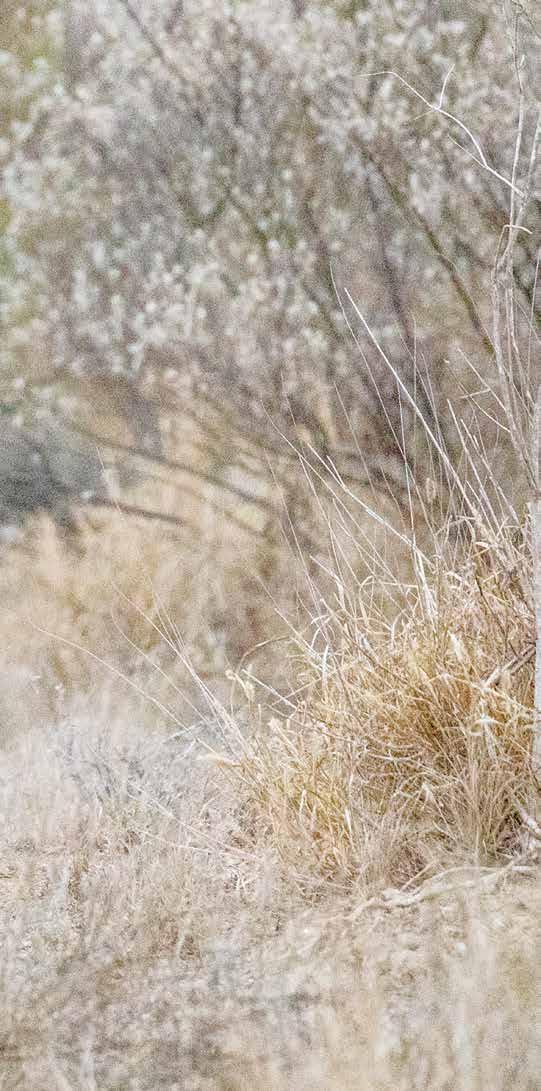
When I started calling predators back in the early ’60s, it didn’t take a lot of money to get started, and that was a good thing. I didn’t have any. My original investment was a predator call I ordered from the Herter’s catalog for $3. I had a Stevens single shot .22 I purchased at Loggins and Lilly’s in Devine for $30. I was outfitted for predator calling.
If I wanted to do a little night hunting, we would use a Rayovac 6-volt light with red cellophane covering the lens, held in place by a rubber band. I hunted with my brother Russell and did the calling— it was my call—and he did the shooting. Since he was doing the shooting, I generally controlled the light.
We didn’t call from a high rack, but we would park and walk into an area with open ground around us and a tree we could sit against. Areas around stock tanks and hardwood creek bottoms with raised canopy were ideal.
One night we walked into an opening just north of a small stock tank surrounded by dense white brush and sat down with our backs to a big live oak tree. I was calling and facing west, while Russell faced towards the east. That night both of us had flashlights, and mine was the Rayovac, powered by a big square lantern battery. I think Russell had a smaller two-cell light.
Normally, as a rule, the person running the light would keep the light moving unless he saw eyes. When he spotted eyes, he would hold the light on the critter to keep it somewhat blinded.

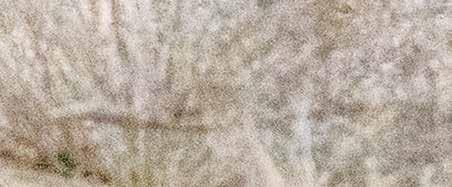
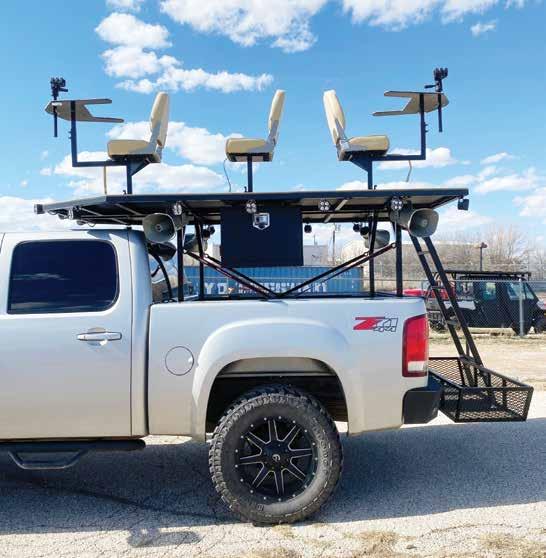
When the light stopped moving, the shooter would know a critter was approaching.
This system worked very well for us when using one light, as both hunters’ attention focused on it. A couple of minutes after I began squawking on the Herter’s call, I had eyes to the south on the east bank of the tank. A big ’coon was coming fast. I kept my light on him as he advanced, knowing Russell would turn and take a shot. When the big boar ’coon got within about 10 steps, I readied for a defensive maneuver in the event Russell didn’t shoot.
I turned on my butt to face the attacker head on. I kicked straight out with both feet to turn the old ’coon loping straight towards me, knocking his legs out from under him. Unfortunately, his speed carried him over my feet and into my lap where the Rayovac lantern suddenly morphed into a sledgehammer. I whacked him a couple of times as he tried regaining his footing, and sent him running in the direction from which he came. No shots were fired, and as far as I know, no blood was shed. That was then.
Today, predator hunting goes the way of most other hunting activities. While you can still play the game with an inexpensive hand call, it seems everyone wants all the new equipment. While I prefer to call in the daytime, it seems most of the newer generation hunters prefer the night, which can trigger the desire for an almost endless supply of specialized, expensive gear.
Most serious Texas predator hunters own or have access to a pickup or UTV with a custom-built high rack. These hunting
Many Texas predator hunters like to use a custom-built high rack, which can run from $1,000 to as much as $15,000 or more. The shooting benches swivel 360 degrees.
racks run in price from $1,000 to as much as $15,000 or more. Most of the shooting platforms are large enough to support two shooting benches that swivel 360 degrees. These shooting benches are necessary to accurately make shots up to 300 yards, thanks to improvements in night vision.
Most serious night hunters have graduated from red spotlights to thermal imaging. Pricing on night vision is like the high racks. They start at around $1,000 and can go up about as much as you’re willing to spend. At the present time, I would estimate the average cost of night vision used by the average predator hunter is $3,000 to $5,000.
Now that we have the platform, shooting benches, and the ability to see and shoot several hundred yards, we need a rifle capable of delivering a fast-moving bullet with extreme accuracy. To many predator hunters, this means a custom-made varmint rifle and scope with a price tag of well over $2,000.
Most predator hunters shoot rifles with suppressors. This not only saves his ears and his buddy’s ears, but improves chances of getting a second or third response to a single stand. Suppressors are not a big expense, most likely less than $1,000. Now having all this nice, expensive equipment should increase our proficiency. But if we don’t get the predators into shooting range, all is for naught.
When we first brought the FREQ Ultrasonic Game Call to market, we met with some resistance to the $1,999 price tag. To quote my good friend, Jeremy Harrison, “It doesn’t matter how fancy your hunting rig is, or how much you spent on your rifle and night vision. If you can’t get the predators to come, you wasted a lot of money.”
I’ll keep calling predating critters as long as the good Lord will allow. As a daytime hunter, I can continue to take advantage of a year-round hunting opportunity with no bag limits. I will shoot my Ruger M-77 mounted with a Trijicon Accupoint 3-9X40 and have my bipods to help the old man “steady up.”
The only thing I will spend extra money on is my call, which is the key to predator hunting. Knowing how to set up properly and produce the sound quality that brings in the predators will always be the greatest factors of calling success. Successful predator hunting can still be an inexpensive sport.
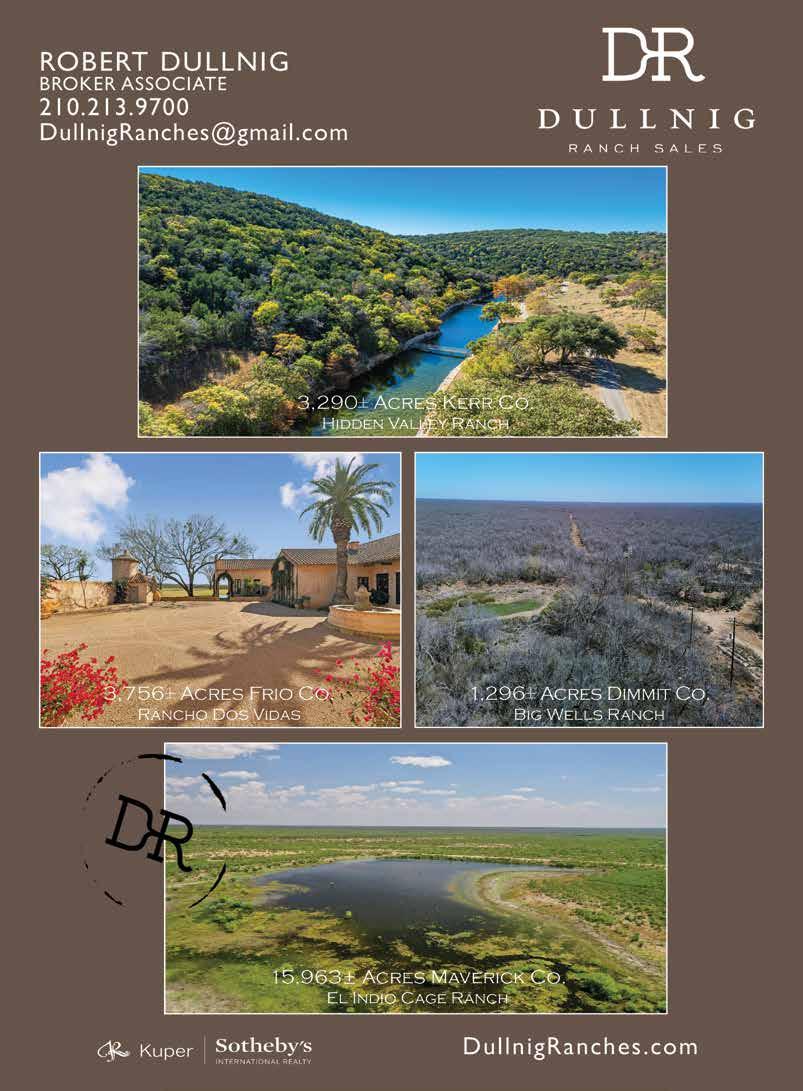
In 2021, Rodney Marbach took this outstanding mule deer buck grossing 186 7 ⁄ 8 B&C, which holds the MWMA record.
The Matador Wildlife Management Area encompasses 28,183 acres in the western edge of Cottle County. Located in the southeast corner of the Panhandle known as the Rolling Plains, its name comes from being a part of the original historic Matador Ranch, formed in 1879.
At one time this working cattle empire covered 1.5 million acres of former Apache, Comanche, and buffalo territory. In 1959, Texas Parks and Wildlife purchased and created the Matador WMA for wildlife research and management as well as for public use.
Chip Ruthven is TPWD’s Project Leader for Panhandle Wildlife Management Areas. He’s been at Matador 21 years, situated approximately 125 miles north of Abilene. Originally beginning his TPWD career in South Texas, Ruthven has adjusted nicely to the vast open areas of North Texas.
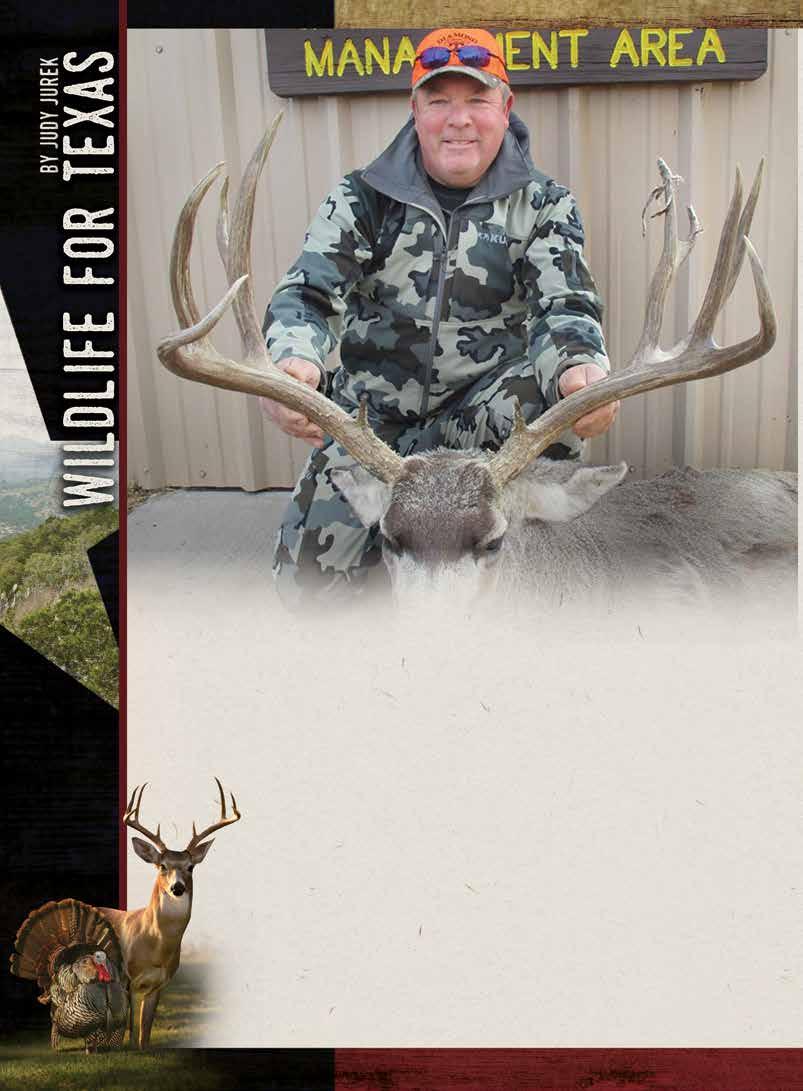
“The Rolling Plains is a great part of the state with wide views,” he said. Asked about what makes this WMA different from others, Ruthven replied, “One of the unique aspects of Matador versus others is we are the only one to have both mule deer and whitetails entered into the Texas Big Game Awards.”
Diverse terrain features mesquites on upland areas, shinnery oak across rangelands, and gravel hills dotted with a mix of mesquite and red berry juniper (cedar). Within its boundaries several creeks flow into the South Pease (also called Tongue River) and Middle Pease rivers, thus bottomlands and drainage areas offer thick grasses with towering cottonwoods, great for wild turkeys and other species.
Like much of Texas, everything depends on rainfall. The Matador’s average annual rainfall is 22 inches, most of which traditionally occurs in May and June. This typically sets up the WMA for a good late spring into summer, a time for the ground to renew itself from winter and new young of countless species are born or hatched.
Ruthven said November 2024 was somewhat unusual, as it was very wet. However, it was good for hunters with 3,200 bobwhite quail harvested. “In 2016 we had over 10,000 birds killed, one of our best years ever. The Matador was purchased primarily for its quail hunting.”
The wildlife calling Matador WMA home are as varied as its typography. Mule deer, whitetails, feral hogs, coyotes and bobcats are the larger mammals with javelina and an occasional mountain lion. Ruthven said, “Javelina have increased as we now have four to five herds.”
A healthy population of Rio Grande turkeys enjoy roosting the giant cottonwoods. Mourning dove, bobwhite and scaled (blue) quail make the Matador a must hunt area for wing shooting enthusiasts.
Ground crawlers include ornate box turtles, Texas horned lizard, western diamondback and western massasauga rattlesnakes. Matador WMA is on many birdwatchers’ lists for roadrunners, Mississippi kites, vermilion and scissortailed flycatchers, pyrrhuloxia, Bullock’s orioles, and painted buntings along with too many other species to name.
Over the years, the National Wild Turkey Federation (NWTF) has assisted with various projects on the Matador. Since 2017 the Middle Pease River Riparian Habitat Enhancement has conserved or enhanced nearly 600 acres of riparian and upland habitat. A combination of lush grasses, tall trees, and the rivers create excellent nesting, foraging and roosting for wild turkeys.
With NWTF’s help, TPWD has been thinning invasive tree and shrub species. Mechanical and aerial herbicide applications with prescribed burns are making strides to improve habitat while managing undesirables.
“Many projects have been funded by NWTF,” Ruthven said. “Grubbing and spraying juniper and mesquite has helped control the invasiveness of these trees. The Matador suffered a wildfire covering 12,000 acres in 2011 but has not experienced one in recent years. The Smokehouse Creek fire in early 2024 hit the Gene Howe WMA but they’re recovering.”
“The Mule Deer Foundation and Quail Forever also provide assistance to us. Money has been donated for water improvements including solar wells and overflow management.” Ruthven added, “Rotational cattle grazing is another tool MWMA uses.”
Public outreach programs such as workshops and field days for landowners, hunters, and outdoor enthusiasts are put on regularly. Research projects are also always in the works. Ornate box turtles, similar to tortoises, have been studied as they appear to like open grasslands versus other areas.
Diamondback rattlesnakes with internal telemetry devices installed have been tracked to learn more about their habits and ranges. Interestingly, the reptiles Rolling Plains home range may cover 200-300 acres while the Chaparral WMA’s South Texas brush country home range is only 25-30 acres. Rattlers also form communal dens with pack rats, hibernating for 1-2 months depending on weather.
Discussing the history of wildlife, Ruthven stated hundreds of years ago this area was buffalo, pronghorn antelope, and maybe mule deer country. Deer were scarce in the 1960s and ’70s, but whitetails drifted in from the east as habitats
improved. Mule deer wandered to MWMA from the north and western Caprock region.
Matador WMA has the unique distinction of being the only WMA within TPWD’s system to register both mule deer and whitetail in the TBGA program. Non-typical mule deer bucks in the 180s gross B&C have been killed. The better non-typical whitetails also measure in the mid-180s with typical bucks reaching the 170s B&C. Of course, being selected to hunt this great WMA is the ultimate challenge.
“The Matador is a highly popular public hunting venue,” Ruthven said. “We almost always have bucks entered in the TBGA. This past season we had several whitetails exceed the minimum score requirement. And we’re known for our turkey and quail hunting, too.”
In addition to public hunting, visitors can enjoy hiking, horseback riding, bicycling, fishing, camping, photography, and the aforementioned bird watching. All visitors must possess an Annual Public Hunting Permit (AHP) or a Limited Use Permit (LUP), available from any license vendor. Tours can be arranged although not allowed during public hunts.
Due to the changes in terrain, some areas of the Matador require four-wheel drive vehicles. Signs are posted advising such. Visitors are asked not to disturb traps, flags, markings, etc., as these may indicate research areas and disruption could affect findings and results.
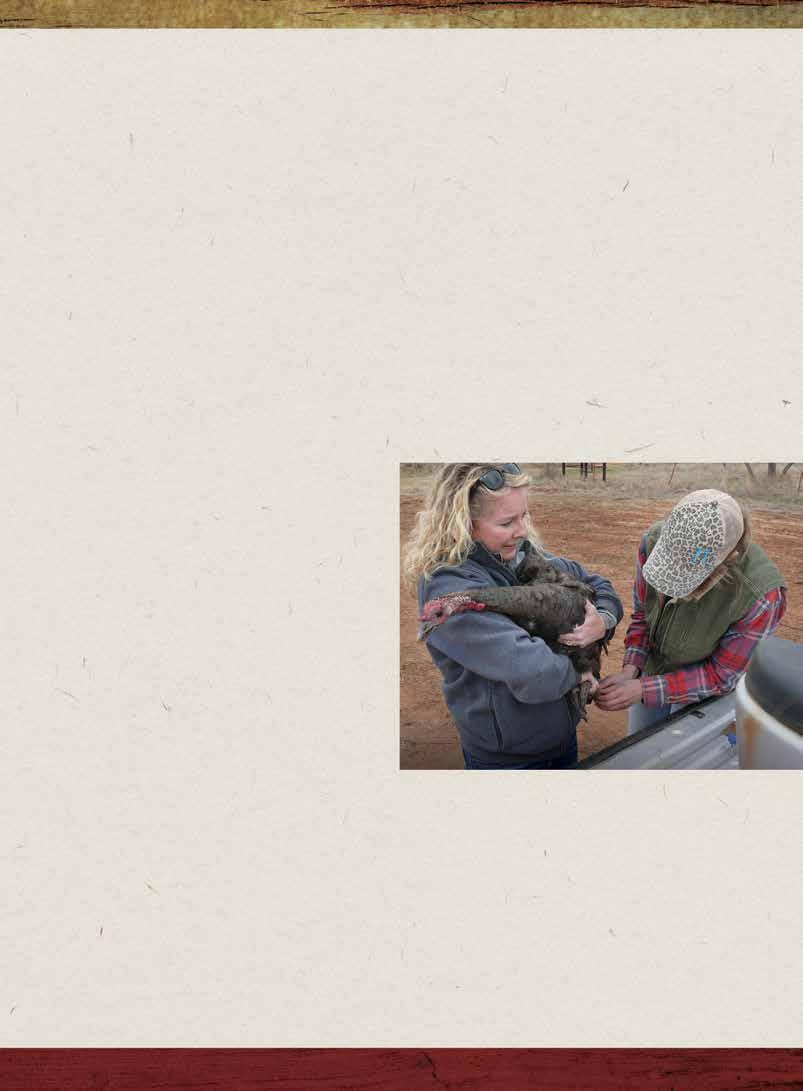
Visitors are also encouraged to bring plenty of drinking water. Camping is primitive; electrical hookups and showers are not available. Grass burrs are plentiful so wear proper footwear. Open fires are prohibited due to often dry conditions. Campers should bring camp stoves.
Dogs must have a collar and tag with the owner’s contact info in case a dog is lost—it happens. Canines may also encounter rattlesnakes, stickers, and other possible problems so please keep that in mind if bringing your four-legged best friend along.
The Matador is a demonstration site used for education, instruction, and research. Landowner workshops and field days take place with students, teachers, scientists, and those interested in wildlife management participating in many events presented each year. Make plans to visit.

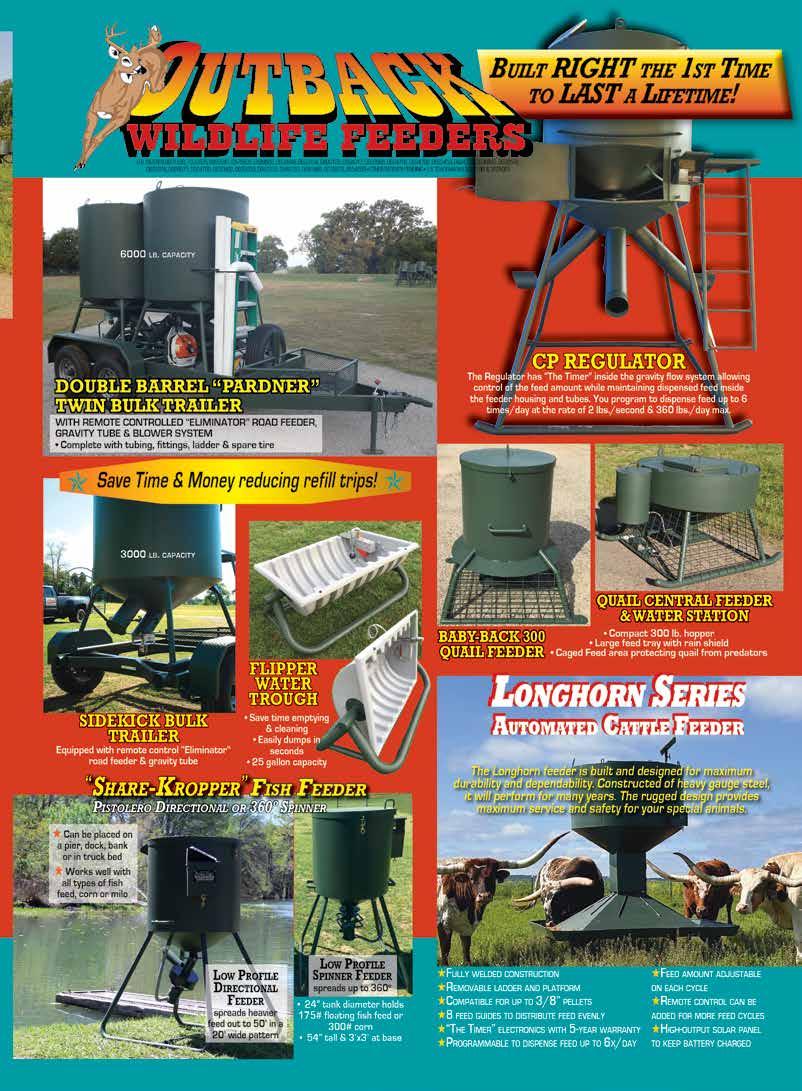
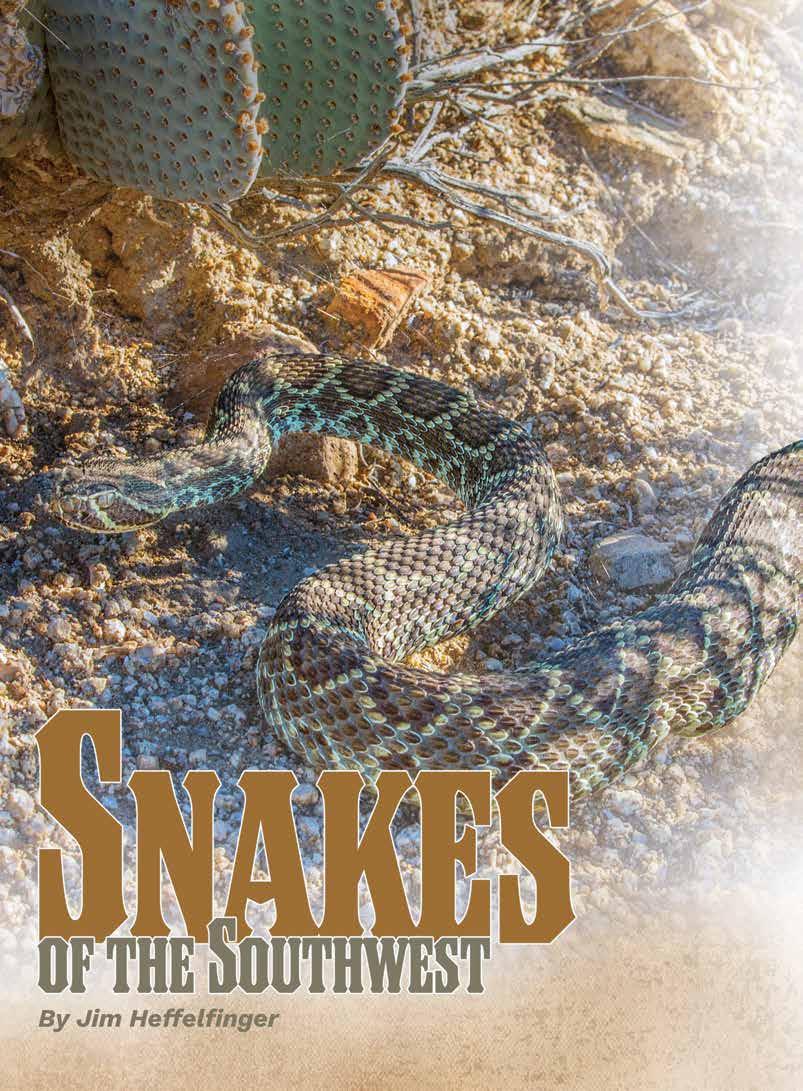
The Mojave rattlesnake packs a neurotoxic venom that affects the nervous system.
DO
• remain calm.
• call 911 and get to an emergency room immediately.
• remove any jewelry that might become stuck when skin swells.
• keep the bitten part above the level of the heart.
• stay still and don’t move bitten part.
Humans have always had a love-hate fascination with snakes. Our opinions and views about snakes have been mostly bad, maybe because we got off on the wrong foot in the Garden of Eden. Some of this bad rap is earned because some snakes out there can kill us—some faster than others.
I’ve always had respect for snakes, and an overall fondness of them. I’ve had pet ball pythons, rosy boas, hog nose, bullsnakes, and garter snakes. Their calmness and muscular strength always intrigued me. However, the lack of eyelashes and shoulders makes it impossible for some people to warm up to these
• apply ice to the bite area.
• cut anything.
• use a constriction band or tourniquet.
• consume alcohol or drugs.
• use gimmicky electric shock devices.

cold-blooded critters.
My first experience with rattlesnakes close-up began when I started graduate school in South Texas and attended the Freer rattlesnake round up and San Patricio County rattlesnake races. While working and researching on South Texas ranches, I rarely left the truck without snake leggings on my shins because I spent a lot of time walking through thick vegetation I could not see into. During some months of the year, I averaged seeing one a day, and blindly walking through Sacahuista grass and brush seemed like too much “rattler roulette” to me.
Snakes are iconic creatures of the American Southwest, and there’s good reason for that. Arizona, New Mexico, and Texas are the epicenter of reptiles in the U.S. because of the incredible diversity of venomous and non-venomous snakes. Florida is the only state that has more reptiles than the Southwest, a distinction aided by the high number of imported exotics that now thrive in the wild. Snakes in the Southwest are something to celebrate because they put the bite on rodent populations, but there are a few species that can ruin our day.
Snakes are generally not poisonous. Poisonous is when you eat something and it poisons you. Venomous is when something bites or stabs you to inject venom. After nearly 40 years of working in all three states of the Southwest, I have plenty of tales of close calls with the venomous kind and have yet to have my day ruined.
In 2016, a study reported that 11,138 patients visited emergency rooms in the U.S. with a venomous snakebite and 65% were male. Of all these bites, less than 10 resulted in death. The researchers of this study highlighted what they called the “T’s of snakebite risk”: testosterone, teasing, touching, trucks, tattoos, Texas, tequila, and teenagers. It’s uncanny how many of those “T’s” are associated with snakebite cases. About half of all rattlesnake bites are “dry,” which means they do not inject venom, they are just counting coup to let you know they could have. Texas leads the nation in the number of venomous snakebites per year with 1,408 reported in 2025, according to one source. Arizona with 102 bites and New Mexico with 71 bites, don’t even come close. This is another thing Texas is best at, owing to the size of the state, sheer number of rattlers, and number of people walking around in their habitat. Arizona has the most different kinds of rattlesnakes, 13, but Texas has the most.
Most rattlesnakes have venom that’s hemotoxic, which breaks down blood vessels, but some, like the Mojave rattlesnake, also have a neurotoxic component that acts on the central nervous system. The diverse southwestern collection of rattlesnakes have equally diverse southwestern names like sidewinders, tiger, western, black-tailed, western diamondback, Hopi, Grand Canyon, Arizona black, and many more. Any snake that rattles at my feet is in danger of dying, but several species of protected rattlesnakes exist and cannot be killed, so you need to know how to identify your rattlesnakes.
Translocating rattlesnakes out of the urban area is more effective if they’re moved more than a mile from their capture site.
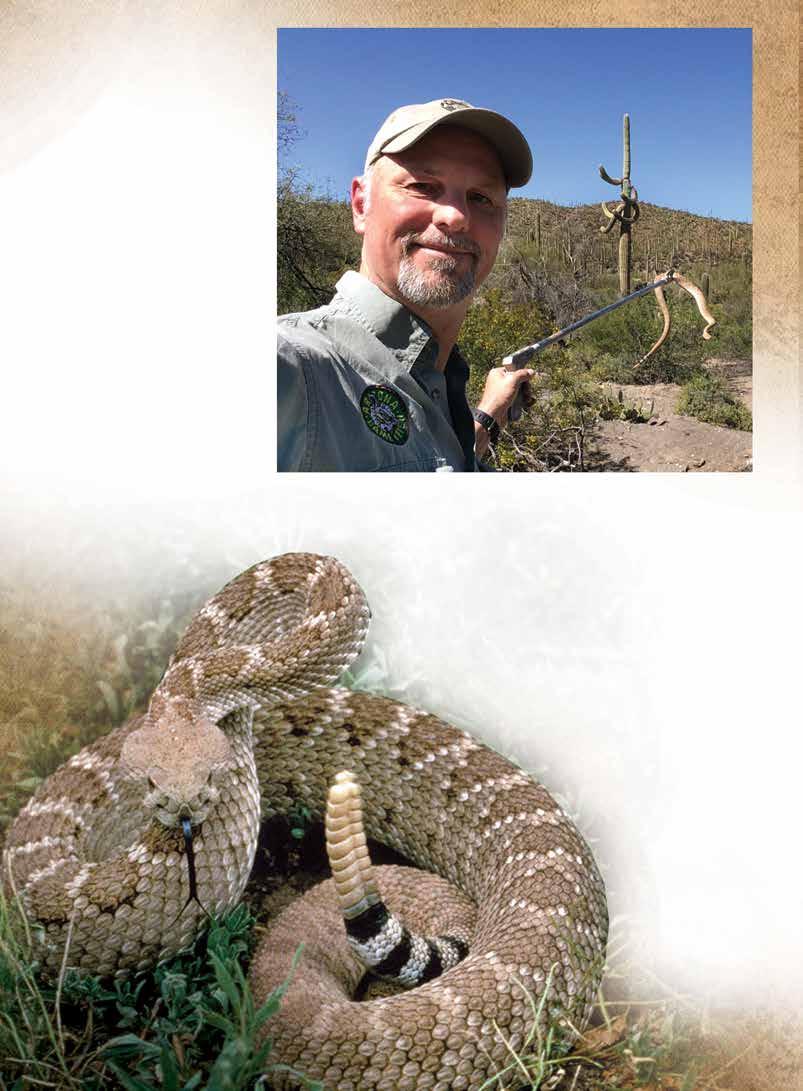
The Southwest is home to coral snakes as well, which are venomous, but not rattlers. Coral snakes have neurotoxic venom, but such tiny teeth that you almost have to be handling them to get any venom into your bloodstream. Several other species have small, fixed rear fangs that do not inject venom, but leak it into the bite as they hold on. These rear-fanged venomous snakes have such a mild toxin it’s just strong enough for lizards, but not enough to be a problem for humans.
The non-venomous snakes don’t get a lot of attention because we don’t have to worry about them killing us. The Southwest has an equally interesting selection of non-venomous snakes. There are tiny worm-like threadsnakes, groundsnakes, sandsnakes, kingsnake, milksnake, glossysnake, and even a rosy boa. I know some people who are crazy about snakes, and I get it.
Bullsnakes are often mistaken for rattlesnakes and get killed.
It doesn’t help that they vibrate their tails when agitated, making them look and sound like their venomous cousins. They are polite snakes and good mousers, so learn how to tell a rattlesnake from the harmless and helpful ones.
Most snakes are harmless, but like attorneys, it only takes a couple bad ones to give all of them a bad rap. The dangerous ones killed us through our evolution and that programed our DNA to have a natural fear of them. Almost all snakes are not aggressive unless threatened. Staying four feet away from any snake in the Southwest will keep you safe and don’t attempt to kill one unless you have to.
Remember, 50% of bites happen because someone is trying to kill the snake or mess with it. Snakes are most active from March to October, and more so during spring after a period of hibernation or inactivity. That’s useful information if you’re out looking for cool snakes or want to know when to stay vigilant when walking through thick cover. Enjoy snakes in their habitat as you would any other species of wildlife.
If my sister turned the page of a magazine and found a picture of a snake, she would throw the magazine across the room. Not everyone likes, or even respects, snakes. If you’re one who
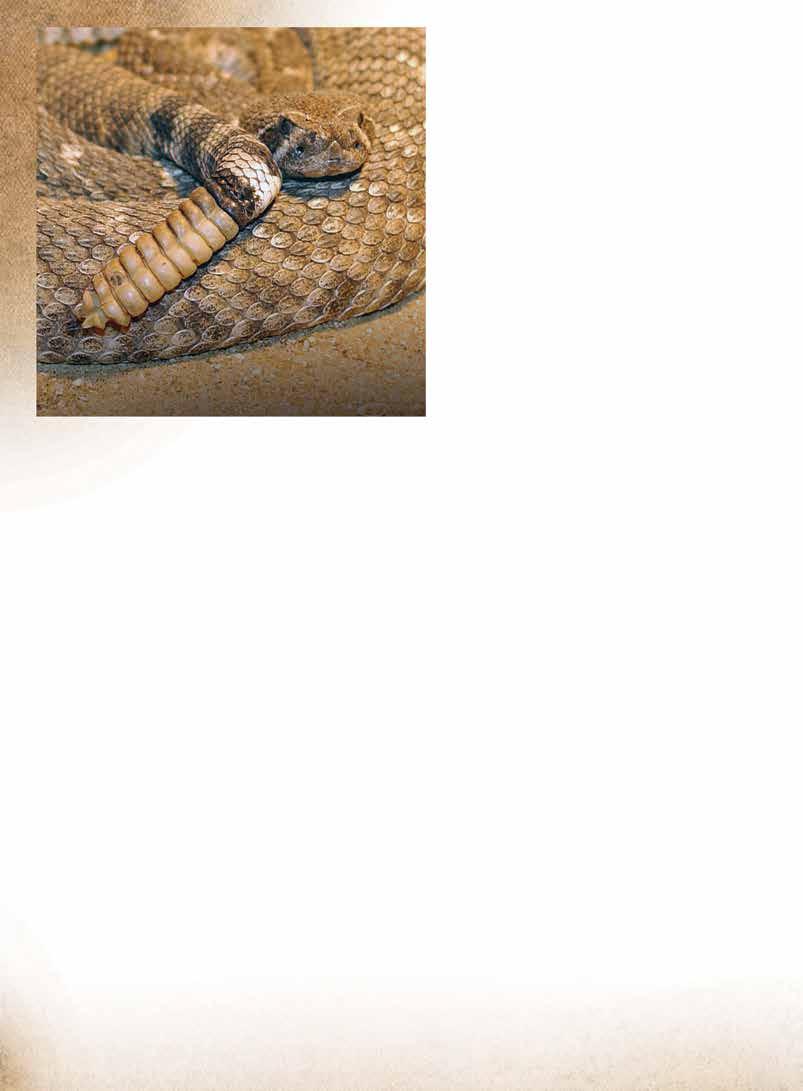
does not enjoy seeing snakes, there are ways you can avoid them. An old coyote trapper gave me sage advice when I started working in the brush country. He simply said, “Don’t put your hands or feet anywhere you can’t see.” I thought of that advice often and it probably saved me from at least one bite.
Fencing backyards with a 4-foot buried fence with snug gates is important when you have children and dogs in the heart of rattlesnake country. Remove trash, brush, and boards and control rodents so they don’t have food and cover on your property. In the Southwest, water attracts small birds and mammals which of course is what snakes are looking for. There are chemical snake repellants available, but none have been proven to work when tested by scientists. Moving snakes more than a mile can be effective to keep them from homing back again, but it will reduce their survival.
I wouldn’t want nature to be completely sanitized of dangers, and that includes rattlesnakes. Carrying a little nervousness with us is what makes our outdoor activities just a little more exciting. Their secretive nature means we don’t get to see most of the beautiful diversity of reptiles, but that doesn’t mean we can’t enjoy the fact they are there waiting for us to discover them.
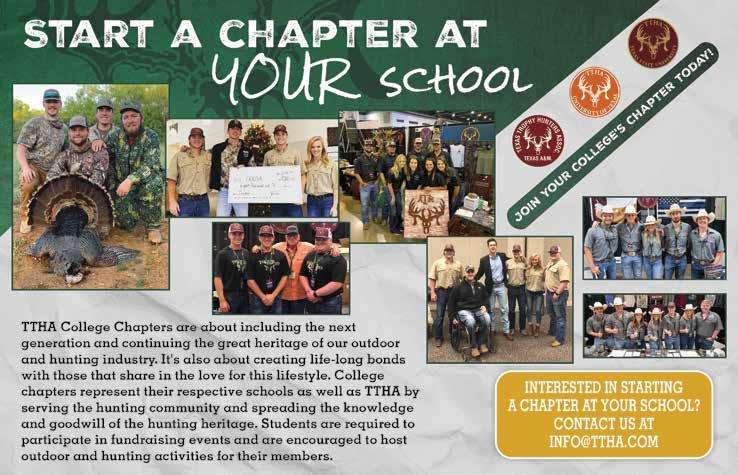
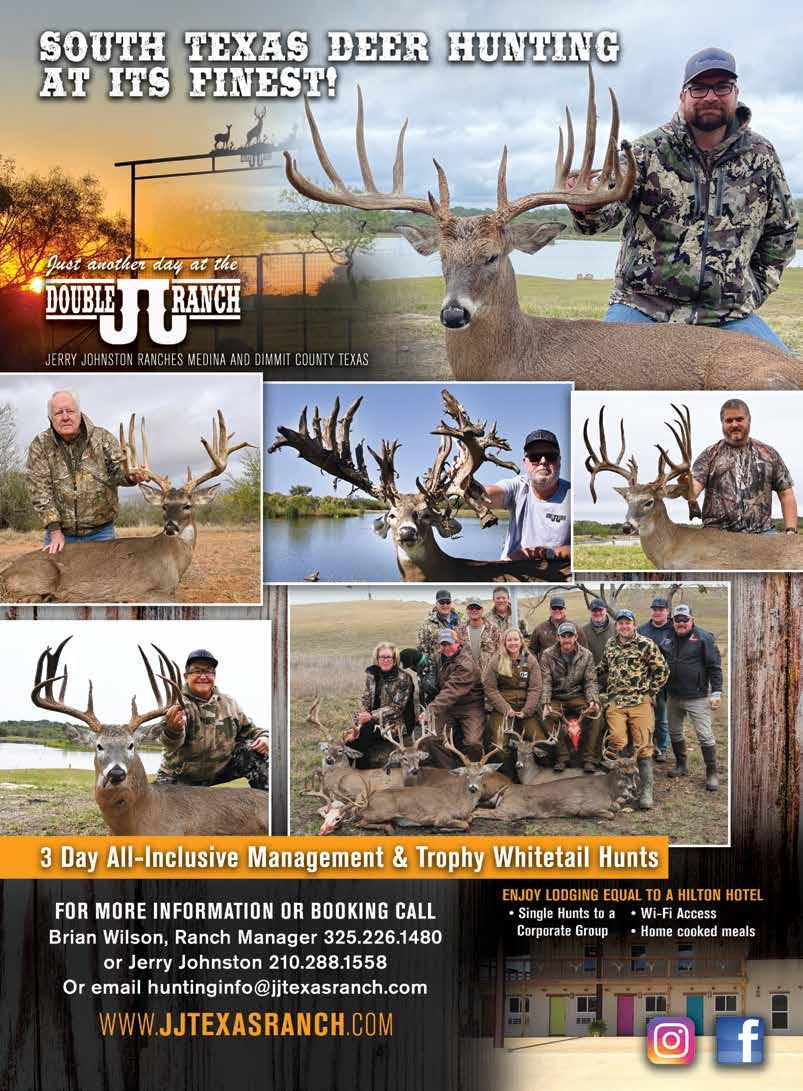
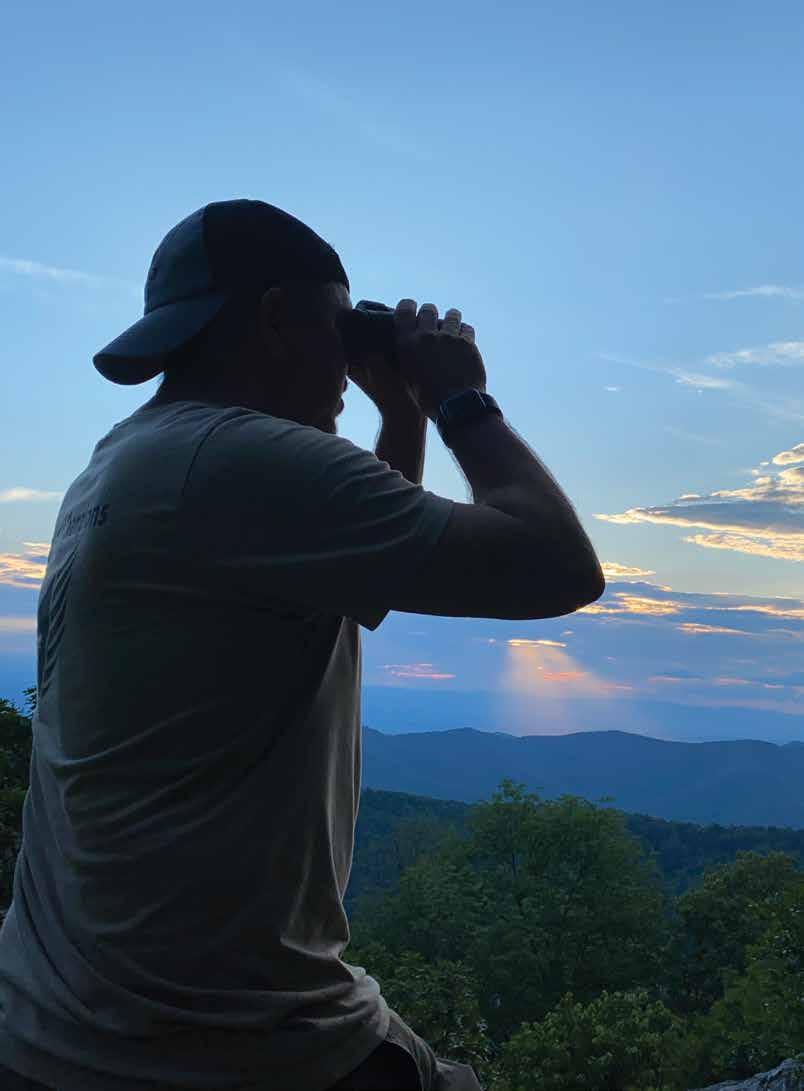
BY JOHN GOODSPEED
Binoculars and spotting scopes are safer and easier to use to survey game than glassing through a riflescope, and manufacturers are making them even more so by taking advantage of the latest technologies to continue to incorporate improvements.
The latest models feature higher light transmission and are more compact, lighter and more powerful — including one 15-power binocular. Some binoculars include built-in rangefinders for more precise shots.
A couple throw in a smartphone adapter for sharing photos and videos.
Phase-coated roof prisms deliver truer colors. BaK-4 prisms also are becoming more popular. BaK-4 prisms, which use a type of high-density glass containing barium krownate, are touted as the best type of porro prism because they are made with better
glass to produce clearer images.
Multi-coatings on lenses can increase light transmission and maximize clarity, contrast and color fidelity while reducing glare.
Most models feature a gas such as nitrogen to resist internal fogging, are waterproof and include a lifetime warranty.
Two manufacturers, Maven Outdoor Equipment and TRACT Optics, will release new models in 2025, but could not provide details by this article’s deadline.
Abbreviations in the article include ED glass, or an extra-lowdispersion lens, that reduces chromatic aberration and enhances color, resolution, sharpness and contrast, especially in low-light conditions; HD, or high definition, meaning special coatings or lenses; and FOV stands for field of view at 1,000 yards.
Prices are manufacturers’ suggested retail prices.
www.basspro.com; www.cabelas.com
Featuring ED glass that boasts 86 percent light transmission, this new model is built on a lightweight magnesium-alloy
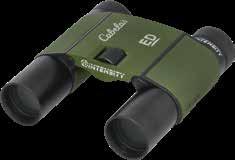

chassis with a textured rubber armor. It measures 4.6 inches long and weighs 10.6 ounces. The ultrawide-band multi-coated lenses maximize clarity, contrast and color. The BaK-4 roof prism features dielectric and phase coatings to fight glare and enhance light transmission. FOV is 236 feet. Eye relief is 13.6mm. Close focus is 8.2 feet. The eyecups are twist-up. It comes with a case, neck strap, lens covers and a cleaning cloth.
This angled spotting scope features a multicoated HD lens system with an ED glass element for reduced chromatic aberration and enhanced clarity. The
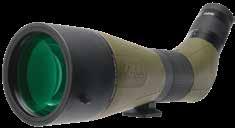
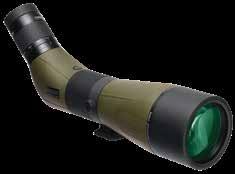
ultra-wide-band coating increases light transmission. The helical focus ring allows rapid and smooth focusing. The rotating body provides multiple viewing positions. FOV ranges from 102 feet to 48 feet. Eye relief ranges from 19½mm to 18mm. It weighs 69.8 ounces. Lens covers, a microfiber cleaning cloth and a neoprene stretch cover are included.
10X42, $99.95
The closed-bridge configuration provides a base for the internal focusing mechanism while the roof prism with BaK-4 glass and multi-coated optics promise a bright image with clarity and contrast. Light transmission is rated at 80 percent. The large center-focusing wheel can be used with gloves. The Exo Barrier lens coating helps to repel water, oil and dirt. FOV is 300 feet. Eye relief is 17mm. Exit pupil is 4mm. The eyecups are twistup. The binoculars are 59.4 inches long
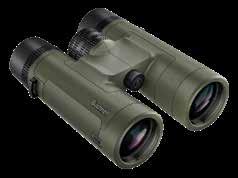
and weigh 20.9 ounces. A tripod adapter is optional. It comes with the Vault Lite chest pack, a neck strap and a cleaning cloth.
LMSS2 Elite Tactical 8-40X60 Spotting Scope, $1,749.95
This compact spotter features a choice of two first-focal-plane reticles and ED Prime glass on an aluminum alloy chassis that measures 12.8 inches long and
weighs 40.7 ounces. It comes with either the Horus H322 or Tremor4 reticle, both MRAD-based. The ED Prime glass was improved over the previous generation LMSS for edge-to-edge sharpness and light transmission. The glass also controls chromatic aberrations and color fringing. Enhancements include a Throwhammer power change lever. A picatinny rail can be mounted on the top or sides for such accessories as a reflex sight. Coatings include ultra-wide-band and EXO Barrier. Close
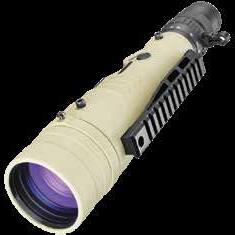
focus is 7 inches. Exit pupil is 1.5mm5mm. Eye relief is 1.3 inches.
www.goview-us.com
This brand founded in 2021 hopes to connect people with the outdoors by sharing photos and videos via a smartphone camera adapter. This latest model features a magnesium-alloy housing and proprietary lens coatings for improved images and colors. The CLOSR smartphone adapter is attached to the PORTR strap so it’s always at hand. It features closed-bridge design

and a BaK-4 prism. It weighs 17 ounces and measures five inches long. FOV is 344 feet. Exit pupil is 3.3mm. Eye relief is 16mm. Close focus is 10.8 feet. It comes in five colors: Sunset Orange, Light Brown, Ruby Red, Phantom Black, and Miami
Blue, shown here. A carrying case, lens caps and a cleaning cloth are included.
www.gpo-usa.com
PASSION 15X50
HD Binocular, $1,429.99
The PASSION line expands with this high-magnification binocular. Features include light transmission rated at 99.7 percent, Double HD glass, a FOV of 266 feet with edge-to-edge sharpness, GPObright lens coatings, center-focusing locking diopter, aluminum eyecup tubes, magnesium micro-bridge and body, a Schmidt-Pechan prism and PASSIONdrop

hydrophobic coating. Despite its high magnification, the binoculars measure 6.9 inches long and weigh 34.1 ounces. Eye relief is 16½mm. Exit pupil is 3.3mm. Close focus is 9.8 feet.
GPO’s two new spotting scopes, the model shown here and the PASSION 16-48X65 ($799.99), are built with the same high-performance optical features as GPO’s riflescopes and binoculars. Those include a magnesium-alloy housing, GPObright lens coating to improve light transmission and

an apochromatic objective lens to enhance resolution and minimize chromatic aberrations. The spotters feature an angled eyepiece, which can rotate in the collar for a variety of positions and keep the tripod lower for stability. The 20-60X85 measures 16.9 inches long and weighs 70 ounces. FOV ranges from 108 feet to 60 feet. Eye relief ranges from 20½mm to 18½mm. Exit pupil ranges from 4.3mm to 1.4mm. Close focus is 18 feet.
www.leica-sportoptics.com
Geovid Pro 10X42
This variant of Leica’s Geovid Pro rangefinding binoculars features a blazeorange housing for visibility. The laser rangefinder factors in barometric pressure, temperature, and terrain features for shots up to 3,200 yards within 0.3 seconds. An 8X42 model also is available for the same price. The binoculars use Applied Ballistics software with connectivity via Bluetooth, which allows integration with the Leica ProTrack system. Based on a magnesium-alloy housing, the optics are enhanced with Leica’s Perger-Porro prism system for color fidelity, contrast and sharpness. Light transmission is rated at 91 percent. It measures 6.9 inches long and weighs 34.2 ounces. Eye relief is 16mm. Exit pupil is 4.2mm. Close focus is 16 feet.
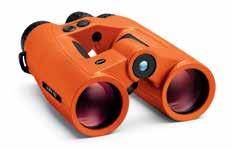

www.leupold.com
BX-4 Pro Guide HD Gen 2 10X42, $599.99
Compact at 5.7 inches long and lightweight at 25 ounces, this model has a wide FOV at 314 feet, Leupold’s High-Definition lenses, multi-coatings including phasecoated roof prisms for brightness, sharpness, clarity, color fidelity and improved
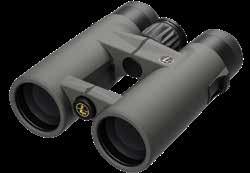
image resolution. Exterior lenses are treated with DiamondCoat 2 for higher light transmission and greater abrasion resistance. The twist-up eyecups can be replaced if damaged or if a different design is preferred — winged, medium, or low for use with glasses. Eye relief is 17mm. Exit pupil is 4.2mm. Close focus is 9.3 feet.
SX-2 Alpine HD Gen 2 20-60X60 Angled, $399.99
This model features Leupold’s Advanced Optical System for dawn-to-dusk light transmission for a bright image and glare reduction. The angled eyepiece allows for comfortable positions. The Form-Fit eyecups come in two sizes — low or winged for blocking stray light. The magnesiumalloy housing is shrouded in rubber armor. It’s 14.4 inches long and weighs 59.9 ounces. FOV ranges from 106.8 feet to 50.8 feet. Eye relief ranges from 19.5mm to 16.7mm. Exit pupil ranges from 3mm to 1mm. Close focus is 32.8 feet.

CS.2A 26-66X85
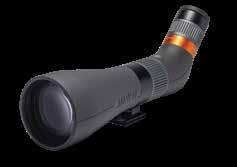

The direct-to-consumer brand’s latest addition to the C series spotting scope line gets a 20mm boost in the objective lens at 85mm while keeping the length and weight relatively short and light at 15 inches and 60 ounces, thanks to a magnesium- and aluminum-alloy frame design. It features the same ED glass as the CS.1 and multi-coated lenses for brightness and contrast. Coatings on the Schmidt-Pechan prism include phase correction. FOV ranges from 113 feet to 56 feet. Eye relief ranges from 16mm to 17mm. Exit pupil ranges from 3.3mm to 1.3mm. Close focus is 16 feet.
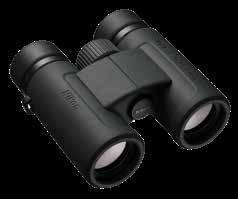
highly reflective silver-alloy coating is applied to the roof prism. The rubberarmored body is a fiberglass-reinforced polycarbonate resin. Eye relief is 15.4mm. Exit pupil is 3mm. Close focus is 8.2 feet.
www.ritonusa.com
3 Primal 10X42, $299.99
The heart of the 3 Primal binoculars is the HD glass optical system with BaK-4 prisms and multi-coatings including full wide band. The system is encased on a rubber-armored PVC-wrapped magnesium-aluminum alloy chassis for strength and light weight. The 3 Primal also comes in an 8X42 model for the same price. Light transmission for both models is rated at 85 percent. Both also share these speci-

fications: 8.2-foot close focus, 5.8-inch length and 26.7-ounce weight. FOV for the 10-power is 341 feet while the 8-power is 420 feet.
www.swarovskioptik.com
EL Range 12X42, $3,549
The range finding EL Range line expands with a 12-power model. Like others in the series, they allow the transfer

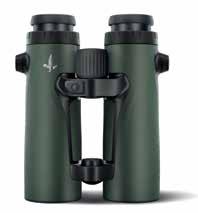
of ballistics data while the tracking assistant shows the area where the last shot hit the target. It also features SWAROVISION technology providing edge-to-edge sharpness, color fidelity and resolution. The Configurator App has to be used to set ballistics. Other settings can be adjusted on the binocular. It can range up to 2,200 yards. Light transmission is rated at 90 percent. FOV is 288 feet. It measures 6.6 inches long and weighs 32.8 ounces. Eye relief is 19mm. Close focus is 16.4 feet.
This bundle includes accessories that could cost up to $200 more when purchased separately. The binoculars also
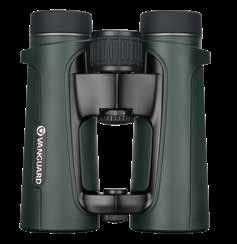
are available alone for the same price. Vanguard is phasing out standalone binoculars and going to all bundles. The binoculars are built around an open-bridge magnesium-alloy frame and include multicoated Hoya ED glass and SK-15 Prisms. The bundle includes a VEO Optic Guard deluxe chest harness, a BA-185 tripod
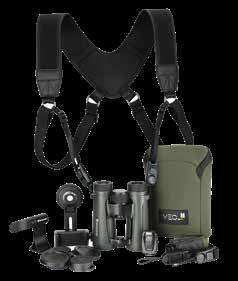
adapter, a VEO PA-62 digi-scoping kit for smartphones, case, neck strap and lens covers. FOV is 340 feet. It measures 57⁄8 inches long and weighs 27.34 ounces. Eye relief is 19mm. Exit pupil is 4.2mm. Close focus is 5.9 feet.
VEO HD IV 82A 25-60X82, $699.99
This angled scope features Hoya ED glass and multicoated lenses. The BaK-4 roof prism is phase-coated. The 58mm eyepiece features an eye relief ranging from
22mm to 18mm. Dual focus controls offer fast fine-tuning. The carbon-composite body contributes to its relatively light weight of 69.1 ounces. An Arca-type base mounting plate eliminates the need for a plate on compatible tripods. FOV ranges from 104.4 feet to 57 feet. Exit pupil ranges

from 3.3mm to 1.4mm. Close focus ranges from 19.7 feet to 21.3 feet. It measures 15½ inches long. It includes a soft-sided carrying bag with shoulder strap.

Razor UHD 10X32, $2,199.99
This model offers a compact solution that delivers the performance of larger binoculars in a carry-anywhere design. It
also comes in an 8X32 version ($2,149.99). Both models come in at 5.7 inches tall and 21.9 ounces. Benefits include the UHD Optical System for edge-to-edge sharpness and pin-point detail and a phase-corrected Schmidt-Pechan Prism to insure light transmission while reducing bulk. They are tripod adaptable. FOV for the 10X32 is 388 feet. Eye relief is 17mm. Close focus is 5.9 feet. Included are a GlassPak Pro Binocular Harness with a rangefinder pouch, modular attachment points, neck strap, lens covers and a lens cloth.


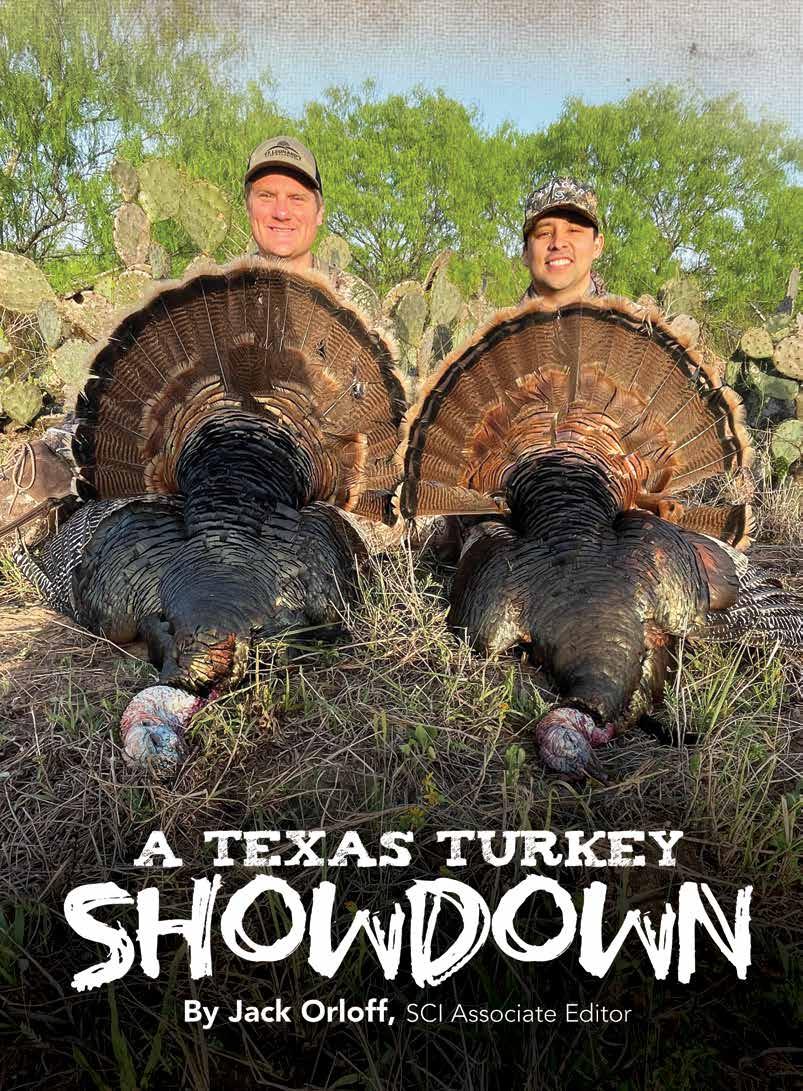

As the sun rose in South Texas, the chorus of Rio Grande turkeys erupted from the live oak trees. SCI Sales Administrative Specialist Jaime Rodriguez, his son Jordan De La Garza and I had tucked into a mesquite tree just off the Sendero at a crossroad, hoping to catch the morning commute in full swing. This would be Jordan’s first-ever turkey hunt, and I could tell he was already excited.
We were hunting on the Cantu Ranch, owned by Jaime’s good friend Dante Cantu. Jaime had told me this ranch had a lot of turkeys on it, but I didn’t fully believe him.
But boy was I wrong!
As it began to get light, we could faintly make out the silhouettes of turkeys in the trees. Hens began purring and clucking sporadically, immediately followed by deep gobbles. From the sound of it, I could tell they were getting antsy and were close to flying down. Suddenly, we heard a “whoosh, whoosh,” and I looked up to see turkeys gliding just a few feet over us. One
after another flew over. It seemed like it would never end.
The flock of about 20 had now landed just 30 yards behind us. Their dialog did not cease as they milled around, playing turkey games with each other. But there was thick brush behind us, so Jordan did not have a clear shot.
I slowly turned around, trying to determine which were long beards through the mesquite. I thought about how we could make a move so Jordan could get a clear shot, but we were surrounded and would spook them if we tried. As I turned back to look in front of us, out of nowhere, a tom swooped down from the opposite direction like a hawk and attacked the jake decoy, knocking the decoy over. The downed decoy confused him as he stopped for a quick look before trotting back towards his turkey friends.
It was pure chaos and the most action I had ever seen off the roost. We were literally covered with turkeys. Just seconds later, another tom appeared from the brush in front of us on the sendero. We were now between the gobbler and the rest of the flock.
This was Jordan’s chance!
As the gobbler cautiously approached, Jordan slowly shouldered the Benelli Super Black Eagle 3. “Take your time, aim for his head, and shoot whenever you’re ready,” I whispered as the gobbler moved closer. The bird stopped at 20 yards, examining the knocked-over decoy. Jordan pulled the trigger, resulting in an excellent shot and his first-ever turkey.

Top:
tracks are always a good sign of a successful
The loud “bang” surprised the flock of birds that had landed behind us. They had not yet taken off, but they knew something was up and were slowly walking away. I quietly began to crawl around the thick mesquite to see if I could get a shot at one of the gobblers before they finally decided to take off. I had barely made any progress when I heard Jordan and his dad whisper, “Right out in front, a gobbler coming right at us strutting.”
I turned back and was astonished to see a gobbler walking down the sendero right where Jordan had just killed his bird. Seconds felt like an eternity as he came to a clearing. After the shot, two mature gobblers now lay dead just feet from each other. We had doubled up just minutes apart. Congratulations and high-fives went around. Jordan’s smile was enormous, and his dad’s was even bigger as we walked together to examine the birds. We walked back to the truck, turkeys slung across our backs, making jokes and replaying what just had happened minutes before.
It never gets old.

Turkeys have great eyesight, so staying hidden and not making any movement is key to success.
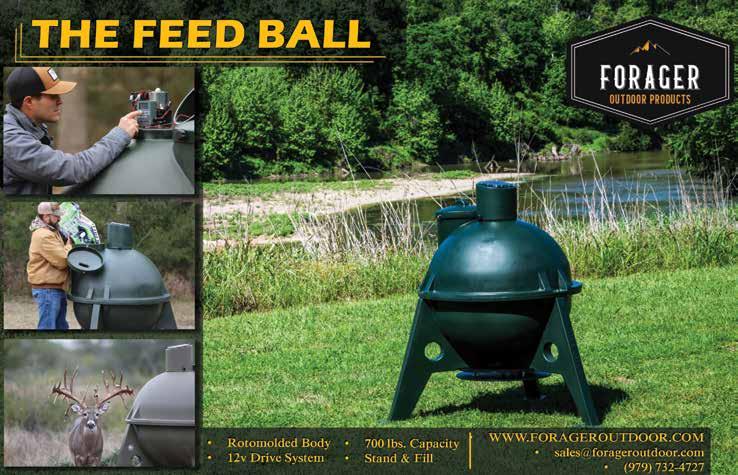




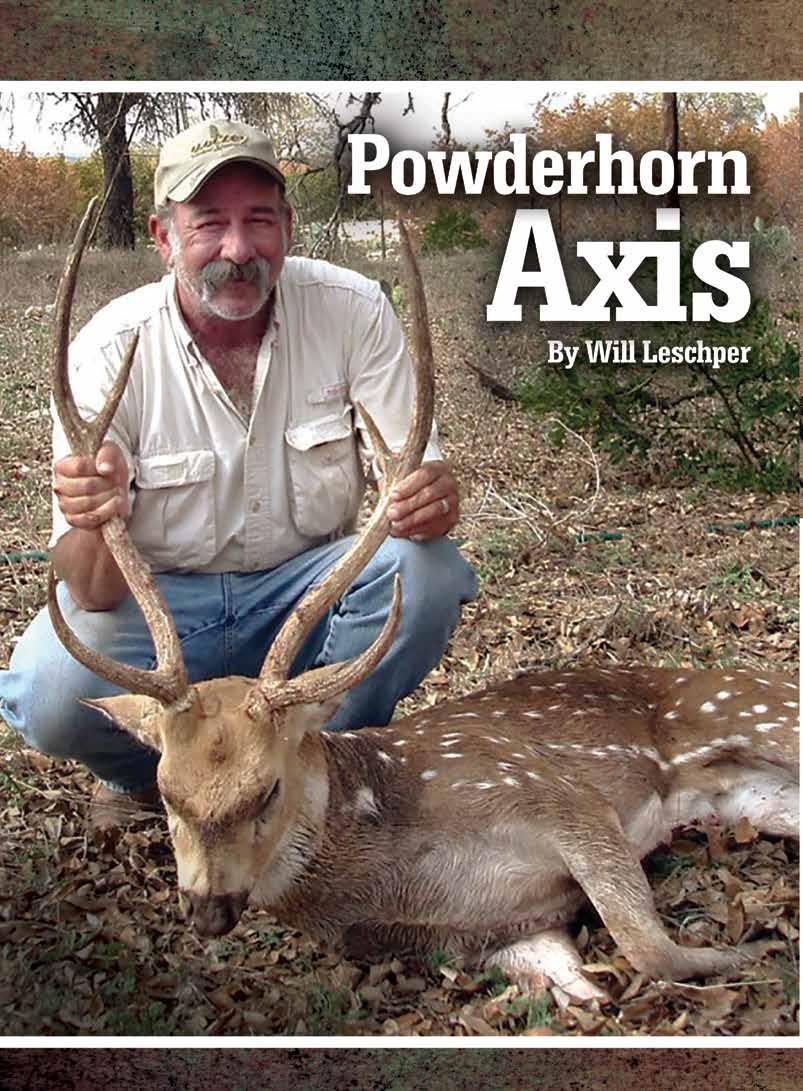
Texas axis deer hunting has become popular as the “other deer.” There remain ample opportunities to hunt the distinctive deer on private property and wildlife management areas.
Texas is axis deer country, plain and simple. While the axis originally hails from the Indian subcontinent – and can be found in other notable locales including Hawaii –the Lone Star state is the prime hunting ground for the nonnative species that has flourished in areas as varied and diverse as the Hill Country and the Gulf Coast.
As with other exotics, including the nilgai antelope and other non-native species, the axis deer—aka chital—was introduced onto the Texas landscape for hunting and esthetic reasons. Axis are suited to the state’s relatively mild winters and hot summers, and they forage on a variety of thriving Texas vegetation—grass, forbs, and browse.
While axis are hunted on high-fence ranches, untold numbers of the deer are killed year-round on open range as well as controlled public hunts. One of the crown jewels of the Texas public hunting and recreation circuit is the Powderhorn Wildlife Management Area, a 15,000-acre piece of prime wildlife habitat in Calhoun County near Port O’Connor. The vast ranch has several miles of bayfront on Powderhorn Lake and Matagorda Bay.
The Powderhorn WMA is the newest addition to the Texas Parks and Wildlife public recreational program. The land was purchased with funding and support from a variety of conservation sources, including the BP Horizon oil spill mitigation effort. The property was then donated to Texas Parks and Wildlife in October 2018 as a wildlife management area, and has since been opened to public hunting, bird watching, and other public purposes.
TPWD offers public hunting for white-tailed deer and exotics
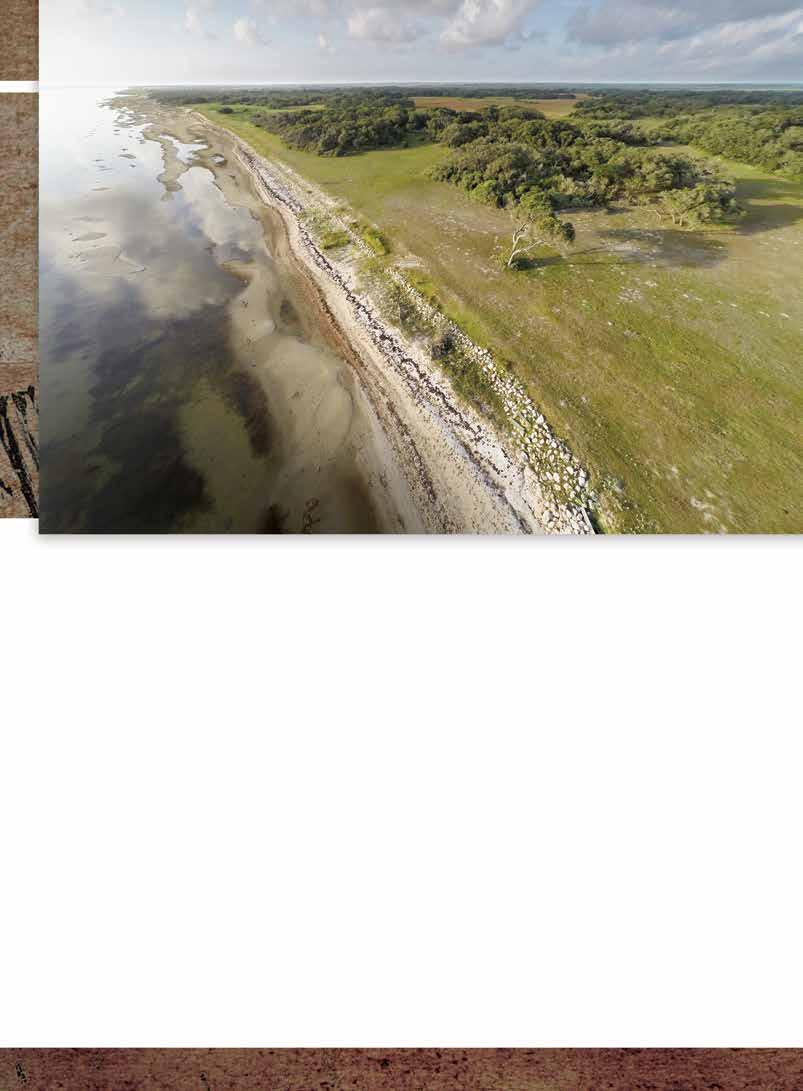
on the Powderhorn through its online public hunting program. The drawn hunts are conducted during fall and winter months, offering hunters the ability to also shoot invasive feral hogs. If you’re drawn for an exotic hunt, the area also has a healthy population of Sambar deer, another large species native to the Indian subcontinent, southern China and Southeast Asia.
The most recent drawings for the Powderhorn, as with other notable public hunting opportunities, show increased interest in hunting the coastal area. More than 9,000 entries were accepted for about three dozen planned exotic permits while more than 5,000 entrants sought permits for the gun deer permits, which allow hunters to also take exotics and feral hogs. Some WMA public hunts also offer standby options should permits not be used by hunters who won a drawing.
In terms of axis hunting on the Powderhorn, the hunts are conducted by “compartment” and hunters are assigned an area or blind, as with other public hunting options. In most cases, it’s the luck of the draw on where you’re allowed to hunt, which can somewhat limit your chances. However, as with axis hunts anywhere in Texas, there are many things to keep in mind that could increase your chances of success.
Both whitetails and axis deer are “crepuscular,” a fancy word meaning they’re most active during dawn and dusk hours. Axis are also known to be active during daylight hours if the breeding season is in full swing. That could mean sitting all day in hopes of a buck coming by looking for an estrus doe. Public hunts are typically limited to only two or three days, so if in doubt, sit it out.
Another phenomenon I’ve both seen and heard from other

The Powderhorn is situated near excellent coastal fishing waters. If you’re lucky enough to be drawn for a hunt, plan to add in extra days to pursue speckled trout, redfish and flounder.
hunters is that axis bucks will typically make a “circuit” around the territory they call home. Unlike whitetails, which may visit a deer feeder or other food source daily, axis often move to differing forage sources and suitable haunts over a few days or even weeks. That can make them tough to pattern, especially on short public hunting timeframes. Axis are not prone to come to feeders, but baiting is allowed during hunts on the Powderhorn.
A sighted-in deer rifle of any popular caliber is the one to tote afield. Axis are larger than your average whitetail, but a well-placed shot from your .243, .270, 7mm-08, or even .30-06 will bring home the besteating venison you can find. The same also goes for a larger Sambar, should one decide to make an appearance, and especially young feral hogs. There’s plenty of healthy discussion about the “perfect” caliber for Texas game, but bullet placement is the key to success and the rifle you shoot best is the one you should carry.
Texas axis deer hunting has certainly become popular as the “other deer” in the many hunting locales where they can be found. If you’re willing to take a chance and support Texas hunting and conservation in the process, put in for the numerous public hunts across the state. You might just earn yourself the “hunt of a lifetime!”
• Hunters must provide their own transportation to and from their hunting blind and hunters must stay within their assigned area. Four-wheel drive vehicles are recommended, especially during wet conditions, but are not necessary to participate in the hunt.
• Hunters must wear a minimum of 400 square inches of daylight fluorescent orange material, with at least 144 square inches appearing on both chest and back and orange headwear.
• Baiting is allowed and encouraged on deer and exotic hunts. Corn must be certified for livestock and wildlife consumption (aflatoxin free).
• Non-permitted visitors and family members will not be allowed on the WMA during hunts.
• Hunters will be responsible for the care of their game after harvest. Facilities for cleaning and skinning deer and hogs are available on the WMA.
• Hunters are reminded that they must have a valid Texas Hunting License as required by statue. Hunters 17 years of age or older must have in their possession a valid ID. Hunter safety education is required of Texas hunters born on or after Sept. 2, 1971.
• Disturbance or removal of plants, rocks, artifacts or other objects is prohibited.
• Alcohol is prohibited on the WMA.
• Camping is not available on the WMA. Adequate lodging is available in Port O’Connor and Port Lavaca.
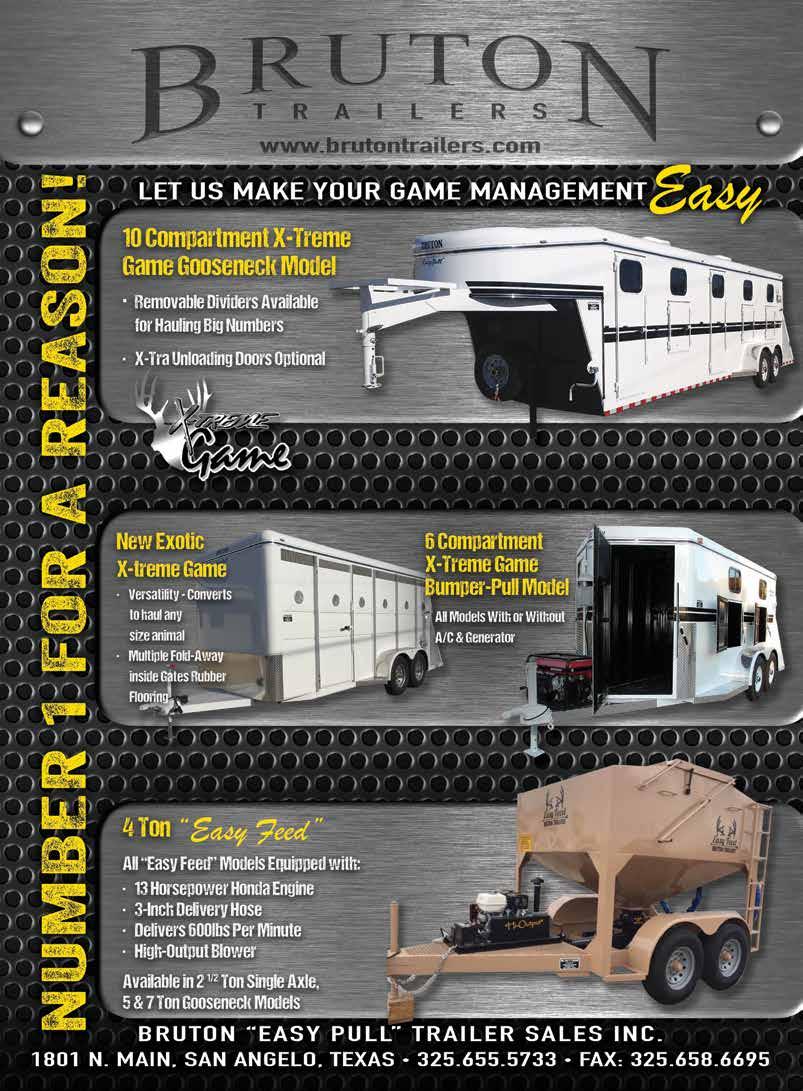
The Running W cattle brand has existed for 156 years.
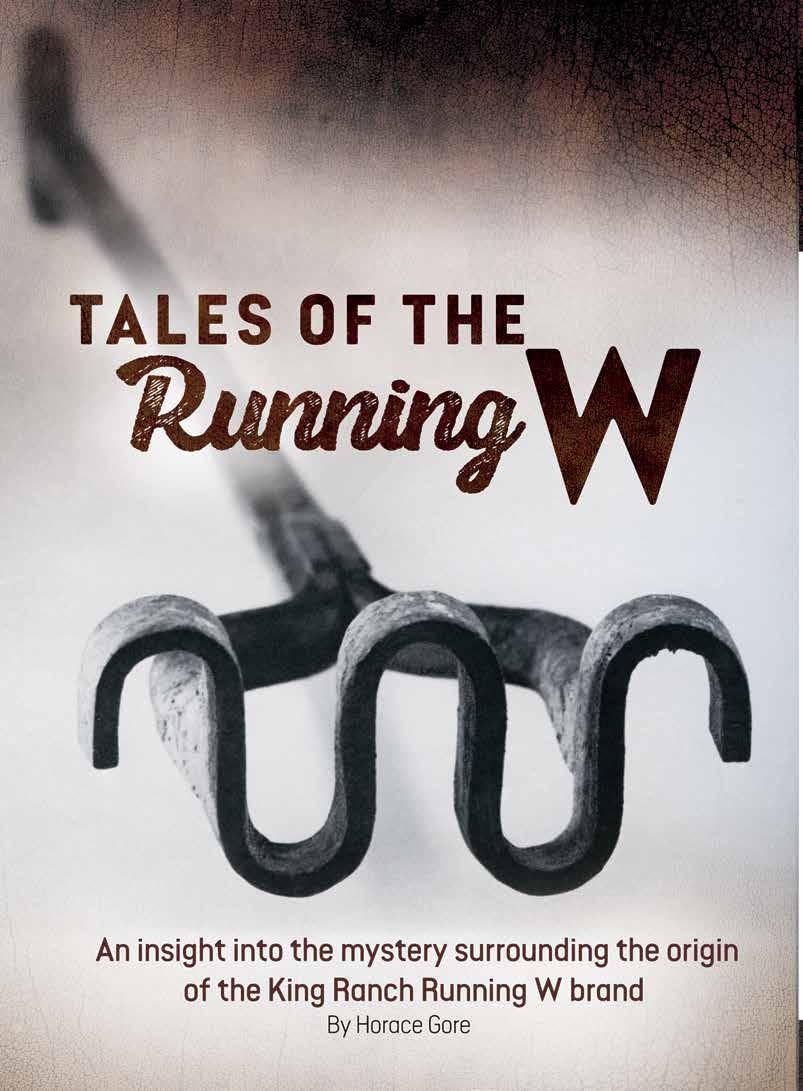

The Running W is arguably the most famous ranch brand in the world, usurped only by the trade logos of Coca Cola, Rolex, and possibly the Wells Fargo stagecoach and sixhorse team. It was one of the many brands owned and used by riverboat Capt. Richard King on his famous South Texas King Ranch. Although King owned at least 28 brands, either designed or bought, the Running W brand was registered in 1869 and became his principle brand when he began to trail cattle by the thousands north to the railheads of Kansas and Nebraska. The origin of the Running W has become a mystery through the years, but a connection of historical dots may shed some light on its origin. A little history leading to the Running W should suffice.
The circumstances surrounding the “Nueces Strip” of South Texas, often called the Wild Horse Desert, where King Ranch was established, came when the Mexican government refused to honor the Treaty of Velasco after San Houston and his Texian army overwhelmed Santa Anna’s forces at San Jacinto. The Mexicans called the treaty a sham, because General Santa Anna was a prisoner of the Republic of Texas when he signed the treaty. After returning to Mexico City and learning the treaty had been denied by his government, Santa Anna retorted that the river named in the treaty was the Nueces, not the Rio Grande, as claimed by the victorious Republic of Texas. Mexico continued to claim the land between

the Nueces and the Rio Grande until Texas became a state nine years later. With Texas statehood, President Polk demanded Mexico honor the treaty of Velasco, giving Texas all land north of the Rio Grande. When Mexico refused, Polk sent the U.S. Army to back up his claim, hence, The Mexican-American War.
The war, which ended with the Treaty of Guadalupe-Hidalgo in 1848, was one-sided as well as the treaty.
The U. S. Government was anxious to have the Nueces Strip settled by Texans as soon as possible. As expected, most of the Mexicans who had land grants in the Strip went back to their home country, either abandoning or selling their property for a song that you could sing yourself. Enter Capt. Richard King.
Capt. King and his partner, Mifflin Kenedy, owned and managed a fleet of steamboats working out of Brownsville and Matamoros, both up and down the river. The boats carried a variety of goods, both civilian and military, but the chief product of transport was cotton. At a time in history when money was hard to come by, King had a cash flow from his boating operations that produced an immense amount of money.
Apparently, King and Kenedy had been thinking of branching out and buying some of the new land that had become available north of the Rio Grande, because in 1852, King was a member of an entourage that traveled by horseback about 170 miles up to the “Lone Star Land Fair” at Corpus Christi. Riding with King was his good friend, Colonel Robert E. Lee, who was
stationed at Fort Clark, west of San Antonio. As they rode, they looked the land over, and while camped on a stream just southwest of Corpus Christi, King remarked that he liked the land he saw. That stream was Santa Gertrudis Creek. Upon arrival at the fair, he and a friend, Texas Ranger Capt. Gideon “Legs” Lewis, agreed then and there to make it into a ranch. The next year, King and Lewis bought the 15,500-acre property for $300, and later added to it 53,000 more acres for $1,800. Lewis kept an eye on the property when King was on the river. Their first brand was an R with an arrow through it (ere flecha), which was never officially registered. They also developed the LK brand (for Lewis and King), which was the first registered King Ranch brand. The second official brand, HK, was King’s wife’s brand (Henrietta King). Lewis remained a partner to King until he was killed in 1855 by the irate husband of a woman with whom he had an affair. The next year, King arranged to acquire Lewis’ half interest in the partnership. King was the kind of businessman who wanted, and needed, partners. Captain James Walworth bought a sizeable piece of land adjoining King’s holdings in 1856, and became a silent partner with King. King and Walworth registered their brand in 1859, along with King’s earlier brands. Another partner came into the three-member partnership in 1860.
King’s riverboat partner, Mifflin Kenedy, also became a ranching partner. Somewhere in all of this, another partner, Charles Stillman, was involved. However, he dissolved his partnership in 1865 and went to New York City. Most, if not all of his interested in the operation had been taken over by James Walworth, who died in Austin in April 1865. His entire estate, which included his partnership interests with King and Kenedy, went to his widow, Jane Walworth. An immediate settlement was made by King and Kenedy, who bought out Walworth’s assets, “lock, stock, and barrel,” for $50,000 cash. This included everything he had owned, including any brands he may have had.
Two years later, King and Mifflin Kenedy decided to dissolve their partnership. In a partnership agreement, they signed a plan for the division of what was left of the steam boating business, as well as their herds, land, and other assets. Kenedy needed land for his share of the cattle, horses, and other stock.
References:
Frank Goodwyn. Life on the King Ranch. 1951. Texas A&M press. 293 pp.
King Ranch Website. History (of King Ranch). 2015. 4 pp.
He bought a 115,138-acre tract of land from the Stillman Estate called the Laureles Grant.
By fall 1869, all of the livestock had been rounded up and divided. According to their agreement, a new brand was required of each partner for the counterbranding of the sorted herds. Kenedy chose his new mark, the Laurel leaf brand, befitting his Rancho Laureles. King chose as the sign and symbol of his new sole ownership a clean-cut, simple mark destined for enduring fame—the Running W.

trucks.
It bears noting the earliest registration of the Running W was February 1869 in Nueces County, four years after buying out the estate of James Walworth. King branded all of his share of the livestock with the Running W a few months after he had officially recorded the brand. Does it take a rocket scientist to figure out where the Running W brand came from?
When I was growing up in East Texas, there was a saying among the locals that denoted a lack of understanding: “He can’t see the forest because of all the trees.” Sometimes we look so hard to find the answer that we can’t see what’s right in front of our nose. For years, I have asked,” Where did the Running W come from?” The answers went from a snake track across the trail to the meandering of Santa Gertrudis Creek and even the horns of a lazy-horned longhorn. The brand has always been referred to in print as the Running W—Walworth. Could it be that King bought the brand in the transaction with the widow Walworth and decided to use it as his principle brand when he and Kenedy split up? King was getting into trail drives to Missouri, Kansas, and Nebraska, and he needed a clean, easily recognizable, quick healing brand to use on the long trail drives—the Running W. The “W” for Walworth makes more sense to me than some made-up notion that the brand resembles a snake track, or an oddball longhorn, or a creek. That’s my opinion, and I’m sticking with it.
Tom Lea. The King Ranch. Vol. l. 1957. Little, Brown and Company. 467 pp.
The Old West Series. The Ranchers. 1983. Time Life Books, Alexandria, Va. 240 pp.


Fran Carabel, Traci Newland and Bob Newland with Bob’s Beceite ibex. Spain has four variations of ibex: Beceite, the Ronda, the Southeastern, and the Gredos.
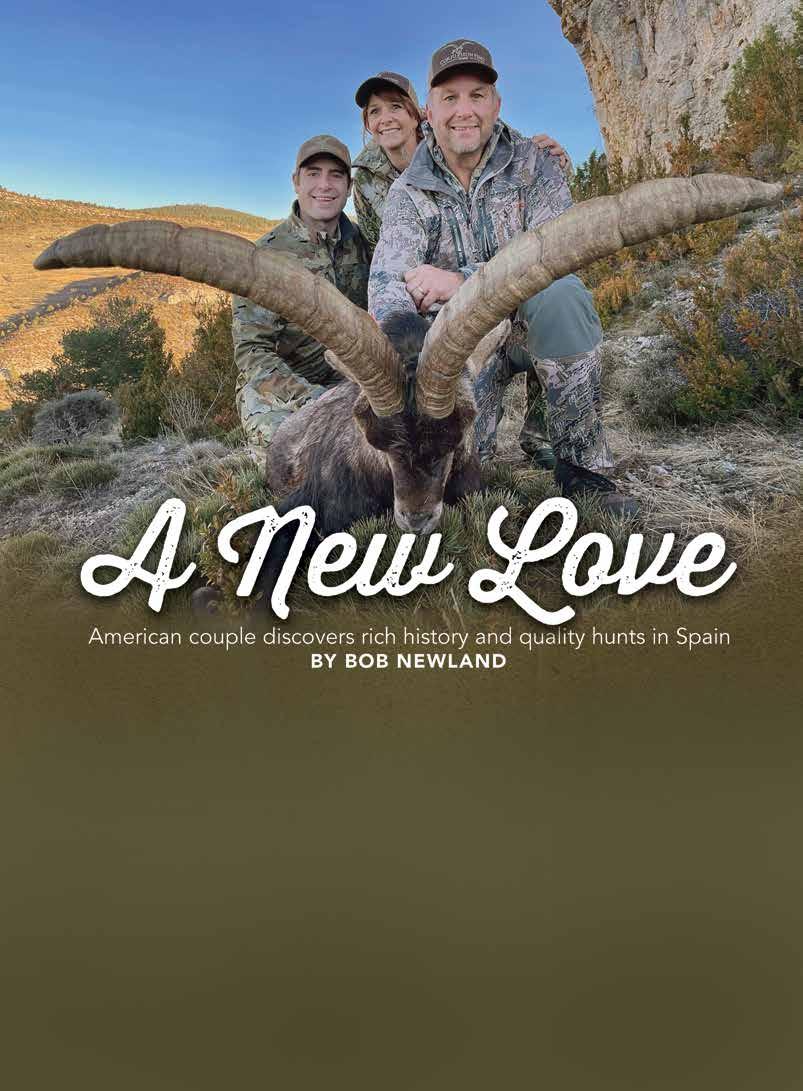

Editor’s note: Originally published in the 2025 March/April issue of Safari Magazine. Bob Newland is a SCI Life member and president of the Garden State Chapter.
Most Americans will mention figures like George Washington or Abraham Lincoln when asked about history. But the history of Europe goes so far back that it makes Washington and Lincoln sound modern age. With fortresses and churches that pre-date Christ, Europe is a history buff’s dream to visit, as well as a hunter’s paradise.
I met Fran Cortina of Corju Hunting years ago. Fran wanted me to visit his home country of Spain. He raved about how good the hunting was there and how much my wife, Traci, and I would love the culture.
Fran was happy to support our local SCI chapter by donating a hunt for a management class Beceite ibex in Spain. A management ibex is typically a young or smaller animal that would not qualify for the record book but would still allow a hunter to check the species off the list.
Traci and I had found Fran’s booth at the SCI Convention a few years ago. He laid out a plan for a Beceite ibex and shared
ideas of all we could do in Spain. I had explained to Fran that if we were going to come to Europe to hunt, we would want to add a few days of sightseeing.
As talks of a hunt continued, I asked Fran if I could add any other species while there. He had access to a ranch where I could hunt Iberian mouflon. We liked the idea as this ranch was a few hours’ drive to a different part of the country. Traci and I discussed the trip, and she agreed to come along. We set dates for late January. We would hunt the two animals and spend four or five days touring Madrid.
Unfortunately, I returned home from the SCI Convention only seven days before our departure with COVID. Many people might have canceled, but I had been looking forward to this for too long. Research indicated that after five days, I was no longer contagious, and I was even able to pass a COVID test before takeoff, so I loaded my carry-on with cough drops and headed to the airport.
When we landed in Madrid, we were met by assistant guide Fran Carabel, known to all as Fran Jr. He would be taking us to the mouflon lodge and guiding us for that portion of the trip.
We drove to Toledo and on to the private ranch. The long en-

trance road took us through the estate and back to an old stone building that served as their lodge. The interior was decorated with mounted red deer, wild boar, fallow deer and mouflon. A stone fireplace burned in the corner of the main room.
On the evening hunt the air was cool as the ranch manager led Fran, Traci and me around the property. We saw red deer and even stumbled across a big wild boar. As we crested a small hill, we could see a group of mouflon ewes grazing on the opposite side of a ravine. We stood glassing and I pointed out a nice ram that made his way out of the trees and quickly disappeared.
We climbed up the back side of a rocky knoll and there about 200 yards away were several mouflons.
We glassed the herd and Fran told me that there were two good rams in the bunch and to get ready to shoot. I lay down and asked Fran for his backpack to wedge underneath my elbow. I had to wait for the ram to give me a clear shot to his vitals.
Patience was rewarding as the ram turned broadside to me and offered me a good shot. The ram dropped in his tracks. We hadn’t spent a night in Spain, and I had already accomplished half my goals.
We went to where the mouflon lay, and I was in awe at the coloration of his hide and the horns he carried. The decision to hunt more than just the ibex was a wise choice. We loaded the mouflon into the truck and returned to the lodge as the sun was setting.
We sat down to a wonderful meal before retiring for the night. Morning came quickly, and we enjoyed a nice breakfast before leaving the lodge. We would spend the night in Madrid and have the whole day to enjoy the city.
Fran took us to visit the Castillo de Escalona. The castle pre-dates the 12th century and was initially a Roman fortress, occupied during the Muslim era. The castle was decisive in the defense against the attacks of the Almoravids and Almohads. Marshal Suchet, during the War of Independence, bombed the castle and began its ruin.
We arrived in Madrid and checked into a very nice hotel, where we were within walking distance of the town square, Plaza Mayor. Traci and I quickly fell in love with Madrid. That night, we had din-
ner at Sobrino de Botin, which, according to the Guinness Book of World Records, is the oldest restaurant in the world. The atmosphere and food were unbelievable.
I was told before the trip that we had to try the roasted suckling piglet. We love trying new food when we travel, but nothing about roasted suckling pig screamed out to me. Nonetheless, we gave it a try. The moisture and tenderness of the meat were excellent, and it had a crispy skin that melted in my mouth. We did not have a bad meal in Spain.
We continued to explore more of Madrid. On our third morning Fran Jr. arrived at the hotel to pick us up. Fran Jr. would be taking us to the ibex camp. We spent the next few hours driving through the Spanish countryside. Eventually, we reached the region of Aragon and entered a small village with a bed and breakfast. In a short time, we were back in the car and headed to the hunt.
We met the local gamekeeper and scouts who had been looking for ibex and had located a couple of possible trophies. The

gamekeeper explained to Fran where they had seen the first ibex along a thickly covered hillside. We glassed without spotting him and assumed he made his way into the thick cover to bed down.
We loaded into the trucks and drove further along the dirt road to the edge of a drop-off. We began glassing and the scouts located two ibex billies lying in the sun. We were about 350 yards away, so we set up a spotting scope to judge the two animals. Only one horn was visible on the larger of the two, so it became a waiting game. After about 30 minutes, the pair rose and started feeding. The scout declared that one was a good billy and that I should get ready to shoot.
A 350-yard shot is not a certainty for me. Also, I was using an unfamiliar, borrowed rifle.
As the shot rang out, I felt confident, but the gamekeeper was saying I missed. Fran whispered, “You hit him good!” The wounded billy was moving on the far ridge, and I hoped he would stop and allow me another shot. He did. At the next shot, he stumbled under a tree line and disappeared.
We couldn’t see the ibex, so I remained poised in case he reappeared. After about 20 minutes with no movement, we made our way back to the truck to drive around closer to where we last saw him. Walking the hills was taking a toll on me. I was feeling worn out, but we made it back to the area and found the ibex dead.
I was hoping for a dark-coated ibex with wide sweeping horns, and so he was! I had two more SCI record book animals to return to New Jersey. We loaded the ibex into the truck and drove back to the lodge. Spain has four variations of ibex: Beceite, Ronda, Southeastern, and Gredos. The conversation around the dinner table was an ibex slam. That obsessive-compulsive nature of mine kicked in, and I gave it some serious thought, but no formal plans were made.
The trip had been a total success already, and we still had three more days of sightseeing to enjoy.
Fran took us to a friend’s business, where they process meat. Then, we went to a vineyard where we were able to sample some of the local wine. Later that day, Fran dropped us off at the hotel. Traci and I walked up to Plaza Mayor to enjoy some evening tapas and cerveza and celebrated another great hunt.


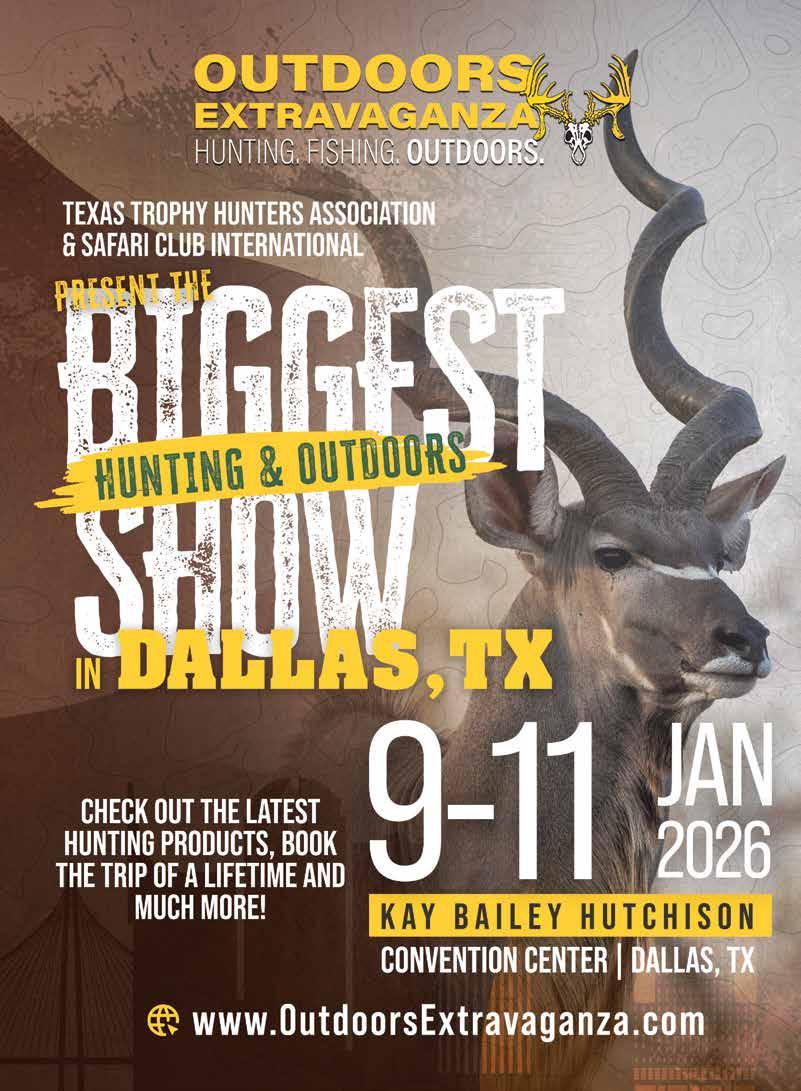

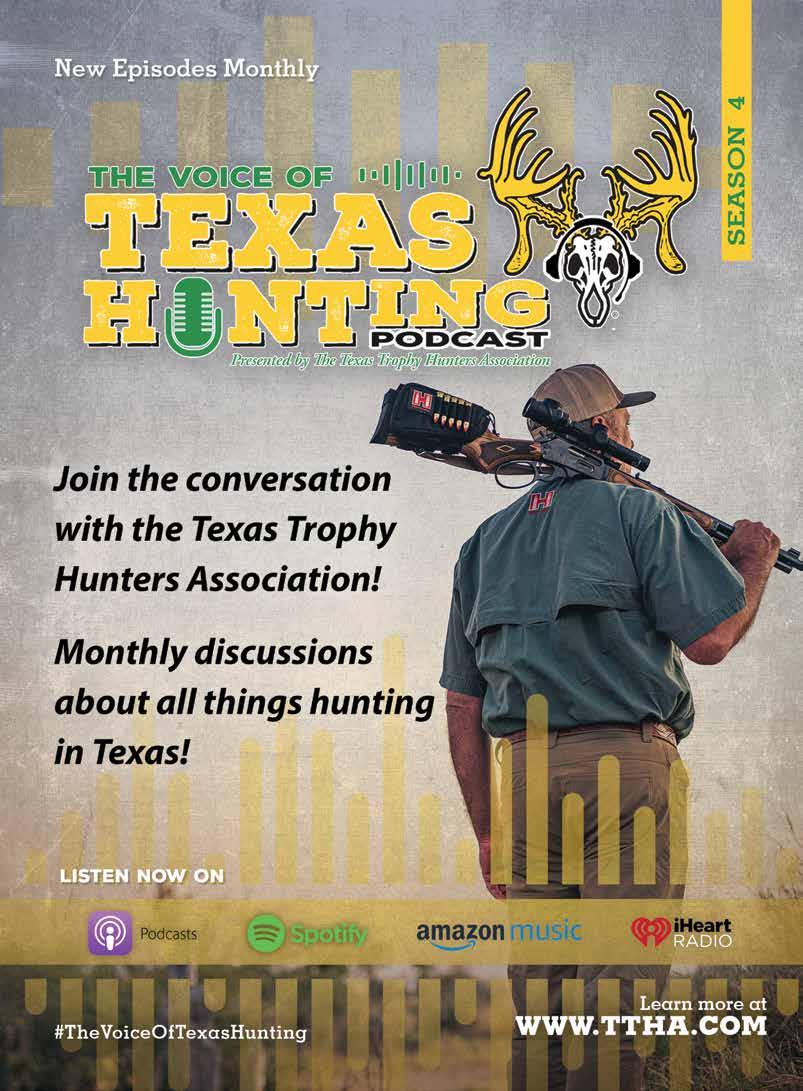

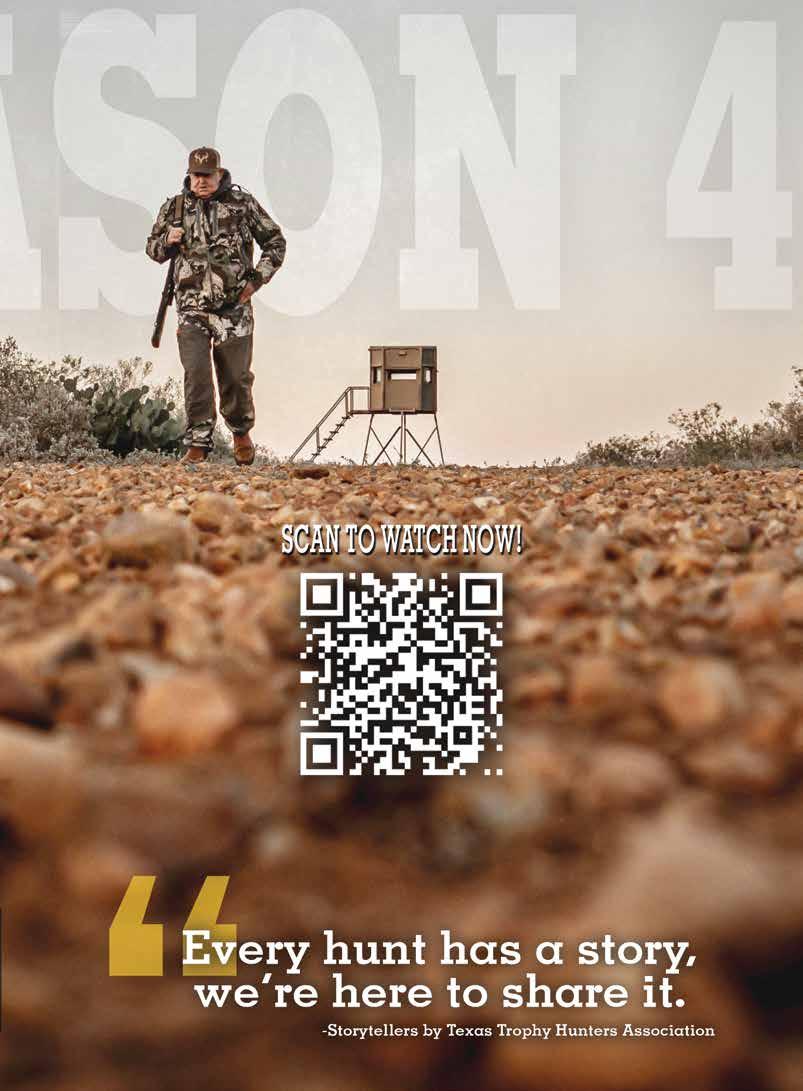
Glassing from a canyon rim last fall, the loud “clunk” sound echoed off the canyon walls. I’d heard that sound before. It was the unmistakable ring of two aoudad rams butting heads. I turned my gaze in the

direction of the sound, but I found nothing.
Again, I heard it, “clunk,” like two big rocks being smashed together. This time, a dust cloud rising behind cedars 300 yards away gave them away. Two
large aoudad rams were squared off and fighting, pushing and shoving each other over yuccas and oak brush. A dozen ewes stood nearby. The date was Sept. 15, prime time to hunt aoudad rams in Texas.

Tom Edgington, left, and the author with Tom’s last day ram. Edgington shot the aoudad from a ground blind in late October 2024.
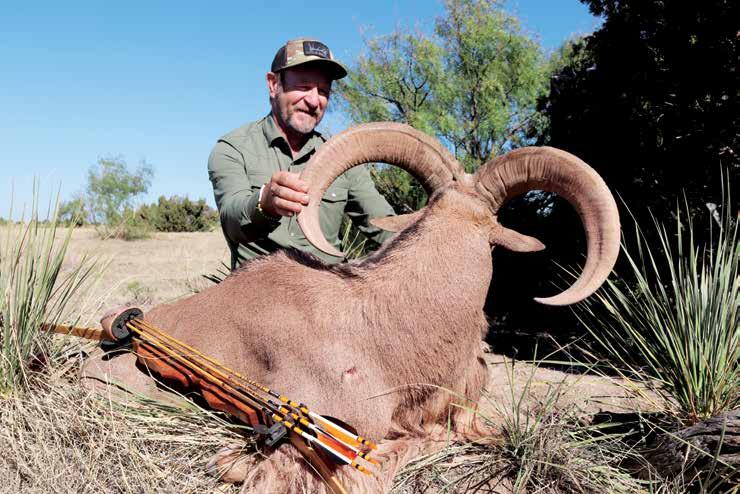
In Texas, introduced exotics like aoudad can be hunted year-round with no bag limit. Free-ranging, wild herds thrive in the mountains of the TransPecos and canyonlands of the Panhandle. With guided hunts now fetching as much as $6,000-$10,000, ranchers have a financial incentive to manage these unique animals. Texas Parks and Wildlife Department does not have a season, tag or bag limit for aoudad.
Despite the allure of hunting them in the winter, when temperatures in the desert are more tolerable, consider September and October. Why? Although aoudad can breed year-round, breeding peaks during these two months and even into early November. In my experience, it’s the best time of year to find a trophy.
Aoudad basics
A mature aoudad ram is a striking trophy. Big males have crescent-shaped horns and flowing beards and chaps that extend from under their chin down
their front legs. Built like a bison bull, their front half is bigger than their back half. Horn bases measuring 12-14 inches and horns measuring 30 inches long or more mark a trophy. The biggest I’ve ever bagged had a longest horn of 35 inches. Such specimens are as rare as 200-inch whitetails, but mature rams sporting horns 29-31 inches are more common.
Mature rams will have a live weight of 250-350 pounds. The biggest I ever weighed was 340 pounds. That ram came from the Palo Duro Canyon. Ewes are approximately half as big as rams with smaller horns.
An aoudad’s sand-colored hide blends well in the desert like a lizard on a rock, so bring quality optics on your hunt. Basic gear for this game includes 10X40 binoculars, a spotting scope and tripod, rangefinder, daypack with a jacket, warm hat, snacks, water, knives, lights, leather gloves, rope, and a camera. Wear merino wool socks with lace-up boots featuring air bob or Vibram soles.
Steven Tisdale with a fine 30-inch ram from the Texas Panhandle. Steven stalked a herd and used his longbow to make a 15 yard shot.

Aoudad rams are stout, tough animals, so pick your bow rig wisely. I recommend fixed-blade broadheads like designs from Iron Will, Slick Trick and G5. Use an arrow with a finished weight of 450 grains or more with a high frontof-center balance to aid in penetration. I prefer stiff 4mm shafts with quality steel or titanium inserts and a 100- or 125-grain point.
Most of the hunters I guide use 60- to 70-pound bows. But I’ve seen 50-pound bows bury an arrow up to the fletching on a broadside ram, so high poundage is not essential. Wait for a broadside or slight quartering away angle. Aoudad vitals sit more forward in the body than most hunters realize.
Last fall, I guided a handful of archers in the red rock canyons of the Panhandle. Hunt dates were scheduled in September and October. Temperatures topped 90 degrees, limiting animal
movement to early and late in the day. While spot-and-stalk is the usual tactic on an aoudad hunt, I’ve learned patience and a well-placed ground blind are a better option for bowhunters.
Pop-up blinds are positioned on high traffic mesas where tracks, droppings and sightings confirm they’re in the area. Aoudad pay the blinds little to no attention. Corn and alfalfa hay keep the herds visiting these locations. A trail camera gives clues on when odds are best to sit and wait. Wind direction is always considered before sitting in a blind. An aoudad’s nose is just as sharp as its eyes.
Veteran bowhunter Tom Edgington endured a couple of slow sits in the blinds with minimal activity last fall. Finally, late one October evening just after sunset, a herd of 40 aoudads swarmed our setup. With three big shooter rams in the mob, Tom was ready to shoot.

The rams were head-butting and constantly moving in and out of our shooting lane under 25 yards. All three stayed behind a wall of ewes and smaller rams where there was never a clear shot. Finally, darkness swallowed the mob.
Two days later, on the last evening of his hunt, Tom got another chance. First, eight ewes and one small ram came over the lip of the canyon to our left. The rut was at full speed now, with every herd having one or more large rams sniffing and mounting ewes. Finally, 10 minutes after the small herd arrived, a bigger ram came from our left.
He nudged a nearby ewe, then turned broadside at 15 yards. Tom’s PSE bow thumped a heavy carbon arrow tipped with a G5 Striker V2 broadhead into the ram’s side. Tom was elated with his firstever aoudad ram, a 30 incher.
With guiding duties finished for the
season, guide Steven Tisdale and I spent a few days in late October and early November looking for a trophy of our own. I passed up several big rams, looking for one specific, scar-faced ram with wide, flaring horns I’d seen earlier in the season. I never got a chance at that ram, but Steven found success with his longbow. Steven glassed a herd late one morning near one of our blind setups. Multiple rams were harassing ewes, grunting like pigs and fighting for breeding rights. Using the cover of a bushy cedar to conceal his approach, Steven crawled within 15 yards of the mob.
When a big, rutted-up ram turned, Steven eased his 52-pound longbow to full draw. The VPA Omega broadhead smashed into the big ram’s tawny hide. Each of the ram’s horns were just past the 30-inch mark. Hunting rams in the rut paid off.

The author uses ground blind setups like this one to ambush aoudad rams near canyon rims in the Texas Panhandle.







The Old Hunter
Texas Trophy Hunters have enjoyed the many exotic animals that roam the Texas wilds for the last 50 years.
Texas has ranch size, climate, and in some cases, gameproof fences, that have attributed to the success of vast numbers of animals from foreign places. The trend started back in the 1930s, when the Schreiners brought Texotic animals to the Y.O. Ranch in Kerr County.
The large ranch was high fenced, and a variety of exotic ungulates were stocked on the arid, rugged terrain for hunting purposes. The most popular were the axis deer, blackbuck

antelope, and aoudad, although there were numerous other Texotics to be hunted for a price.
The King Ranch in South Texas brought the exotic nilgai antelope by rail from the San Diego Zoo in 1926 and turned about 30 loose on the Norias Division. The first animals simply vanished when released, but a second group of animals was held in a pen for several days before a quiet release, and they succeeded in establishing a large herd of nilgai on the ranch. It’s estimated that some 15,000 to 20,000 nilgai roam the King Ranch and adjacent ranches in the Wild Horse Desert north of Raymondville.
Many ranches have Texotics for esthetic values. Some are the scimitar oryx, Japanese sika, red stag, mouflon and Barbados sheep, and gemsbok, to name a few. If you look close you may even see zebras, giraffes, water buffalo, and an occasional ostrich.
Texotic hunting became very popular as early as the 1960s, when several Hill Country ranches advertised hunts—especially the Y.O. and adjacent ranches. At first, axis, sika, and blackbuck were popular, but through the years, aoudad and axis have ruled, along with the nilgai antelope in South Texas.
Nilgai hunting became popular on the King Ranch and continues to provide good blue bull hunting today. The open range animals eventually spread across the Wild Horse Desert where

they are hunted in both guided and DIY hunts on federal and state wildlife management areas.
Although I have friends who have hunted most of the Texotics, my hunting has been limited to nilgai, aoudad, sika, axis doe, and eland cow. I have never killed an axis buck or a blackbuck, but I have been on many hunts for a variety of exotics—some for trophies, and some for meat. Axis and nilgai are exceptionally good eating, as is eland.
Most Texotics can be taken with a deer rifle and good bullets with exception of nilgai. The blue bulls take a lot of lead because of their size, and the lungs are between the shoulders. A good lung shot must go through the shoulder bones, and this requires a tough, fast bullet from a .300 Win. Mag., .300 Weatherby, or even a .375 H&H. Rifles like the .30-06, .264 Mag., and 7mm Mag. with good bullets will do in the hands of an expert shooter but are not commonly used on nilgai bulls.
My last nilgai hunt was with Jimmy Gallagher, Tommy Kaye and Mick Hellickson on the King Ranch where we chased some big nilgai bulls. Jimmy got a blue bull at a waterhole, and Tommy killed a young bull out of a group of four that were in a hard run. In the chase, Tommy aimed at the lead bull and killed the last bull, causing a cloud of dust as the big antelope tumbled to the ground. Jimmy and Tommy were both shooting .375 Mags and got clean kills on both bulls. Hellickson was the
guide, and I was along for the ride.
Jimmy’s bull had 9-inch horns, rather standard for the King Ranch. Tommy’s younger bull had shorter horns, and both went into the freezer. Jimmy had killed nilgai bulls before, but this was Tommy’s first. Bull nilgai make attractive mounts, but the short horns are not impressive.
My only nilgai bull was taken with a .30-06 Model 70 Super Grade, with handloaded 165-grain Nosler partition bullets. We had been stalking nilgai cows on the Kenedy Ranch and found an old bull hiding in the brush about 75 yards away that fell quickly from a neck shot. I didn’t anticipate shooting a bull on the trip, or I would have taken a bigger caliber rifle.
I was hunting nilgai with a local game warden, and we were looking for a cow for meat. The old bull had a broken horn, and didn’t qualify as a trophy, but the meat was good. On two other occasions I managed to get a nilgai cow for the freezer, both with the Winchester .30-06.
My eland antelope hunting is thinner than nilgai. I was invited to hunt a cow eland on the Comanche Ranch near Eagle Pass some years ago. While visiting the ranch on other business, the owner handed me a .300 Rem. Mag. and sent me out with the ranch biologist.
We found a big cow eland across a concrete viaduct that carried water through the ranch. I shot across the waterway and killed the cow, but we couldn’t get to her with the pickup. We returned to ranch headquarters and borrowed a ranch helicopter and pilot to lift the eland out of the brush to a waiting truck. The cow probably weighed 600 pounds and had 30-inch horns. There is a lot of delicious meat on an eland.

My aoudad hunting has involved one big ram and three ewes. All were killed on the Zachry’s Rancho Blanca, south of Laredo. Al Brothers managed the ranch and was cleaning a 1,000-acre pasture of exotics to improve the whitetail herd. He invited me down to shoot whatever Texotics I could find, and I took my .257 Weatherby, a very nice Texas rifle.
Al and I found a sika buck walking the high fence, and I gave him the coup de grâce. The old buck was rutting, and I smelled him before we got to him. I took the antlers and some backstrap, along with a hindquarter. I later cooked some hindquarter, but I couldn’t eat it. I gave it to my black Lab, but she just smelled it and walked away, so the ’coons finally ate it. An old rutting sika is bad, but the backstrap was tolerable, and I put the six-point antlers on a plaque.
While on the ranch, I hunted three days for an old aoudad. Al put me at a sandy spot where the aoudads had been wallowing and I sat morning and evening waiting for a chance at an old ram. Late on the third evening, I was sitting on the ground against some brush, when he finally showed. Like a ghost, he stood by an old wooden feeder—coming in from nowhere. I carefully put the crosshairs on him at about 80 yards and squeezed the crisp Weatherby trigger. The 117-grain Hornady hit him behind the shoulder, and he collapsed. I went to the

thrashing aoudad, as he kicked up a cloud of dust, and pulled my Buck knife and stuck him. It was over. Aoudads are tough and hard to handle, as I found out.
The old aoudad had 30-inch horns, which were trophy size. I took the horns, gave the cape to a taxidermist, and took the meat to the ranch hands for tamales. Later, I killed a couple of young ewes for meat, and I was surprised how good a female aoudad can be as bacon wraps and fried backstrap. Like all ungulates, the females are always the best eating, and I never turned down a hunt for an aoudad ewe.
In my wildlife biologist days, we often had a project going in the Hill Country, and we would sometimes kill an axis doe and cook the meat in a variety of ways: bacon wrapped, fried, and BBQ. The only Texotics better than axis are nilgai and eland, but they’re all delicious.
I always planned to hunt a big axis buck, but never did. And, for some reason I never cared to take a blackbuck, although 20inch spiral horns make a good trophy, and the meat is tolerable.
The old Webb County aoudad’s sweeping horns decorated my trophy room at the Kokernot Ranch for many years, along with a big Colorado bull elk, the stinky sika buck, an 80-inch pronghorn, and about 20 or more trophy whitetail and mule deer bucks. So, you don’t have to leave Texas to hunt some trophy animals that taste good, and if you’re thinking about a Texotic hunt, go for it!
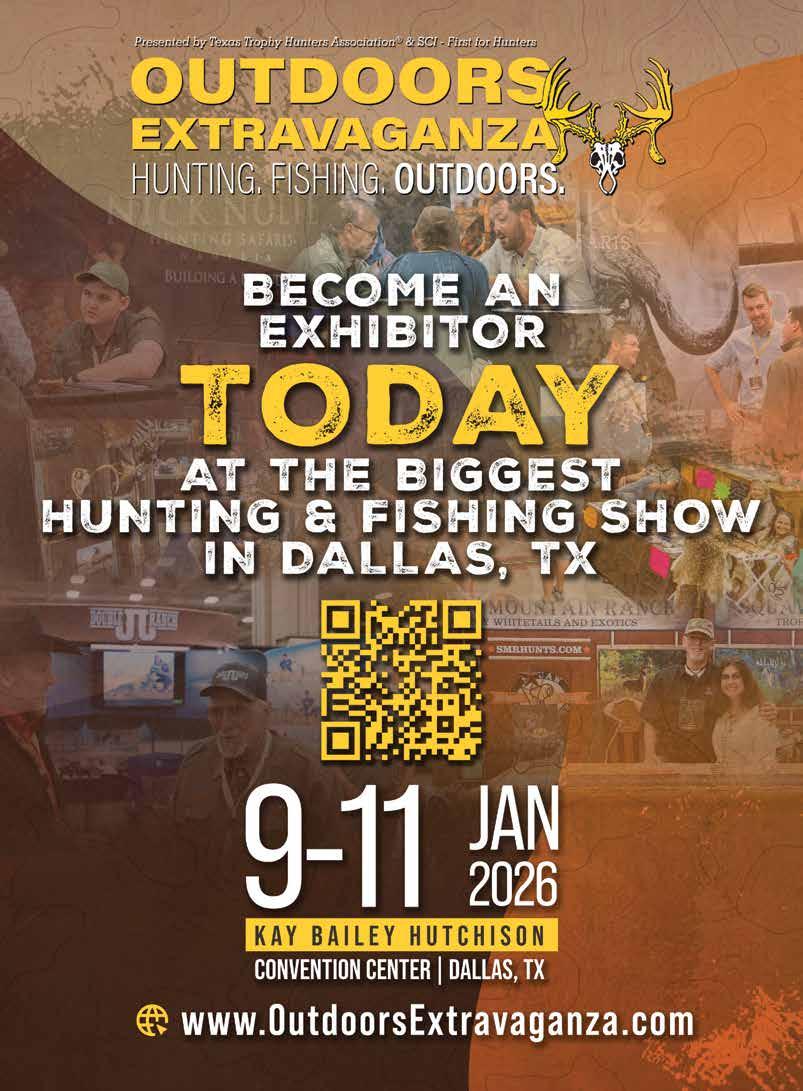

• 1½ lbs. hog backstrap, silver removed. Hindquarter steak from young pig may also be used.
• 2 eggs
• 1 cup (or more) flour
• Cooking oil
• Salt and pepper

Do you have a favorite Wild Game recipe that you would like to share with our readers? If so, please type or print recipe and send to:
Texas Trophy Hunters Association, ATTN: Editor 654 Richland Hills, Suite 160 San Antonio, TX 78245
Cut meat cross-grain ½-inch thick in 3x3-inch pieces. Carefully pound each piece with meat tenderizer, or edge of saucer on a wooden backboard. Tenderizing meat is very important. The more tenderized, the better. Salt and pepper pieces to taste. Beat eggs in bowl; put flour in flat plate or pan. Heat 12-inch skillet to medium heat with ½-inch cooking oil heated to frying.
With fork, dredge each piece of meat in flour, then in egg, then again in flour. Fill skillet with meat and cover with lid. Fry and turn each piece until golden brown and place in bowl on paper towels. Do not overcook.
Gravy recipe: Pour oil from skillet, leaving all trimmings and 3 tablespoons of oil. Heat to sizzle, and add 3 tablespoons of flour. Stir mixture over medium heat until golden brown. Add sprinkle of salt and black pepper. Add enough milk, and water, to make a skillet of gravy.
Turn heat to high and boil gravy, stirring continuously. If too thick, add milk; if too thin, add flour, stirring until gravy gets to preferred thickness. Remove skillet from heat and serve gravy from skillet. Note: HEB or McCormick gravy mix can be substituted. Follow directions using oil and trimmings from cooked meat with mix in skillet.
Serve for breakfast with scrambled eggs and hot biscuits. Serve for lunch or dinner with appropriate sides. Leftover meat makes good sandwiches.
Note: Recipe may also be used with good cuts of young or female aoudad, venison, two cut-up cottontails, or two wild turkey breasts cut in 1x4-inch strips.







ANDREW LAHASKY: whitetail 11-point with 16¾-inch inside spread taken 10/4/24 in San Saba County.
GEAR: Mathew phase 4 bow, 100-grain G-5 broadhead.
OUTFITTER: self.
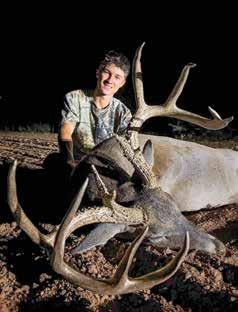
HUNTER MCWILLIAMS: Whitetail 12-point scoring 172 2/8 gross B&C taken 10/25/24 in Foard County.
GEAR: .243, 95-grain Hornady ammo.
OUTFITTER: dad.
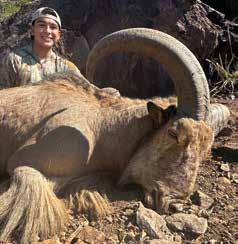
DREW BONILLA: aoudad taken 10/14/24 in West Texas.
GEAR: .300 PRC.
OUTFITTER: dad.

MATT MCCURLEY: whitetail 13-point scoring 156 2/8 B&C taken 10/13/24 in DeWitt County.
GEAR: Beruga integrally suppressed .308 (SWS Rifles).
OUTFITTER: Haun Ranch.

LONNIE BROOME: whitetail eight-point with 19¾-inch inside spread taken 11/28/23 in Navarro County.
GEAR: .270, Vortex optics. OUTFITTER: self.

NATALIA REYES: whitetail eight-point (first buck) taken 11/3/24 in Comal County.
GEAR: Prime Archery NXT bow, CBE tactic sight, Shrewd RevX stabilizers, Scott Baby Horn release, Easton Sonic 6.0 arrow, Kudu Contour 100-grain point broadhead.
OUTFITTER: Songbird Ranch.
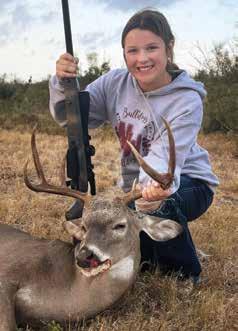
LEIGHTON NEWMAN: whitetail eight-point taken 11/2/24 in Webb County.
GEAR: rifle.
OUTFITTER: family ranch.
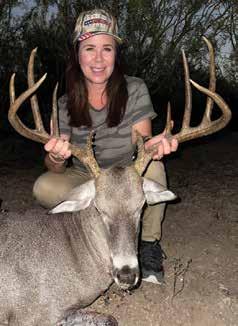
TRACY STEPHENS: whitetail 10-point with 20-inch inside spread taken 10/26/24 in La Salle County.
GEAR: Bowtech bow, Montana
Black Gold sights, Interloc Falcon broadhead.
OUTFITTER: Charco Marrano Ranch.
NOTE: Only members of Texas Trophy Hunters Association or immediate family may submit photos. Do not paperclip or staple photos as this can damage them. Prints must be no larger than 4x6 inches and printed on photo-quality paper. No photos will be returned. Photos may also be e-mailed to HuntsEnd@ttha.com. If sent by e-mail, please make sure to include all information from the form below and limit your photo size to less than 5MB. Send a separate e-mail for each entry.
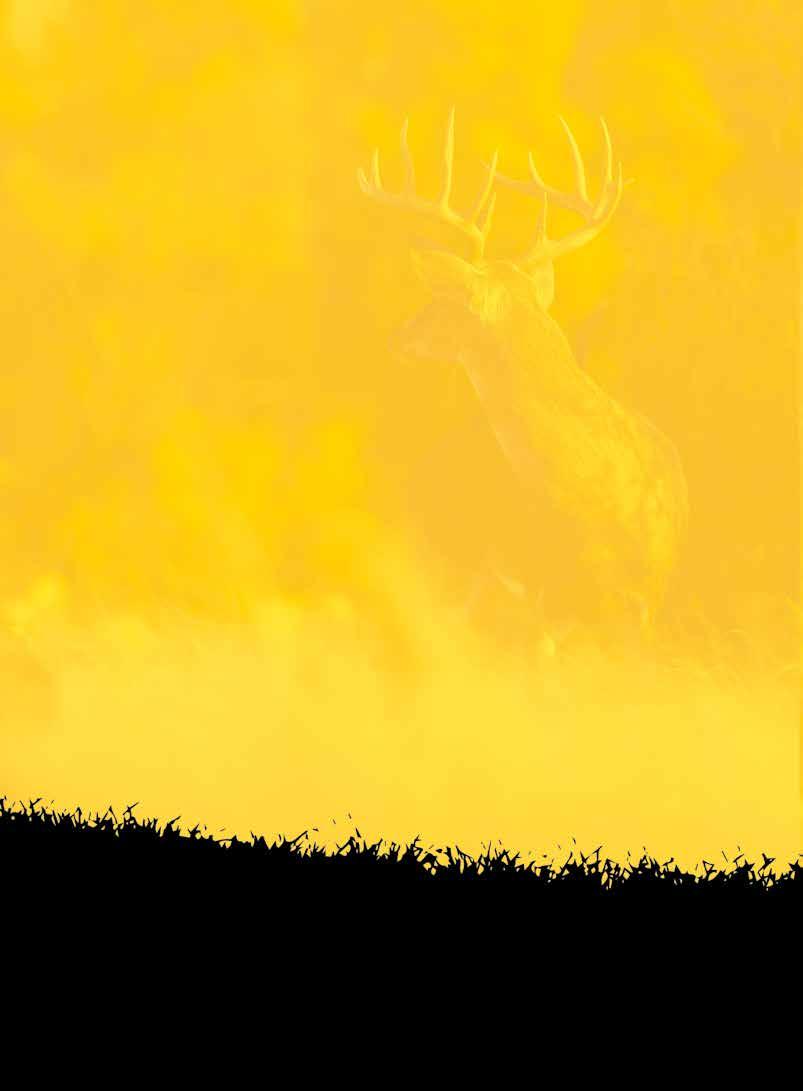


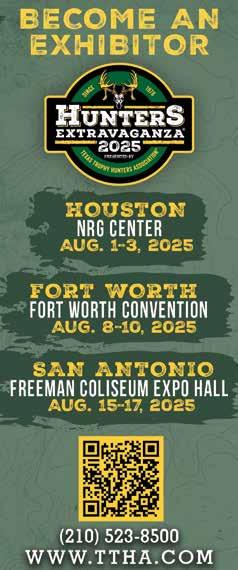




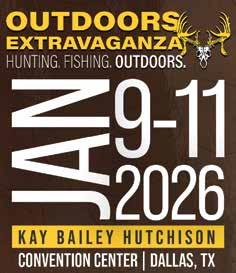
Don’t forget to use your free classified ad! It’s once per year and you must have an active membership in good standing. Send to:
You may fax your ad to (210) 523-8871, Attn: Debbie Keene or e-mail to Deborah@ttha.com. Send your ad in by July 15 to run in the next issue!

Available to current members of Texas Trophy Hunters Association only! Limit 25 words per ad. Each member may run 1 FREE ad in one issue per year. 25 word ads after FREE issue are $40 each. WE RESERVE THE RIGHT TO EDIT OR REFUSE ANY AD.
RUGGED EDGE BLADES - a husband & wife Veteran owned company offering beautiful, quality Damascus knives at a reasonable price. Whether you’re out on a hunt, or at the campsite cooking, we have the perfect knife for you. Backed with lifetime warranty and #1 customer satisfaction! Find us at www. ruggededgeblades.com or give us a call at 682-239-0137. Rugged Knives for Rugged Adventures.
SPECIALIZED INSURANCE for outdoor recreation & hospitality businesses. Hunting & fishing lodges/preserves, guides, outfitters, ranges, & more. Comprehensive coverages incl. property, general liability, business auto. Contact Devin 361-208-4404 or devinp@jacobs-weber.com.
LOOKING FOR CHEAP small acreage to hunt this fall rifle deer season near Milam or Washington counties. Call/text Scot at 9979-530-2921.
RANCH FOR SALE ,Oklahoma, 3627 acres, 2400 Acs. High fenced, trophy whitetails, 2-20 acre lakes, hunt year round. Southwest Ranch Sales. 972-542-8511.
WEBB COUNTY High Fenced 600 acres guided weekend deer and dove hunts (160-220 class deer). Booking now for 2025. 956-235-3598.
LIMITED EDITION Book. SCI Past President Craig L Kauffman takes the reader on hunting adventures around the world. Signed copies $57. Call 717-917-8173.
BIG TIME HUNTS – World-Class adventures across Southern & Northern BC, Canada! Hunt Stone Sheep, Moose, Goat, Cougar & more. All-inclusive, guided packages. Book your hunt today! www.bigtimehunts.com | bigtimehunts@gmail.com.
KEI VALLEY SAFARIS offering plains game in the Eastern Cape of South Africa. Package hunts or build your safari. Deep sea fishing, photo safaris,
and park excursions available upon request. Keivalleysafaris@gmail.com. Keivalleysafaris.com.
WANTED: T.T.H.A. belt buckles, Texas Big Game Awards Record Books, & a copy of September/October 1999 Journal with “El Jéfe” on cover. Call 662-310-5295 or email bowhuntrcfneill@yahoo.com.
AOUDAD HUNT! Hunt free ranging aoudad in Llano County. Hunts begin in late August thru late October, 2025. Nice accommodations. For additional info, email darrellsteffek@gmail.com
WILDLIFE & HABITAT Consulting. Commercial hunts available. Contact Certified Wildlife Biologist Jason Shipman 210-508-8447 or jasonashipman@gmail. com.
DURABLE HUNTING BLINDS for the Dedicated Deer Hunter! The Blynd hunting blinds can be counted on for long-lasting durability that will not fail you in the field and provide the cover needed at an affordable price. http://www.blynd.com/ 1-800-458-0263.
HILL COUNTRY ADVENTURES offers quality trophy exotic hunts on family land. First class lodging and meals. Visit us at: hillcountryadventuresllc.com or call: 337368-4686.
AMERICAN FEEDER - Fish Feeders. Catch and grow larger, healthier fish. All new aluminum fish and deer feeders from American Feeder. Visit http://www. american-feeder.com for details.
RESERVE RANCH, a Sportsman’s Paradise near La Pryor, Texas offering full service hunts for Whitetail Deer, Red Stag, Dove and Quail to individuals and Corporate clients. www.reserveranch.com.
JOIN THE MISSION! Support our veterans and first responders with outdoor adventures through Patriots First Outdoors.
Donate or become a member today at www.patriotsfirstoutdoors.org.
MAP MY RANCH specializes in developing printed maps for all your outdoor needs. We can create basic boundary maps, or those with customized features - locations of deer blinds, feeders, food plots, ponds, etc. Contact today to get started! www. MapMyRanch.com or 713-302-2028.
VETERANS CREED OUTDOORS Team Texas. Outdoor Trips for Veterans and First Responders. Find us on Facebook on our page and group.
HELP FEED THE HOMELESS – donate excess game animals to feed the homeless, orphans, and needy families. Go to www. trinityoaks.org “contact us” tab.
MEXICO RANCH: 8,500+ ac Ranch available for serious & management minded Group. Excellent Whitetail - Density & Genetics, Blinds, Feeders - Corn & Protein, 4 Bdr House exclusive for Hunt Group! Protein fed for last 2 years. Exc.Ranch for 4 Hunters. 210-379-7510. email: jharlan29@ gmail.com.
THE LONE STAR Bowhunters Association. Preserving and Promoting bow hunting in Texas since 1974. Join today at www. lonestarbowhunter.com. Take a kid hunting.
S & D WHITETAILS – Limited hunts avail. Booking 2021 now. All native S TX deer from 140-230 class. Deer & Dove hunts Central TX. Over 7500 ac. 24-yrs experience. 5 Star rating. 325-642-7596.
AFRICAN SAFARI $2,995 3 animals in 1 week. Lodging, meals, open bar, guide, airport transfers and trophy fees included!! Call 956-867-4964 for details. www. matorisafaris.com.
TEXANS ARCHERY CLUB wants to expand our state’s archery range infrastructure. Looking for local partners/land to expand our network. www.TexasArchery.info 501c3.



